
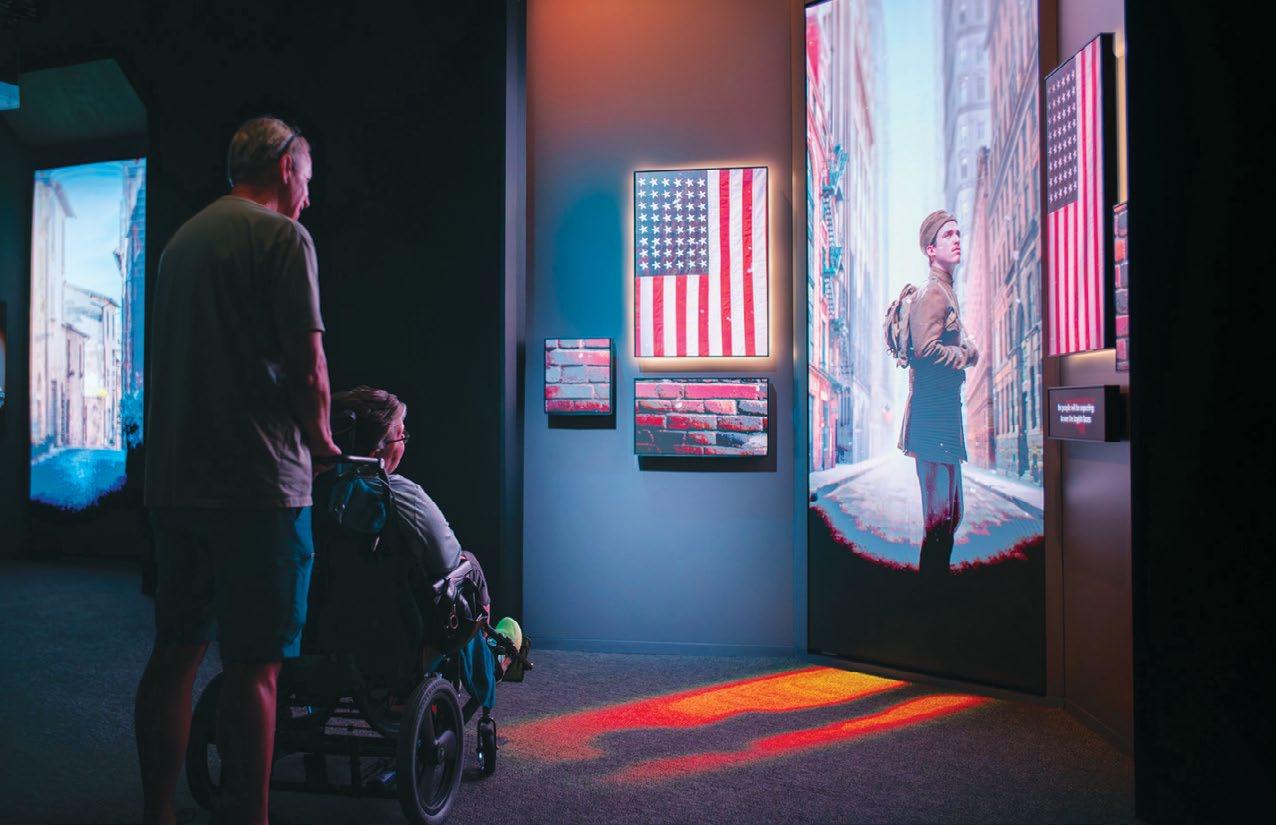





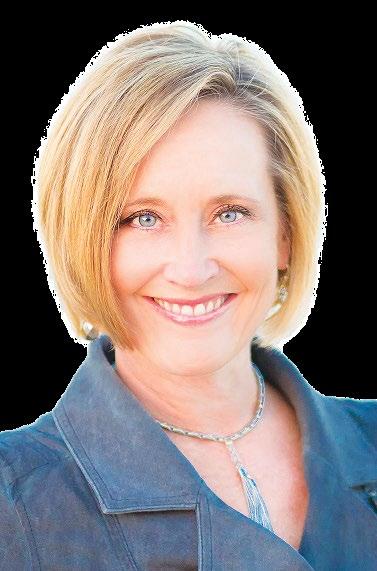

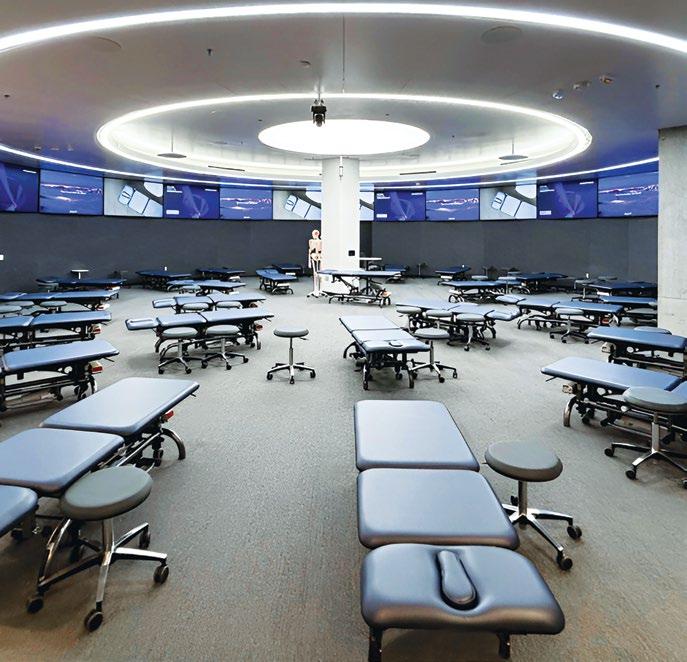

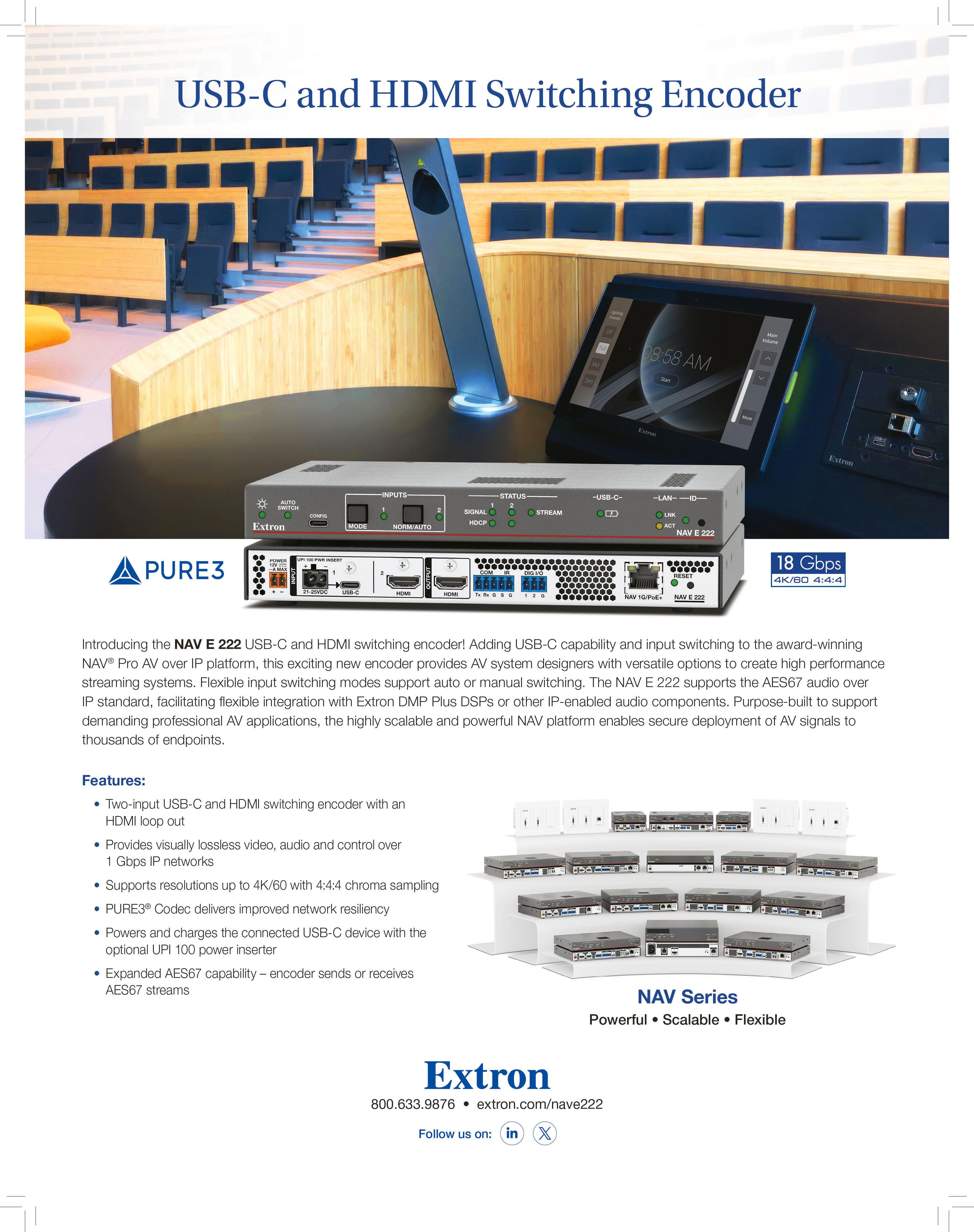







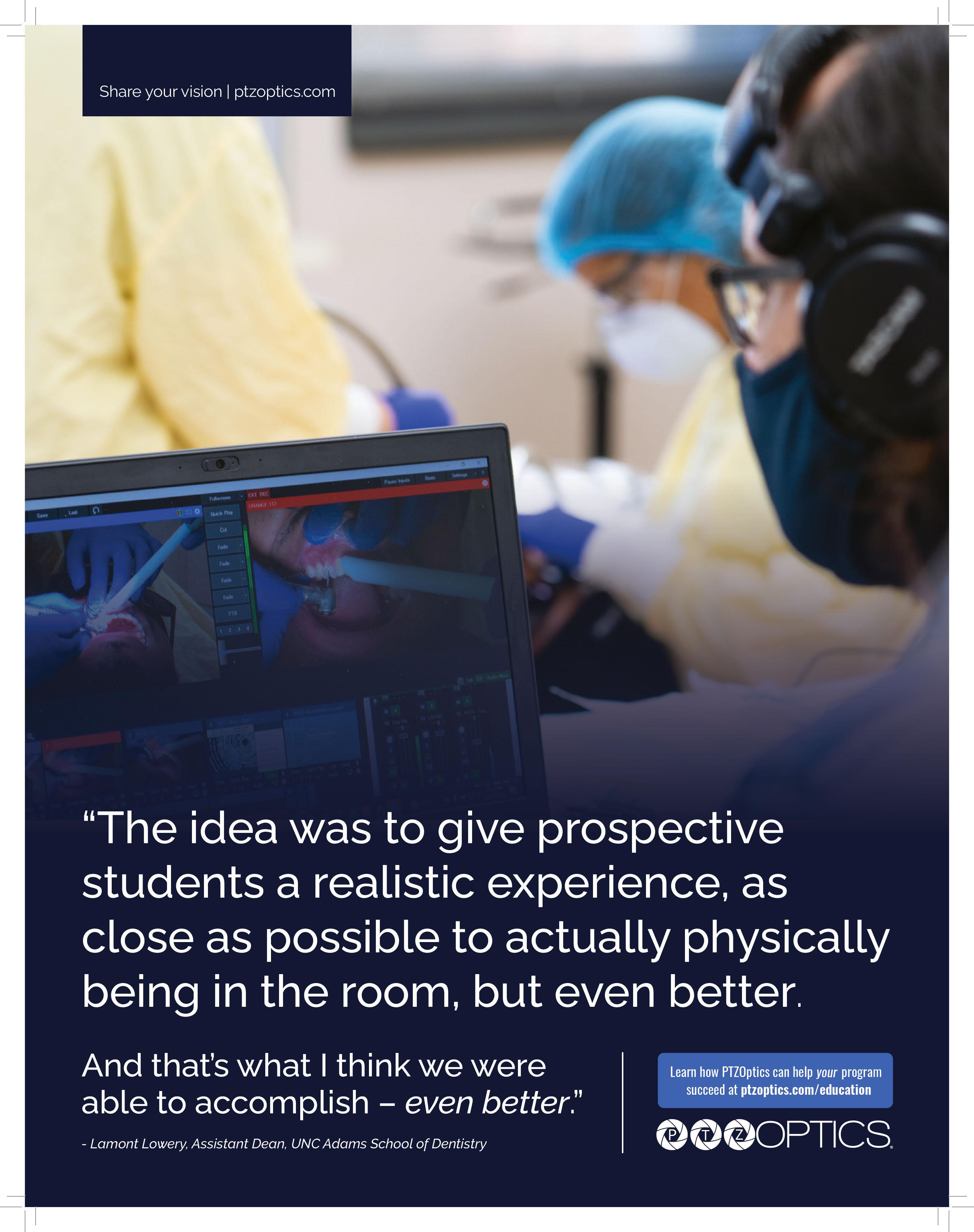


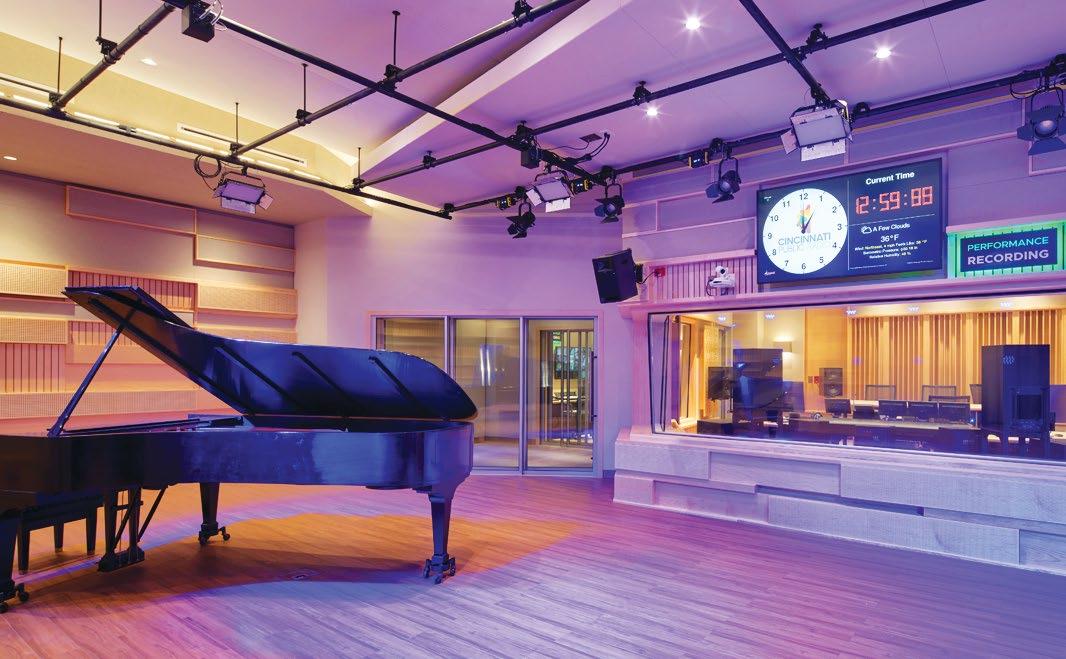
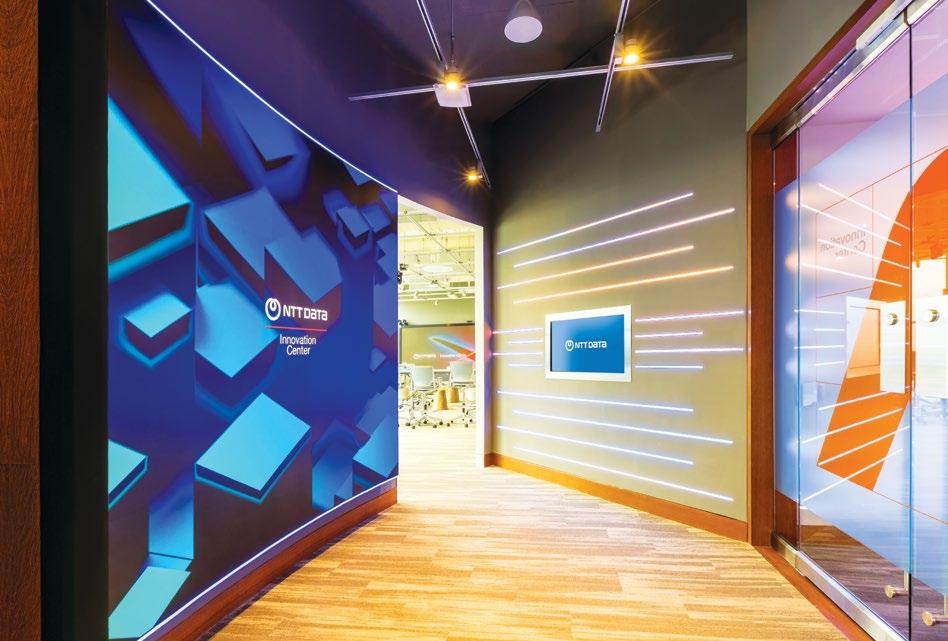
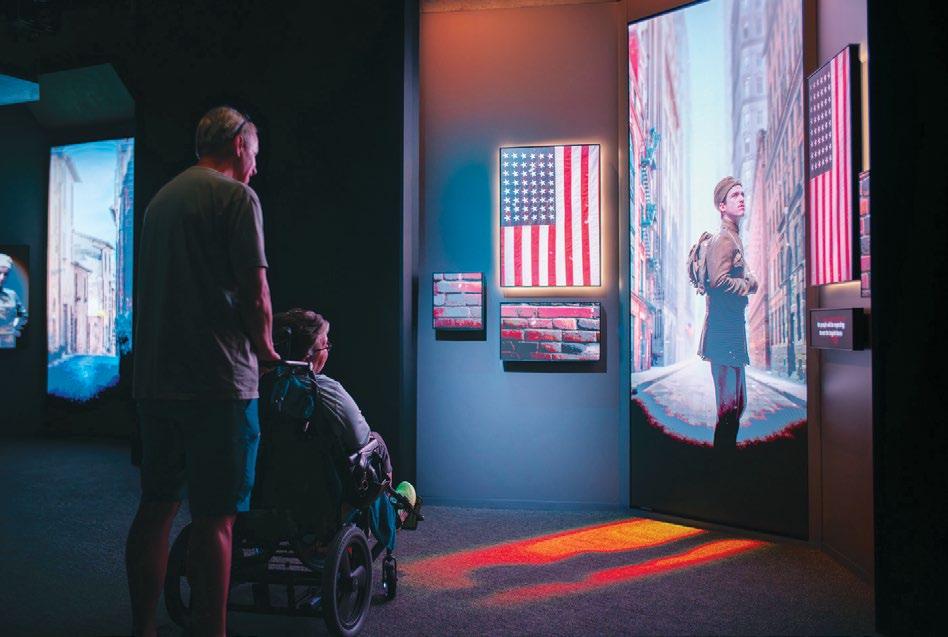
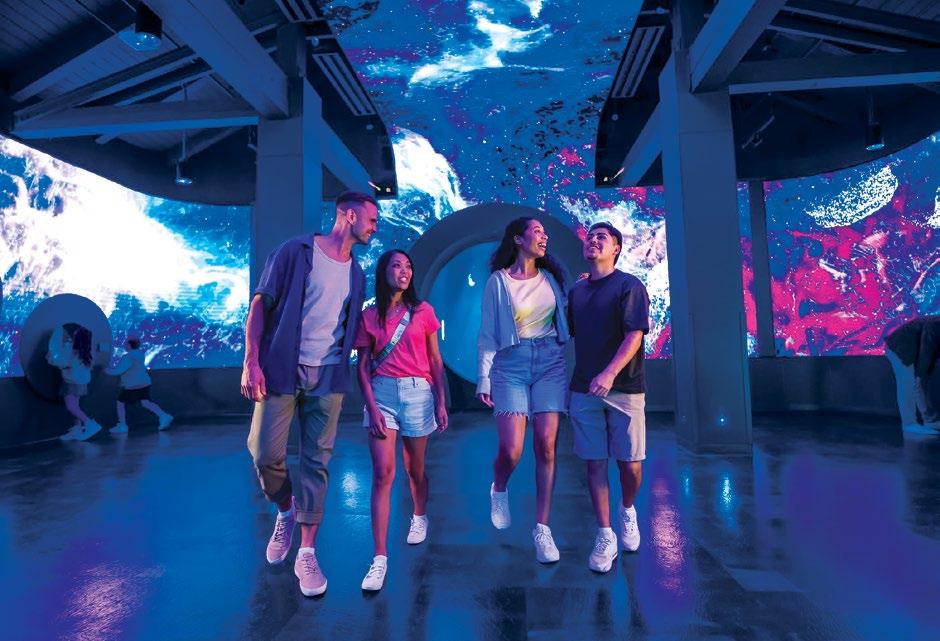
Mark J. Pescatore
Jennifer Guhl
Robert Detwiler
David J. Danto

Mathew Newfield

MARK
I’ve written about air travel in the past, specifically about the painful exercise of trying to get off the plane in an efficient manner once it’s landed. For today’s rant, I’d like to focus on the embarkation process.
There used to be a method to the madness. Start in the back, load us in a few rows at a time, and fill the plane logically and efficiently. Add a few stragglers at the end who still don’t believe they will ever hit traffic going to the airport and we’re done. Close the pod bay doors, HAL, and let’s get started on that generous portion of peanuts.

X x.com/scnmag
But no. Efficiency leaves little room for special treatment—and in this day and age, we must all be special. I wouldn’t say that includes me, as I’m a perennial Zone 6 kind of guy, but those Zone 8 folk look mighty envious.
I fly frequently—not as much as some, but more than most. As a result, I have a pretty consistent routine for boarding. Right before I actually step into the aircraft, I remove my backpack, remove my tablet from my backpack, and carry them the rest of the way to my seat (the Jabra headset is already in place). That way, I don’t strike several of my fellow passengers when I try to remove my backpack in the aisle. It also means I’m ready to stow my gear, be it in the overhead bin or under the seat in front of me, as soon as I’m in position.
Stow the bag, scoot out of the aisle, sit down. The process only takes a few seconds, then I’m out of the way and free to watch today’s episode of “Inefficiency on Parade.”
I wish the following two observations were not true.
On my flight back from CEDIA, a woman stopped in the aisle, her destination the middle seat in the row in front of mine. She was ill-prepared. She handed three different items, including her beverage, to the stranger already in the aisle seat, while she detached herself from her carry-on and stowed it. Once she was seated, reclaimed her items, and just about settled, she realized she was in the wrong seat. Hilarity did not ensue.
A short time later, an older couple walked past me. Maybe they wanted to scout the emergency exit or restroom locations. All I know is that in very short order, they were back, swimming upstream against the current of fellow travellers. I’m convinced that neither of them was actually looking for their seats until they realized they had reached the aft galley.
What can we learn from these embarkation observations? First, for some people, disorganization is business as usual. Some people just make things more complicated than they need to be. Also, some people want to feel special, while others just want to move things along. And finally, some people just don’t pay attention.
Which brings us to the user interface (UI). You know, that touchpanel, matrix switcher, or wall controller that make the AV magic happen in your conference rooms, classrooms, and other presentation areas. All the observations from my aviation adventure can be applied to UI design.
Make sure your UI is straightforward. Keep the startup process simple, with as few steps as possible. Secondary menus are a disaster waiting to happen. Simplicity should placate the disorganized and overly complicated, while keeping the users who just want to get in and get to work happy, too.
If you’re willing or able to take that extra programming step, perhaps you can create personalized settings for regular users. Also, even if you’ve provided training, don’t be afraid to post startup and shutdown instructions. You can even use an e-paper display to avoid disrupting any modern or professional aesthetic.
I don’t like the term “idiot proof” when talking UIs. The people using your technology are not idiots; they just don’t live in the technology space. Technology is their tool, not their passion. It’s your job to do everything you can to make them not look like idiots when they bring that AV-loaded room to life. Once you’ve done that, I’d be most grateful if you could tackle the flight embarkation process … or just upgrade me to first class.
Content Director Mark J. Pescatore, Ph.D. mark.pescatore@futurenet.com
Senior Content Manager Wayne Cavadi Contributors Patrick Cuddy, David J. Danto, Robert Detwiler, Jennifer Guhl, Mathew Newfield, Sean Wargo Art Editors Rob Crossland, Sam Richwood Production Managers Nicole Schilling, Heather Tatrow
ADVERTISING SALES
Managing Vice President of Sales, B2B Tech Adam Goldstein, adam.goldstein@futurenet.com, 212-378-0465
Sales John Casey, john.casey@futurenet.com, 845-678-3839
Janis Crowley, janis.crowley@futurenet.com, 845-414-6791
Debbie Rosenthal, debbie.rosenthal@futurenet.com, 212-378-0468
Zahra Majma, zahra.majma@futurenet.com 845-678-3752
Andi Tureson, andi.tureson@futurenet.com, 646-544-0007
SUBSCRIBER CUSTOMER SERVICE
To subscribe, change your address, or check on your current account status, go to avnetwork.com and click on About Us, email futureplc@computerfulfillment. com, call 888-266-5828, or write P.O. Box 1051, Lowell, MA 01853.
LICENSING/REPRINTS/PERMISSIONS
SCN is available for licensing. Contact the Licensing team to discuss partnership opportunities. Head of Print Licensing Rachel Shaw licensing@futurenet.com
MANAGEMENT
SVP, MD, B2B Amanda Dawrman-Allen VP, Global Head of Content, B2B Carmel King MD, Content, AV Anthony Savona Global Head of Sales, Future B2B Tom Sikes Managing VP of Sales, B2B Tech Adam Goldstein VP, Global Head of Strategy & Ops, B2B Allison Markert VP, Product & Marketing, B2B Andrew Buchholz Head of Production US & UK Mark Constance Head of Design, B2B Nicole Cobban
FUTURE US, INC. 130 West


In early October, Avidex announced its acquisition of CCS New England, one of the region’s premier systems integrators serving the greater New England region. The acquisition is part of Avidex’s strategic growth plan, aimed at expanding its reach in key U.S. markets to better serve enterprise, healthcare, education, and government clients. While CCS Presentation Systems has operations across the United States, this acquisition is specific to CCS New England, the operating entity serving Massachusetts, New Hampshire, and Rhode Island.
Founded in 1998 by Chris and Cheryl Gamst, CCS New England has earned a reputation as a trusted AV partner, offering design, integration, programming, and support services. The CCS New England team will continue to operate and expand throughout the region as part of the Avidex brand, ensuring continuity for clients while leveraging Avidex’s national infrastructure.

Combining the purchasing power of both companies will ensure access to competitive pricing and priority support from leading AV and IT manufacturers. Plus, clients will gain access to Avidex 360° Service, a suite of managed services that includes on-site support, a 24x7x365 help desk, and Avidex Assure, a remote monitoring and management platform designed to minimize user disruption and provide actionable analytics to optimize AV system performance.
“The acquisition of CCS New England represents a pivotal moment in our mission to transform how organizations collaborate, connect, and communicate while also supporting our strategy to expand Avidex’s impact in key regions across the United States,” said Jeff Davis, CEO, Avidex. “Cheryl, Chris, and the entire CCS New England team have built a respected business with a trusted reputation for technical excellence, client service, and integrity. Together, we will raise the bar for AV solutions and services in New England, providing our clients with greater access to advanced capabilities and technology, stronger partner relationships, and a level of proactive support that delivers measurable business outcomes.”
Catch you later, Connecticut, and howdy, Tennessee.
The Sennheiser Group has announced plans to relocate its Americas Regional Hub to Nashville by mid-2026. The move from Old Lyme, CT, represents a strategic step for the company in the U.S. market, carefully designed to strengthen its presence in the professional audio landscape and deepen connections with industry partners.

“Choosing Nashville is both a strategic and cultural decision,” said Daniel Sennheiser, Co-CEO, Sennheiser. “The city’s strong business climate and deep roots in sound and music align perfectly with our mission to build the future of audio.”
As Sennheiser establishes its new hub, the company will expand its local presence, creating opportunities for professionals to support its evolving operations. The relocation will embed the company’s brands, Sennheiser and Neumann, in a city celebrated worldwide for its musical heritage and creative energy.
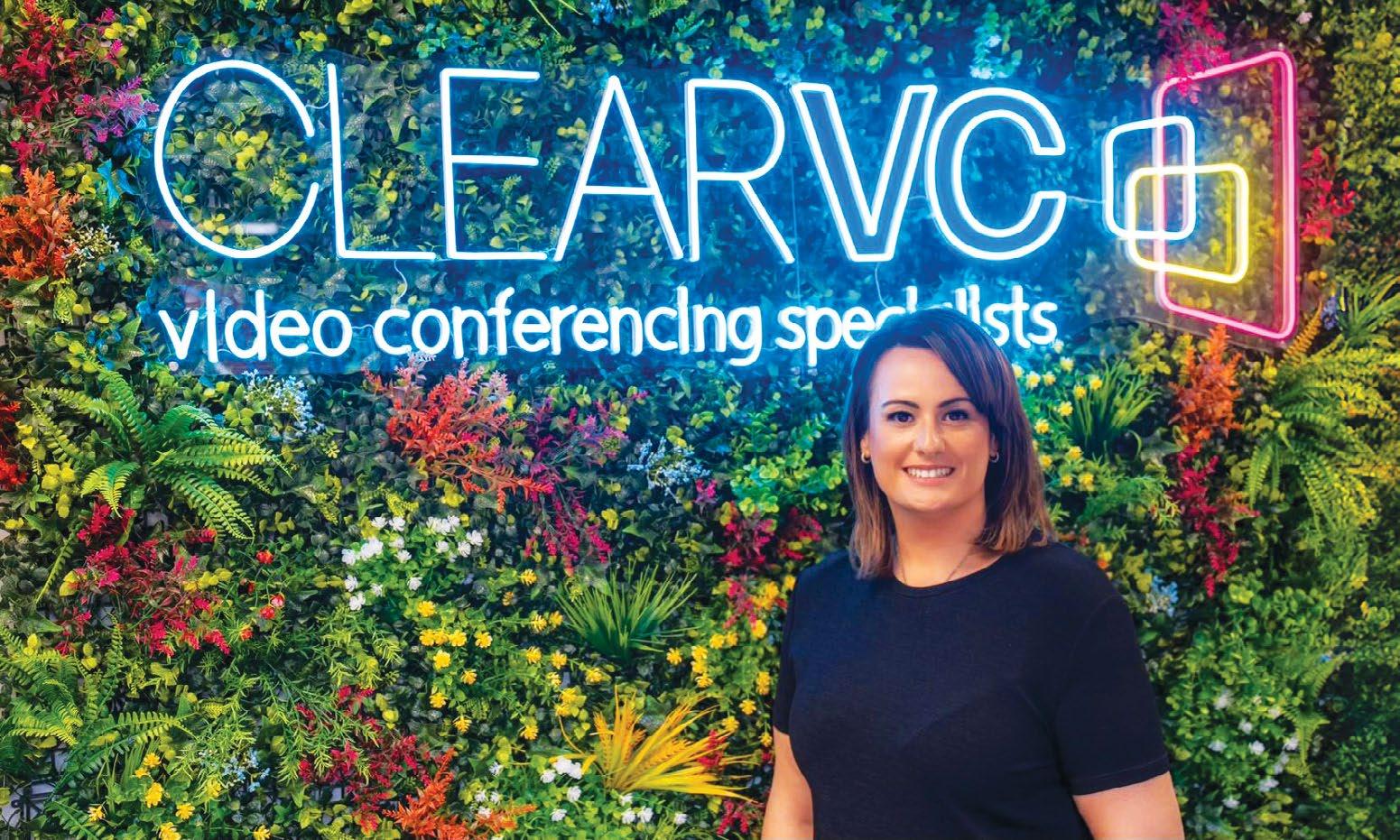
U.K.-based AV and UC specialist ClearVC has acquired VideoCentric, a videoconferencing integrator, in a strategic move to accelerate ClearVC’s national growth and deepen its ability to deliver collaboration solutions across the region.
Founded in 2001, VideoCentric has built a strong reputation in the Thames Valley and across the South of England. Its specialties include AV integration, equipment hire, installation, analytics, and long-term support, with a client base that includes businesses, education providers, healthcare institutions, and public sector bodies.
The acquisition brings VideoCentric’s directly employed engineers into the ClearVC fold, ensuring all service delivery remains in-house. In the near term, the two businesses will continue operating under their respective brands, with a phased integration strategy focused on preserving service continuity for customers. No job losses are expected.
With a reduced need for long-distance deployments, the group is positioned to respond faster and more efficiently across all regions. Also included in the deal is VideoCentric’s newly opened showroom in Edinburgh, which will act as a Scottish hub for demonstrations, innovation, and training.
“This acquisition is about more than just expansion, it’s about strengthening our technical capacity, deepening in-house expertise, and delivering consistent, high-quality service across the U.K.,” explained Rebecca McCartney, managing director of ClearVC. “By uniting two organizations known for innovation and engineering excellence in the AV and unified communications space, we’re building a more agile and resilient operation.”
In September, Diversified announced the opening of a new office in Frankfurt, Germany. The hub expands the company’s operational footprint in EMEA, serving as a center for client engagement, technology demonstrations, engineering, and project delivery.
The expansion reflects Diversified’s broader growth strategy, building scalable in-region operations, strengthening local delivery, and supporting the evolving needs of multinational enterprise clients. The office space is about 5,400 square feet and there’s a 14,000-square-foot warehouse. With plans to grow headcount over the next two years, the new facility provides ample space for prestaging, warehousing, and collaboration for Diversified and its technology partners, including Sennheiser and Crestron, to engage with clients and showcase solutions.
“Opening in Frankfurt allows us to extend Diversified’s global capabilities into one of Europe’s most important markets,” said Will Hegan, managing director–EMEA, Diversified. “We’re investing in the region to align with where our clients are growing and to ensure they benefit from world-class expertise paired with the support of a local team.”


The DisplayNet DN-300 Series delivers an unprecedented level of AVoIP performance, versatility and reliability— at a price point that defines the industry benchmark for value. Based on the latest SDVoE technology, the DN-300 Series provides 4K/60 (4:4:4) video distribution with limitless scalability, zero-frame latency and zero image artifacts.
These units offer unique features that provide system designers with exceptional versatility:
Switchable Transmitter / Receiver operation
Bi-directional Transceiver mode (DN-300T)
Dual (copper / fiber) 10G network interfaces
Long Range: 100 meters (copper), 30 km (optical)
Auxiliary H.264/5 video output streams
Powerful network security features

PoE+ support
Silent, fanless operation
Ultra-compact, rackmountable case
Versatile KVM Routing
DN-300H: US B HID device instant switching
DN-300T: full-bandwidth US B 2.0 routing
DisplayNet also provides software-defined MultiViewer and Advanced Video Wall engines that power a wide range of applications without the expense and complexity of ancillary products. A highly intuitive web-based UI and API greatly simplifies setup and installation, as well as integration into third-party control systems.
Contact us today to see how DisplayNet can move your next AV system into the future.
sales@dvigear.com
(888) 463-9927
www.displaynet.com















Innovation will take center stage At ISE 2026, with new offerings that will shape the next chapter of the annual event, which runs Feb. 3-6 in Barcelona.
According to organizers, this year’s theme, “Push Beyond,” is not a slogan, but a movement. It sets a new tempo for the global AV and systems integration industry.
The show itself is already reaching maximum capacity at the Fira de Barcelona, expanding by 5% from 2025. More than 1,400 exhibitors are already confirmed, including 184 first-time exhibitors. Since relocating to Barcelona in 2021, ISE has shattered records, with the Fira playing a key role in fueling that success.
“ISE has always been more than just about technology on display; it’s where industries come together to
inspire, to create, and to challenge what’s possible,” said Mike Blackman, manager director at Integrated Systems Events (and a member of the SCN Hall of Fame). “With our ‘Push Beyond’ ethos for 2026, we are inviting everyone to join us in Barcelona to shape the next chapter of AV and systems integration, together.”
Among its many innovations, ISE 2026 will debut the Cybersecurity Summit. In an era where digital threats extend far beyond traditional IT concerns, the AV sector finds itself at a pivotal juncture.

Cybersecurity has evolved into a business-critical factor. The summit will tackle the hard edge of digital risk, including regulation, integration, and resilience, where healthcare, transport, and government intersect with AV’s boldest ambitions.
ISE 2026 will also introduce
FORTÉ has acquired Informationsteknik Scandinavia, headquartered in Stockholm, Sweden. Moving forward, the existing AV integration business in Sweden and Denmark will become FORTÉ, serving customers throughout the two countries. The organization’s events businesses will continue under two brand names, Informationsteknik in Sweden and Get Visual in Denmark.

With operations in both Sweden and Denmark, the acquisition further expands FORTÉ’s European presence and advances its strategy to support global organizations with modern AV and UC solutions. With decades of experience and a strong local presence, Informationsteknik has built a reputation for delivering seamless, high-impact solutions across corporate, education, and event environments. Its team of professionals has made the organization a trusted partner for many prominent organizations in Scandinavia.
“Informationsteknik has served customers in Sweden and Denmark since 1989. With seven locations and more than 120 employees, the team is committed to customer service and technology solutions designed to transform the modern workplace,” said Jeff Stoebner, chairman and CEO at FORTÉ. “Through a combination of high standards and deep technical expertise, this business is an ideal fit with the FORTÉ mission to deliver future-ready solutions for communication and collaboration globally.”
The Sweden and Denmark locations will continue to serve as Regional Business Units of GPA, a global delivery engine. With its strong economy and highly skilled workforce, Sweden is an ideal hub for U.S.-based companies expanding into the Nordic and Baltic regions.


Listening Suites in CC2, the newly refurbished heart of Fira Barcelona. Each suite is carefully curated, blending acoustics with inventive design, ensuring every note resonates with clarity and nuance, perfect for audio brands looking to go beyond pro audio.
Making its debut in 2026, Spark is a cross-vertical gathering that unites trailblazers, visionaries, and pioneers from the full spectrum of the creative industries. Spark kindles a new chapter, where the brightest minds ignite ideas to transform the creative industries.
And lest we forget to mention AI, Sol Rashidi, chief AI officer for enterprises, will deliver a keynote during the show. Rashidi holds 10 patents, is the author of Your AI Survival Guide, and is a three-time TEDx speaker with more than 1 million views. She brings expertise at the intersection of AI, technology, and corporate strategy—bridging innovation with real business impact.
HARMAN International has completed its acquisition of Sound United, the former consumer audio business of Masimo Corporation. Sound United’s portfolio of audio brands includes Bowers & Wilkins, Denon, Marantz, Definitive Technology, Polk Audio, HEOS, Classé, and Boston Acoustics.
The move marks a significant expansion in HARMAN’s core audio business and footprint across key product categories including home audio, electronics (amplifiers, hi-fi components, AVRs), headphones, and car audio. Combining Sound United’s portfolio with its audio business enables HARMAN to deliver one of the most comprehensive audio portfolios in the industry. Sound United will operate as a standalone Strategic Business Unit (SBU) within HARMAN’s Lifestyle Division.
“HARMAN’s vision is to create experiences that enrich people’s lives through exceptional audio experiences,” said Dave Rogers, president, Lifestyle Division, HARMAN. “Sound United’s impressive roster of brands is rooted in a deep passion for sound, innovation, and commitment to quality that aligns with HARMAN’s own values. It bolsters HARMAN’s strategy to build on its unparalleled success story and scale to unprecedented heights as an audio leader.”

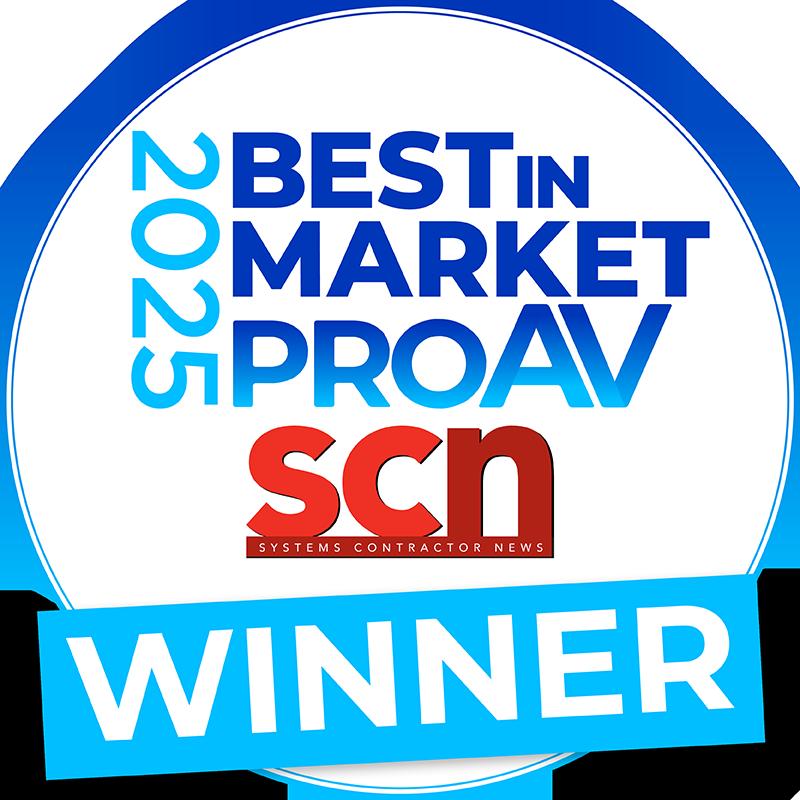


From design and deployment to optimization and longterm reliability, Biamp Workplace delivers end-to-end AV system confidence. Say hello to simplified planning, intuitive management, proactive monitoring, and smart scheduling across all locations —accessible anytime, anywhere.
Make your workplace extraordinary.
By Wayne Cavadi
The National Geographic Society has long made its home in Washington, DC, welcoming explorers from around the globe to share their experiences. Now, the society is expanding its Base Camp into a new era of discovery, with the Museum of Exploration (MOE) set to open in 2026.
According to Chris King, senior director, experience technology at National Geographic Society, MOE will serve as a public platform to illuminate and protect the wonder of the world. Supporting the exhibitions, experiences, and shows across the MOE is Panasonic Projector & Display Americas. The company’s 4K projectors, displays, PTZ cameras, and KAIROS video switching technology bring the venue to life while preserving the past and preparing for future explorations.
King said Panasonic was the choice since Nat Geo began the project. “We’ve designed the MOE to be a digital canvas that elevates the work of National Geographic Explorers, and this partnership is helping bring this state-of-the-art destination to life,” he explained.
According to Brian Duffy, strategic account manager, live entertainment, Panasonic Projector & Display Americas, Panasonic’s newest line of 4K Solid Shine Laser DLP projectors were selected, including the PT-RQ7 Series, PT-REQ15 Series, and PT-RQ35K Series, along with the Panasonic TH-EQ3 Series 4K professional display.
So, what will explorers experience at the new

museum? King described the National Geographic Learning Launchpad, powered by the Cengage Group, as an extraordinary interactive space that will inspire young people to connect with the concept of geographic thinking and to use geography in their own lives.
“The space includes a media-driven introductory corridor, hands-on activity room, and immersive projection room to present geography as a way of thinking, understanding, and interacting with the world,” he added. “Visitors will learn to look at the world around them through places, patterns, layers, scale and time.”
Also on the floor plan is the reimagined, 400-seat Grosvenor Auditorium with innovative Pro AV technology and storytelling tools that will envelop visitors through National Geographic films and stories. During the day, the courtyard will allow visitors to step inside the Yellow Border and discover the diversity of animals and plants that make up Earth’s ecosystems. In the evening, the space will offer a nighttime experience with visuals and audioscapes.

the integrity of the photographers’ work and ensuring longevity of operation. “When it comes to representing the photos, Solid Shine DLP technology is known for its ability to represent color standards easily and accurately,” he said. “This allows images captured by National Geographic Explorers to be displayed as they were intended.”

“This will be D.C.’s only spectacular outdoor nighttime destination, and it will bring the wonder of our world to life through the arresting visuals that National Geographic is known for, coupled with projection mapping, interactive media, and immersive sound,” King said.
Duffy and his team looked at two important factors when deciding which solutions were best: maintaining

Panasonic’s Solid Shine projection technology is also known for its longevity. As Duffy explained, 4K Solid Shine Laser DLP projectors are known to last twice or even three times as long as the life of comparative LCD technology. “In many cases,” he noted, “a museum can capitalize on this equipment under an 8-10-year deployment cycle as opposed to a 3-4-year cycle seen with a 3LCD equivalent.”
Of course, with any project, especially of this magnitude, there are challenges. “Each exhibit became its own project, and the team needed to manage all these simultaneously with one common goal and deadline,” Duffy recalled. “To make this happen, National Geographic prioritized working with partners who have experience with these types of large projects. Our experience in live events, themed entertainment, and location-based entertainment projects on a global scale set us up well to tackle the unique challenges of this project.”
New explorers will quickly agree that this is no ordinary venue. As promoted by the National Geographic Society, the Base Camp will be a place where visitors will come to experience “stunning imagery and photography, bold storytelling, and learn about the rich discoveries and expeditions of the past, with a watchful eye to the future and protecting our planet.”
And Panasonic had just the right technology to make that happen. King said the company’s “highquality standards and products, experience across the industry, ability to support the design and engineering phases of the project, and excitement to work with National Geographic on fully custom installations made Panasonic the clear choice for supporting our project.”
“We are honored to serve as a trusted technology partner and advisor for The Museum of Exploration,” concluded Duffy. “It’s such a unique and exciting project, making the design, planning, and collaboration process rewarding. We look forward to the opening of the museum and future projects with National Geographic.”
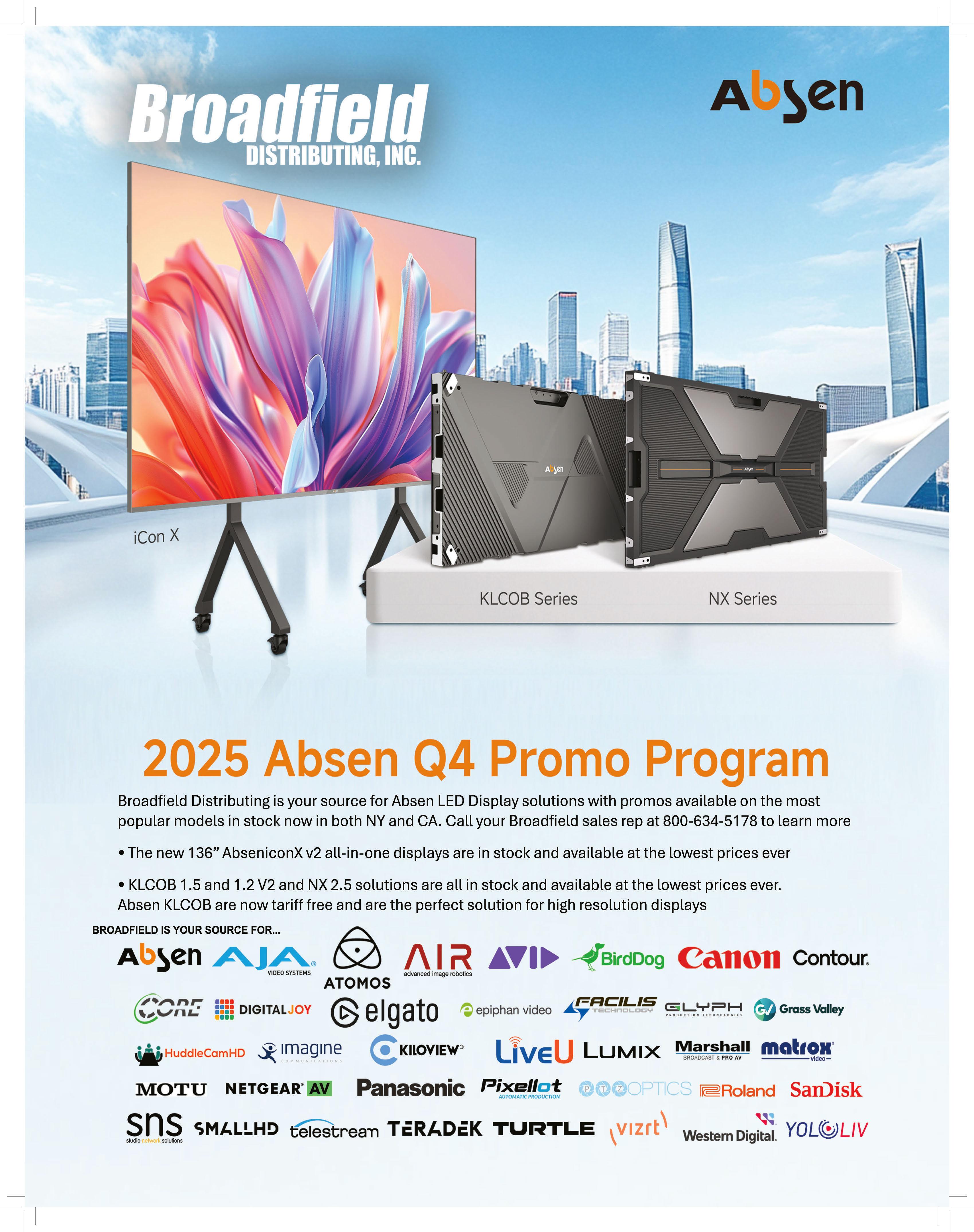
Located in the heart of California’s Central Valley, the Clovis Police Department serves the rapidly growing community of Clovis, a vibrant city situated just northeast of Fresno in Fresno County. Once a historic railroad town, Clovis has transformed into a modern, thriving municipality, consistently ranked among California’s best places to live.
Despite its growth, Clovis maintains a lean public safety model, with approximately 130 sworn officers and a total department staff of about 230 employees. As the city continues to expand—adding new residential developments, commercial centers, and educational infrastructure—the need for advanced, real-time public safety technology has never been greater.
Previously, the department managed streams of mission-critical information from hundreds of surveillance cameras, LPRs, drones, dispatch systems, and body-worn cameras. But these assets were siloed and difficult to manage from a single point of control.
Recognizing this, Clovis PD launched a bold initiative to build a Real Time Information Center
(RTIC), a centralized hub designed to unify data from hundreds of surveillance cameras, license plate readers, dispatch systems, drone feeds, and bodyworn cameras. The department’s goals: enhance officer safety, accelerate response times, and support smarter decision making across the entire public safety ecosystem. As the systems integrator, Wildfire Technology delivered end-to-end project success.
At the heart of Clovis PD’s RTIC is RGB Spectrum’s Zio AV over IP platform and XtendPoint KVM over IP system, providing the centralized control, flexible visualization, and easy expandability the department needed. The Zio 4000 video wall processor seamlessly drives a 14x5.6-foot Barco TruePix 0.9mm LED video wall, displaying live video from across the city, interactive maps, drone feeds, dispatch data, and analytic tools. With 16 HDMI inputs and 12 outputs, Zio acts as the visual brain of the RTIC, integrating diverse content streams into a single pane of glass for maximum awareness.
Clovis PD operators use XtendPoint to control and interact with up to eight independent systems simultaneously using a single keyboard and mouse.
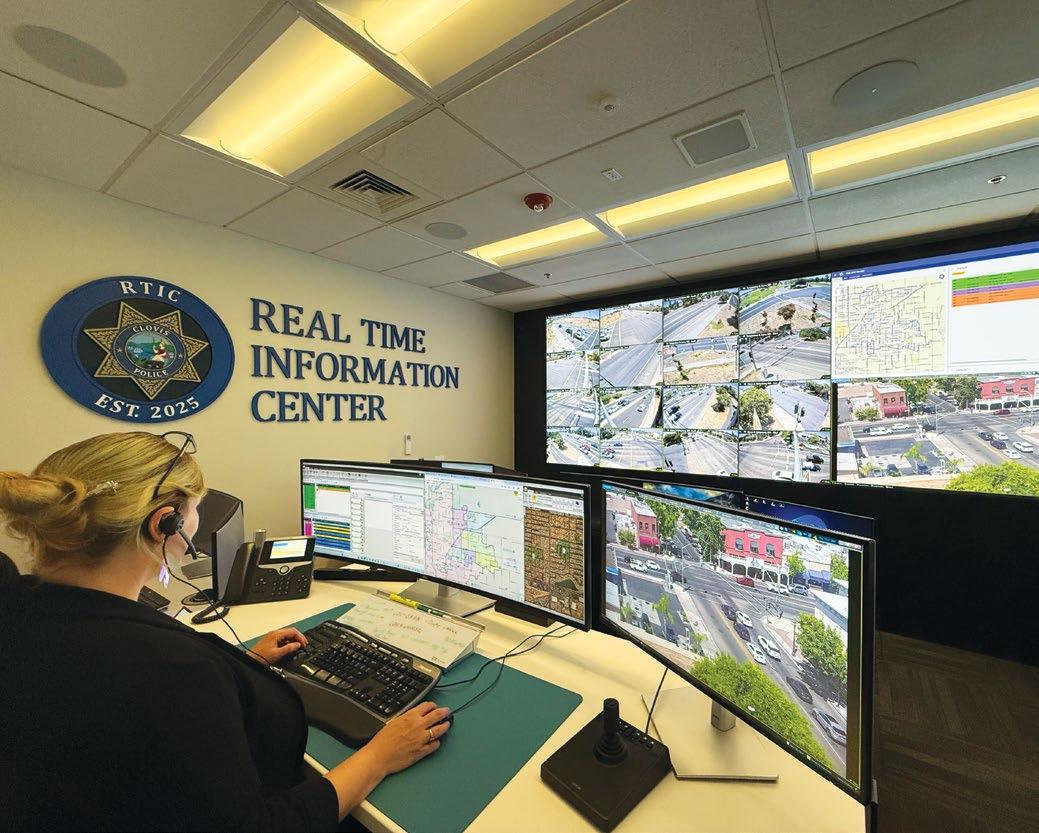
Each operator station features two 43-inch curved 4K displays, creating a panoramic, ergonomic environment that consolidates workflows and boosts productivity.
“What sold me on RGB was how effortless it was for everyone to manipulate the screen and display what they needed—everyone had access, and it just worked,” said Clovis Police Chief Curt Fleming. “We’re not just solving for today’s challenges, we’re setting the foundation for tomorrow’s public safety technology.”
Two recent acquisitions by Ross Video are bolstering the company’s commitment to providing end-to-end solutions for live production with experiential and audio technologies.
In October, Ross Video announced its acquisition of ioversal, creators of Vertex, an immersive experiences platform. The Vertex AV production suite is designed for interactive exhibits, live entertainment, large-scale productions, and dynamic projection mapping.
The acquisition marked Ross Video’s expansion into experiential technologies. Vertex provides the tools to unify video, audio, lighting, and control into one solution to create, manage, and automate captivating experiences.
video production with experiential AV. Plus, the ioversal team brings decades of expertise in media servers and interactive control systems to Ross Video.
“From the very beginning, our mission with Vertex has been to simplify complex audiovisual productions and give creators the freedom to focus on storytelling rather than technical hurdles,”

explained Martin Kuhn, co-founder of ioversal. “Together, we’ll be able to bring Vertex to an even wider audience and unlock incredible new possibilities for experiential media. We are deeply proud of what our team has built and are excited to be part of the Ross Video family.”
experienced team in audio-focused solutions. With LAMA, Ross customers will gain access to fully integrated audio mixing tools that complement their existing video workflows, removing silos and streamlining production.
LAMA’s software is designed to streamline live audio workflows, whether operated by seasoned audio engineers or streaming content creators. Built for speed, flexibility, and integration, it supports use cases ranging from live broadcasts and esports to corporate events and streaming. Its features address connectivity, mixing, and mix automation with a modern, software-defined approach.
“Vertex gives our customers a powerful new way to tell their stories,” said David Ross, CEO of Ross Video. “It also extends our live production solutions into the experiential world, opening creative possibilities that inspire audiences everywhere.”
The acquisition underscores the company’s commitment to broadening its portfolio across broadcast, sports, entertainment, and live events, offering customers a unified toolkit that combines live
The ioversal acquisition came on the heels of the September acquisition of LAMA, a developer of audio production software known for its innovative live mixing solutions. This move strengthens Ross Video’s audio solution set and core audio technology, while bringing in a highly

“We’re always listening to our customers, and they kept telling us how impressed they were with LAMA’s intuitive approach to audio mixing,” said Nigel Spratling, VP of production switchers at Ross Video. “When we took a closer look, it was clear LAMA had built something truly special: technology that’s modern, efficient, and aligned with the needs of today’s operators.”
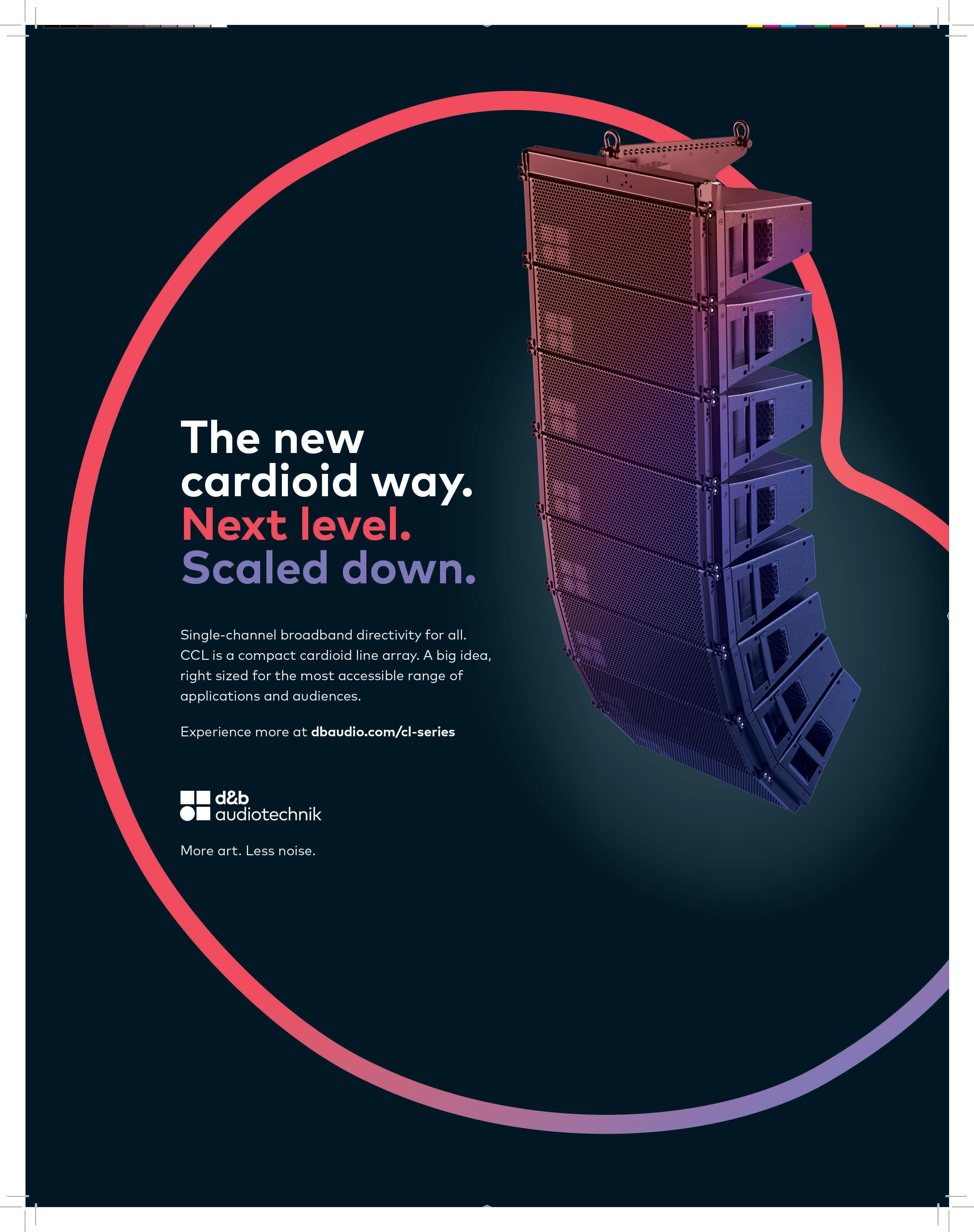
AVPRO GLOBAL has appointed EXCELLENCE MARKETING, based in Eden Prairie, MN, as its commercial sales reps covering the Dakotas, Minnesota, and Western Wisconsin. Excellence Marketing will focus on bringing solutions from AVPro Edge, Bullet Train, and RTI to exceptional integrators across the region. Founded in 1988, Excellence Marketing has established longstanding relationships with top integration partners across their region.
NEPTUNE OUTDOOR AV SOLUTIONS has appointed CONVERGENCE as a new independent sales rep firm for the Midwest region, encompassing Missouri, Iowa, Nebraska, and Kansas. This strategic partnership highlights Neptune’s commitment to regional expansion and underscores its dedication to providing expert sales support for its outdoor AV product portfolio. Convergence brings decades of experience as a key resource for AV products, lighting, controls, acoustical ceiling systems, and window systems to architectural and construction communities, while upholding their mission of being an advocate for manufacturer interests.
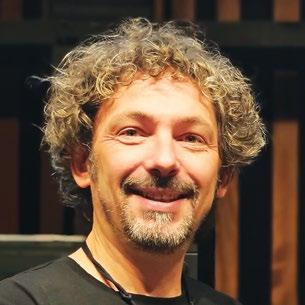
ADAMSON appointed SYLVAIN THÉVENARD as software manager. Thévenard brings extensive experience in the audio industry, having roots in both recording studio and live sound engineering, and is dedicated to enhancing the enjoyment and coherence of music. His expertise in spatial audio, which he began exploring in 2010, allowed him to create elevated sound imaging experiences. As a spatial audio architect at Adamson, he played a key role in developing the FletcherMachine with the European software team.
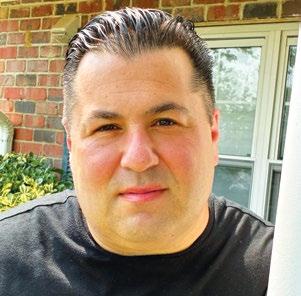
Industry veteran TOM BALDASSARE has joined ADVANCED SYSTEMS GROUP as a senior account executive. In his new role, he develops and maintains relationships with Fortune 100 tech and financial firms on both coasts. Baldassare is one of the creators of the Silicon Valley Video Summit, a consistently sold-out event every January, co-sponsored by ASG. In addition to servicing existing clientele, Baldassare also leads ASG’s initiative to cultivate new technology and finance firms as clientele in New York City.
AUDINATE appointed TJ ADAMS to the newly created position of chief platform officer. Adams joins Audinate from QSC, where he was SVP, Q-SYS product strategy, and was instrumental in the development of

the Q-SYS platform. He previously held engineering, sales, and product management roles at Biamp and SITA (formerly Com-Net Software). In his new role, Adams leads Audinate’s platform strategy to deliver an interoperable audio, video, control, and management platform.

AVIXA appointed JOSÉ ARAGÓN as CFO. In this role, he leads the association’s financial growth strategy. Aragón most recently held the position of VP of finance, networks, and studios at A+E Global Media, a multinational media company. During his tenure, he led several transformative initiatives. Prior to his role at A+E Global Media, Aragón was the VP of finance for Sony Pictures Entertainment, TV Production. He has also held executive finance positions at Univision and NBCUniversal.

CHRISTIE has appointed JIM HALLAS as VP, product management. Hallas leads the company’s display product strategy and display product lines, while aligning customers’ needs with the company’s innovation and capabilities to support its long-term strategic vision to maintain its position as a trusted partner worldwide. Most recently, Hallas served as business and engineering manager for the DLP Cinema, Pro AV, and Industrial Group at TI, where his team pioneered the HEP pixel technology and holds five patents for various technology innovations.

COBALT IRON welcomed JOSHUA PRESNELL as VP of engineering, Pressnell leads Cobalt Iron’s Software and Systems teams, applying proven engineering leadership to accelerate innovation and product delivery. His focus is on evolving engineering practices to align with the company’s vision for 2025 and beyond, ensuring continued delivery of innovative, reliable solutions for enterprise customers. His leadership roles at the U.S. Department of Defense, RTI, Ascendum Solutions, and various startups further showcase his expertise in cloud computing, cross-functional team management, and delivering scalable, customer-focused solutions.
DBTECHNOLOGIES USA has appointed SCOTT THOMPSON as Western U.S. regional sales manager, bringing more than two decades of experience in the pro audio and music industry to the role. Thompson most recently served as VP of sales at The Music Link,

where he managed more than $20 million in worldwide sales across multiple channels, supported a global distributor network, and oversaw the successful launch of a European 3PL warehouse that expanded the company’s international footprint.

DMF LIGHTING has appointed CHARLIE DERK as senior director of product strategy. In this new role, Derk leads DMF’s product roadmap and innovation strategy, driving the continued development of lighting solutions designed to elevate performance and aesthetics. With more than 25 years of experience in the luxury residential and architectural lighting industries, Derk brings a blend of engineering expertise, market insight, and customer-driven innovation. He has held leadership positions at Legrand, Crestron, Doherty Design Group, and Lutron Electronics.
Renkus-Heinz continues to strengthen its engineering department with the addition of three new team members. HAI LE joins the team as embedded software engineer, ROBERT NEWMAN takes on the role of loudspeaker engineering technician, and PENG YIN joins as senior software engineer. All three will be working closely with engineering manager Chad DeFranco and the wider engineering team to support RenkusHeinz’s goals.
Le brings a wealth of knowledge, with more than 20 years of experience working on embedded software development. In his new role, Le is looking forward to applying his skills to the world of loudspeaker audio. Transferring from a technical head role at an audio engineering company is Newman. He boasts 15 years of experience in professional audio, with a strong focus on transducer design, manufacturing, and testing.
Yin will be sharing his great passion for engineering and sound as he joins the Renkus-Heinz team. Yin brings a host of valuable skills. He has held various software engineering roles since 2016, leading teams to success with his broad knowledge of programming languages and experience in testing software.

FOR-A AMERICA named ERNIE LEON as SVP, head of sales and strategic growth. In his new role, Leon oversees sales strategy, business development, and market expansion. With previous senior leadership roles at Sony and Amazon Web Services (AWS) cloud solutions, Leon brings a unique blend of broadcast expertise, cloud workflow innovation, and customer-focused strategy to help FOR-A America accelerate growth and better serve core customers in the broadcast, corporate, and house of worship markets.

NANOLUMENS has appointed PATRICK BRITTON as COO. Britton brings more than 25 years of AV industry experience, with a versatile background spanning project management, product launches, operations and executive leadership. His career includes roles as CEO of South Central AV, regional general manager at AVI-SPL, and, most recently, senior consultant at Navigate Management Consulting. In his new role, Britton is focused on strengthening Nanolumens’
operational workflows to manage increasing volumes and unify systems across the organization.


STREAMGUYS has promoted TIM LABEKLLE to EVP of global sales and JESSE ORR to EVP of engineering, effective immediately. They will work closely together to fuel the company’s next generation of business growth. In his new role, LaBelle oversees all sales and business development. His innate understanding of the company’s technology brings valuable insights for customers and enterprises. Orr’s core responsibilities include bringing more efficiency to both StreamGuys and customer organizations. That includes maintaining the networking and infrastructure, global data centers, and working to assure 100% uptime for customer streams and the company’s suite of services.
TECNEC DISTRIBUTING has added MARK CHERNOFF to its team as a regional sales manager. With more than 25 years of industry experience,

Chernoff brings a wealth of knowledge and strategic insight to the organization. In this role, Chernoff supports TecNec’s internal sales team with a boots-on-the-ground approach, meeting clients where they are and helping to shape TecNec’s future while strengthening its market position. Prior to joining TecNec, Chernoff spent more than two decades at BTX Technologies, where he held a variety of key positions.

TELOS ALLIANCE welcomed JEFF WILLIAMS to the position of director of Western U.S. sales. Williams brings four decades of radio and broadcast experience, plus a family legacy in broadcast and pro audio, to support customers across the Western United States. Williams began his career in broadcasting at age 16, working with Shotgun Tom Kelly, and followed with roles at San Diego’s KFMB, Boston’s WRKO, and leadership positions with Gannett, Jacor, Clear Channel, and Knight Broadcasting. Since 2015, he has been general manager and owner of Yellowtec USA.
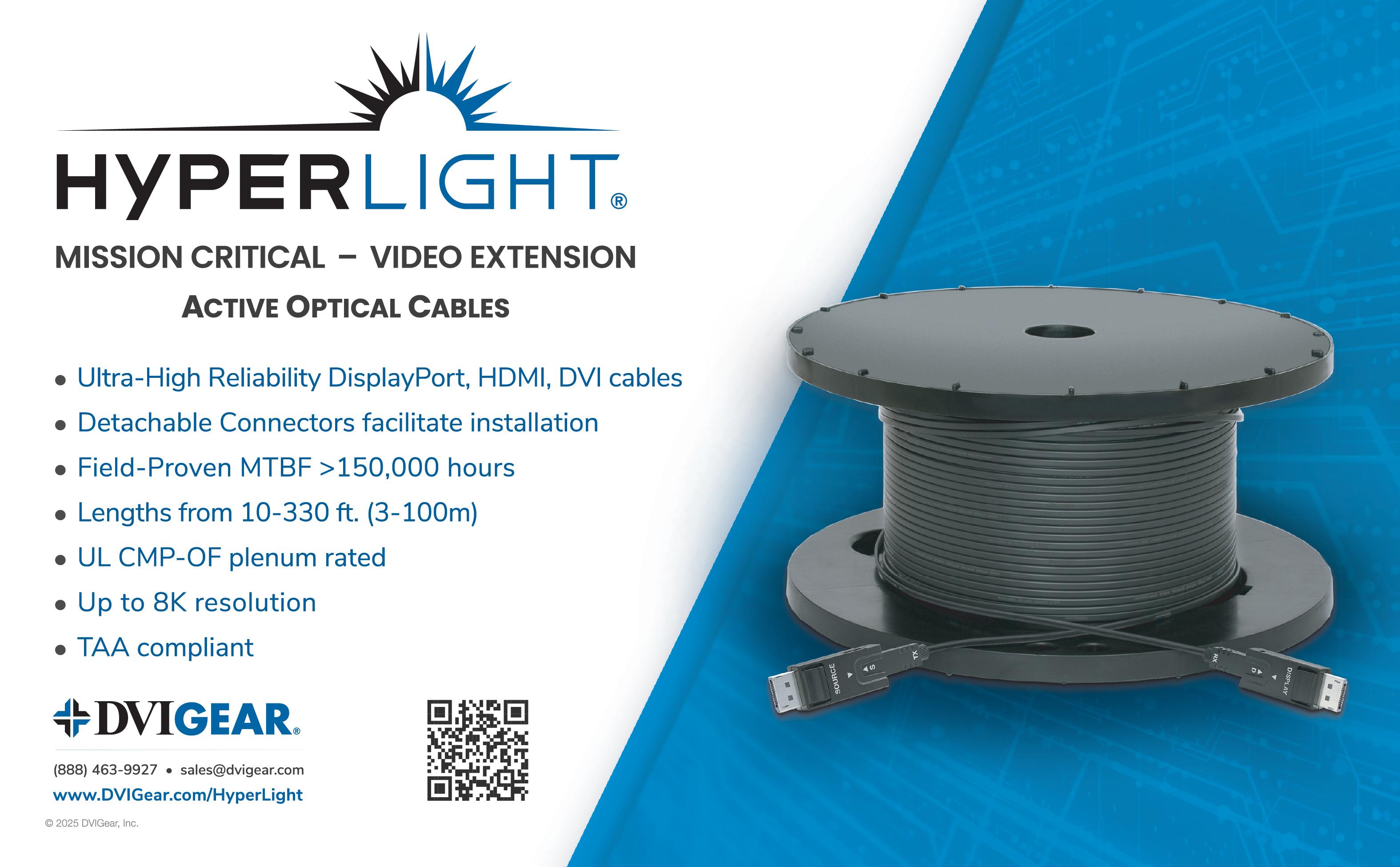
Parker Group is changing the multiview game for control rooms.
By Mark J. Pescatore
SCN: What prompted you to establish Parker Group back in 1998?
Valerie Parker: I met my husband, a future Navy pilot, while studying at Georgetown. Being a military brat, I knew I had to choose a career path that would allow both mobility and advancement. I spent a long weekend (and about 1,000 Post-It notes) and hatched a business plan to pursue government contracting with a focus on aerospace and defense. I’ve worked on major projects ranging from airplanes and engines to operations and maintenance to flight training and even missile defense. I immersed myself in this world, learning everything I could about contracts, finance, technical project management, and business development in the aerospace industry. Eventually, I gained sufficient knowledge, skills, and experience to launch my own woman-owned government contracting firm, Parker Group. Since then, I haven’t looked back.
SCN: When you showed me AVenue at InfoComm, I said it was like a DVR for multiviewers. Can you provide a more thorough description for our readers?
VP: AVenue is an AV over IP solution designed for organizations to synchronously capture, share, record, store, and replay content with unparalleled ease. These servers don’t just passively store incoming streams; they actively share them in real time, allowing users to access vital information from anywhere in the world.
Control rooms typically display only live feeds. AVenue changes that by enabling synchronous recording of dozens of IP streams, complete with DVR-style controls. Operators can now pause and rewind live video wall feeds without interrupting operations, bookmark incidents for later review, and analyze data displayed during a specific event (not just what a single camera captured).
The ability to play back the entire situational view adds a new dimension to operational awareness. AVenue empowers teams to react swiftly, make informed decisions, and maintain control over critical situations with confidence.
SCN: Can you provide customization for AVenue?
VP: Yes, AVenue was designed for customization. AVenue is able to meet the unique needs of diverse users and environments. It is built as a multi-stream, IP-based network recorder and playback appliance. AVenue is engineered for flexibility without compromising performance.
SCN: What organizations can most benefit from AVenue?
VP: AVenue is ideal for organizations operating in mission-critical and high-pressure environments. This includes control rooms, defense and government agencies, training and simulation centers, security providers, the public sector, and healthcare institutions. Whether for live monitoring, post-event analysis, or continuous training, AVenue supports the precision and adaptability these high-pressure settings demand.
SCN: Are there any recent deployments you can discuss?
VP: Given the nature of our work, a lot of our deployments are under strict confidentiality. A recent project we can talk about was with a major Department of Defense Research, Development, Test, and Evaluation (RDT&E) and Training range. We helped them transition from decades-old baseband video infrastructure to a fully modernized AVoIP environment using a VuWall TRx/PAK system. This deployment represented a significant digital transformation for the facility. Their legacy baseband video system was not only aging, but it lacked the flexibility, scalability, and centralized control that today’s mission-critical environments demand. The system provides optimal functionality, high availability, and maximum performance in supporting national priority developmental and operational test and training programs.
SCN: How important is AVoIP to the future of the Pro AV industry?
VP: AVoIP is extremely important because it allows audio and video to be distributed over standard networks, making systems more scalable, flexible, and easier to manage. Quite honestly, it truly is the future of the Pro AV industry. AVoIP has moved well beyond

Valerie Parker
Position: Founder/CEO Company: Parker Group Overtime: Achieving work/life balance is essential, and I cherish every stolen moment with my husband, two amazing sons, and incredible friends. Travel, reading, and volunteering in my community are lifelong passions.
being a trend and has become the key to most modern business operations. Organizations that embrace AVoIP are upgrading and future-proofing their infrastructure to keep up with the evolving tech space. It removes the physical limitations of traditional AV systems, making it possible to route, control, and monitor AV content from virtually anywhere. This shift reduces infrastructure and costs and supports faster decision-making, better collaboration, and more responsive environments.
SCN: How is AVenue handling security for all the content going through it?
VP: AVenue is an application that can layer onto both unclassified and classified networks. Network transmissions are secured with strong encryption and authentication protocols, ensuring every piece of content that moves through AVenue is fully protected from end to end. These features help prevent unauthorized access, tampering, or interception across the network. Security is not an add-on but is built into the core of how AVenue operates, ensuring that high-stakes content remains protected in even the most demanding environments.
SCN: What companies are partnering with you?
VP: Working with trusted industry leaders allows us to deliver strong, holistic solutions and create new ideas. One of our current partners is VuWall, whose technology has been central to several major projects. This year, Parker Group received VuWall’s Top Performer Award at InfoComm for the largest deployment for the Department of Defense and the Department of Homeland Security. It was a significant milestone that reflects our technical expertise and operational discipline. Our collaboration with VuWall continues to raise the bar for reliable and forwardthinking integration in mission-critical environments.
SCN: What new initiatives are we likely to see from your company?
VP: Parker Group is on the cusp of a new release that incorporates enhanced Real-Time Streaming Protocol (RTSP) features that enable AVenue to run in a virtual environment. Customers will have access to new hardware technologies and features such as larger storage options, faster boot times, and improved security measures, as well as improved multimedia network streaming control.
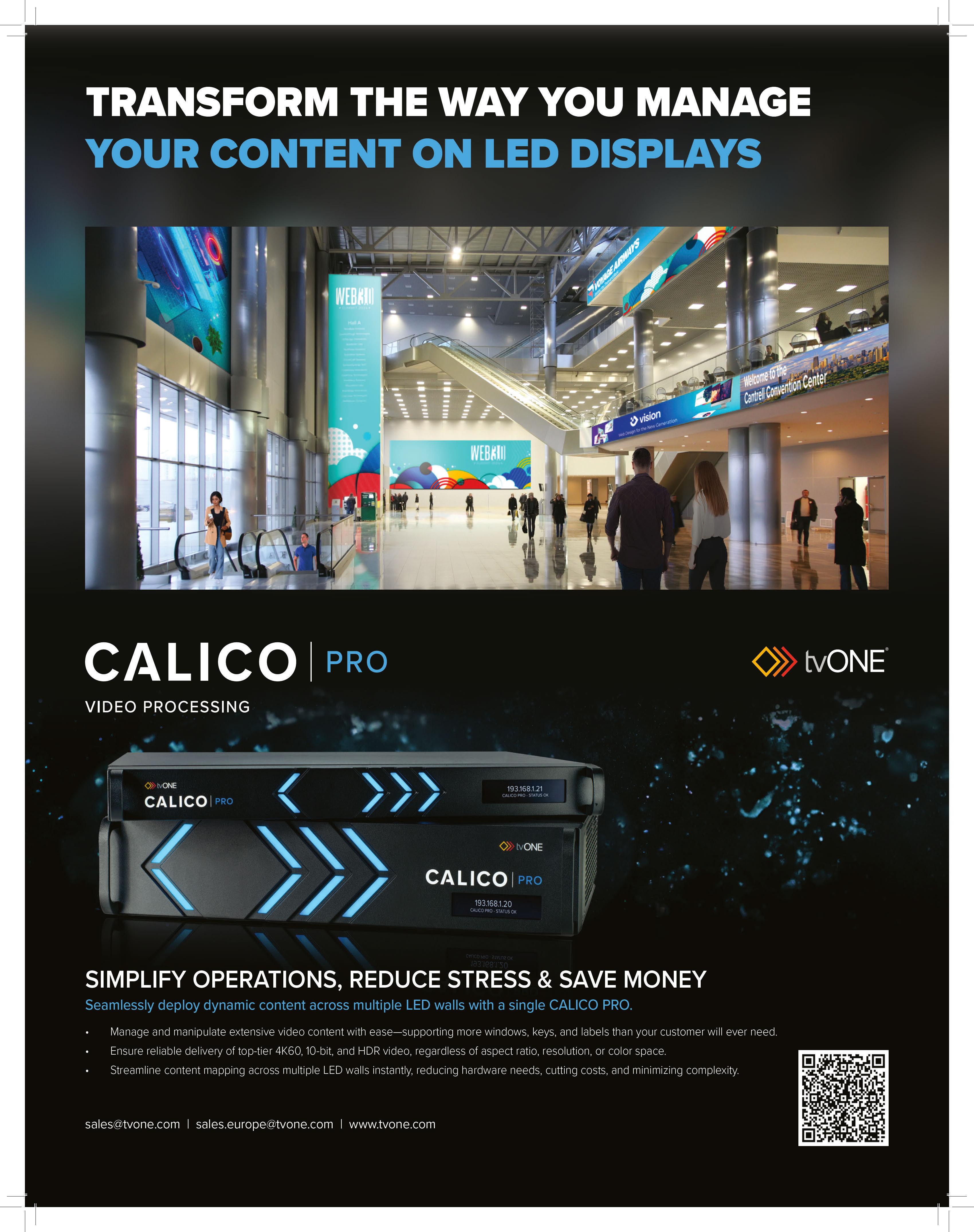

By Robert Detwiler
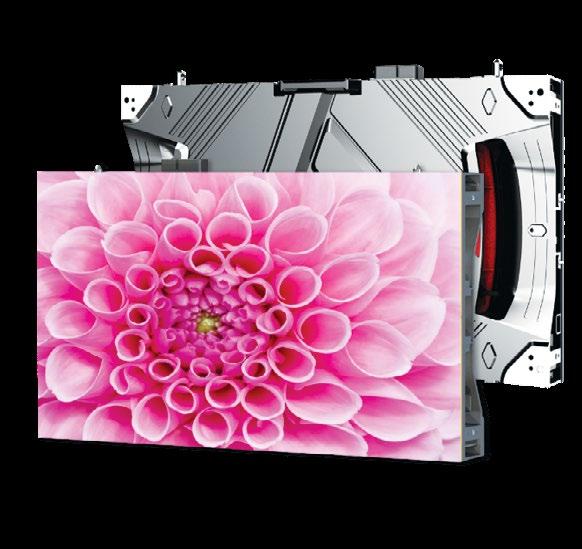

New technologies and installation strategies are helping to cool down today’s LED deployments.
uch like turning on a light bulb emits warmth, electronics generate heat. This includes display technology. Of course, customers and employees don’t want to cook in front of a video wall as they’re monitoring emergency situations in a control room, collaborating on a conference call, shopping for clothes or even watching the game over a meal.
Today’s dvLED displays are becoming increasingly efficient. Newer technologies like MicroLED and chip-on-board (COB) offer customers benefits that range from reduced energy consumption and cost savings to more true-to-life, uniform visuals with increased contrast and deeper blacks. Even highbrightness models continue to deliver sustained brightness with minimal power consumption. So, what steps can be taken to help minimize display heat to maximize performance and support a longer lifespan?
As an LED display operates, an electrical current flows through its many components, naturally generating heat. This includes LED modules, power supplies, control hardware, cables, connectors, structure, and screws. With that, a device running at a lower power would produce less heat.
Thanks to falling price points and advances in technology and manufacturing, today’s LED display options are more accessible and diverse than ever before. This makes it possible to find a solution for nearly every need.
For customers who need to clearly display more detailed content for up-close viewing distances, MicroLED presents some of the finest pixel pitches
of small-sized (generally under 100 microns) red, blue, and green diodes closer together within the display, which helps facilitate the highest resolution.
In addition to being significantly smaller than standard LEDs, MicroLEDs are also energy efficient, delivering better brightness while producing less heat. With the latest advancements in MicroLED, today’s customers are benefitting from lower power models offering 500 nits of brightness with as little as 68 watts of power consumption. This is a great option for low-ambient light conditions, in addition to customers who are energy-conscious.
As a technology that’s quickly taking the industry by storm, COB technology takes the same blue, green, and red diodes and mounts them directly on the display module with a film layer on top. This not only provides a durable, matte finish and improved viewing experience with outstanding blacks, but also helps maximize light output while minimizing energy loss.
Energy loss takes place when energy moves from one location to another and is converted into another form. Often, this process can turn some of the energy into heat. In the case of an LED display, minimal energy loss allows more energy to be converted into light as opposed to wasted as heat. As a result, customers experience consistent visuals with lower operating costs, plus energy efficiency with reduced power consumption. Good heat management will ultimately help a product live longer.
By comparison, dvLED displays are constructed with modular tiles that contain densely packed LEDs, eliminating the need for a backlight while continuing to offer customers improved heat dissipation. This means we’re seeing stable operation even during extended use.
Consider an organization or health institution that is installing an LED video wall as a lobby statement piece or donor appreciation wall. How close will users be? Will the display feature touch capability? If a video wall gives off significant heat to the touch or as individuals are facing it, the temperature will distract users and ultimately detract from the message or user experience being delivered. Another key factor worth exploring is air flow. Does the space where the video wall is deployed have or need a dedicated air conditioning unit? For the display itself, fans can be used to circulate air within the display and prevent overheating, but more
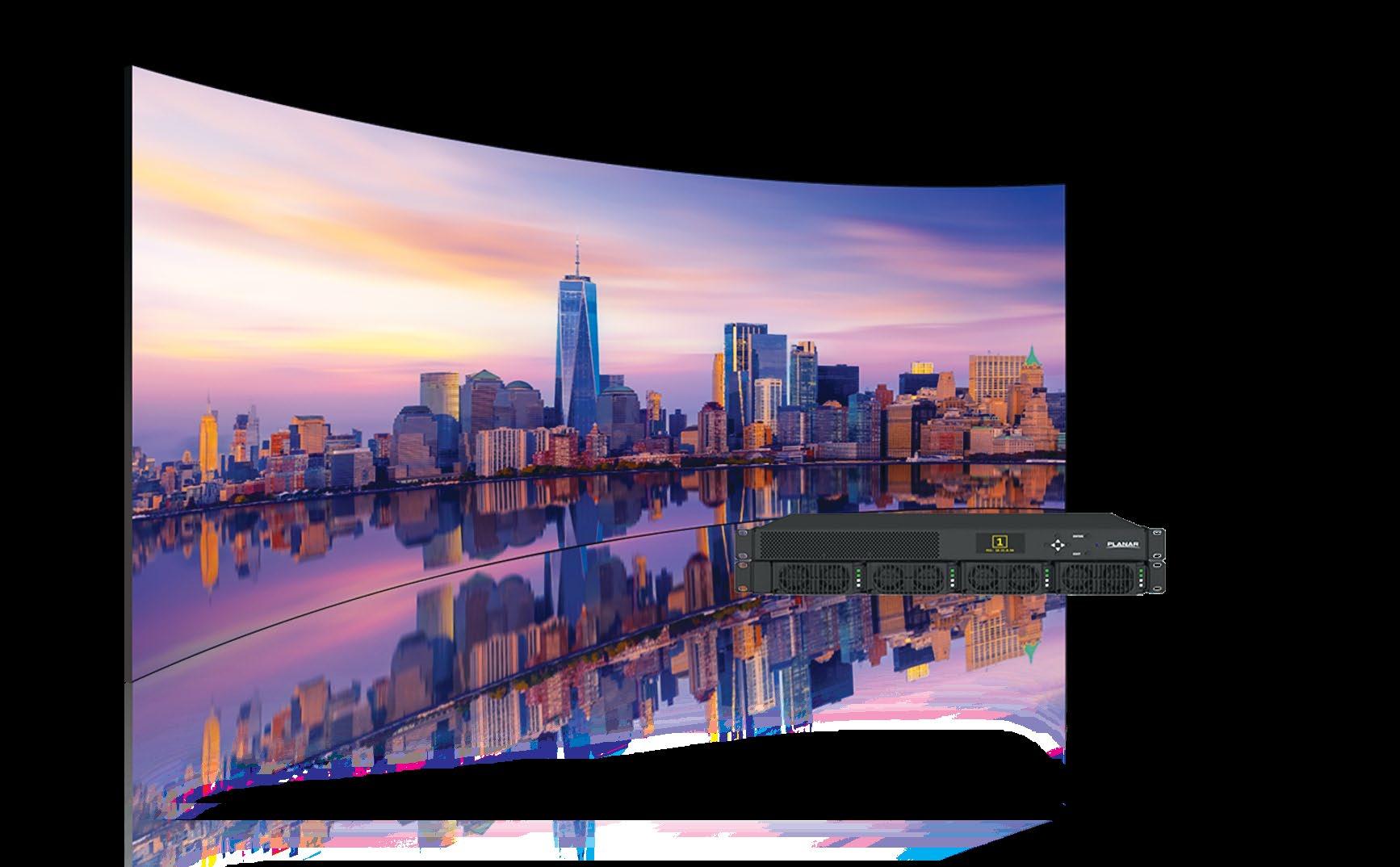
manufacturers have moved away from this design due to the unwanted noise that often results.
Remote power supplies serve as an excellent device for managing video wall heat, allowing users to remove heat—as well as noise, weight, electrical outlets, and service points—away from the unit and into a well-ventilated or temperature-controlled rack room. Other active and passive cooling systems can be used to absorb and dissipate heat from the module such as heat sinks and liquid cooling systems.
Some advanced off-board power supplies offer three times the power density per rack unit compared to previous generations—and in some cases, we see as few as three watts of power required for an entire video wall when in standby mode. This is ideal for mission-critical and other applications requiring continuous operation. When exploring video wall solutions, consider an offering that features power redundancies, hot-swap off-board power, and low power standby modes for the best performance with limited downtime. For example, a product presenting an n+1 redundancy means customers benefit from a system with the minimum number of components required to operate at full capacity, in addition to an extra component that acts as a backup. So, in the event of a failed component or other needed maintenance, the system will continue to operate. Similarly, a hot-swap power module allows users to remove and replace a faulty LED module without shutting down the entire video wall system.
It’s important to note that AC switches are another option that enable video walls to enter low power modes when not in use. This can be scheduled or controlled by command, and also helps facilitate better control over components of a video wall. Also, keep in mind that active and passive cooling systems can be paired together to enhance thermal management of a solution.
A building with a well-designed HVAC system can also help manage the heat of an LED video wall installation, offering efficient airflow that offers peace of mind as well as a more conducive environment that allows the LED product to shine. While today’s LED offerings support deployment diversity like never before, wall-mounted installations remain a popular choice depending on the interior spaces in which they will operate. For this reason, more display and video wall products provide channels behind the unit designed to allow heat to escape.
The color of an installation’s setting also plays a factor in the temperature of the space and, thus, retaining or dissipating heat. For example, a dark, black interior wall will absorb heat and in turn feel cooler
compared to a bright white wall that can reflect light and heat from a nearby video wall or perhaps a window.
The same can be said for the content being displayed to audiences. Darker imagery will drive less power and heat as opposed to light and bright visuals. This is because black content on an LED video wall means that all the LED diodes are off versus white content, which requires all LED diodes to be on.
So, grays and other colors fall in between with portions of the LED diodes on or off. To make yellow, for example, red and green LED diodes are mixed together. This means the blue diodes are not being used, so one-third of the display’s LED diodes would be off.
Whether a video wall is periodically powered up to support an event or maintains continuous operation to greet visitors in a headquarters lobby, it will inevitably produce heat. However, there are strategies and tools available to help manage the amount and protect performance. With new LED innovations on the horizon, we can expect to see more energy-efficient LED products emerge that reduce power consumption even more and continue to simplify thermal management to provide the best experience for users and viewers alike.
Robert Detwiler is the senior director of product management at Planar.
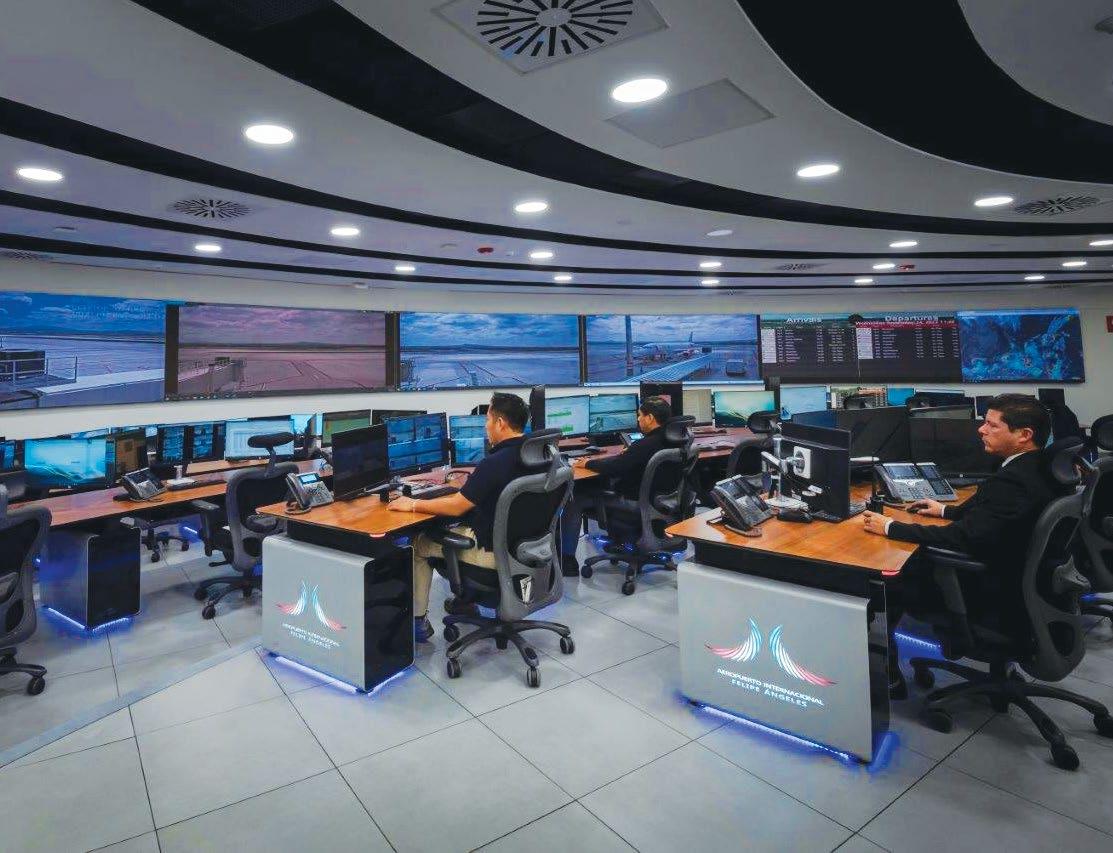

Now in its third year, the Pro AV Best in Market (BiM) 2025 awards for Systems Contractor News have been announced. This time around, there were 12 winning products.
The BiMs provide companies the opportunity to highlight new products (or products that were newly upgraded) within the last 12 months. Entries were judged based on a range of criteria by independent, third-party judges and editorial teams. Additional BiMs were presented by other Future B2B brands, AV Technology and Sound & Video Contractor. Congratulations to this year’s SCN BiM winners.
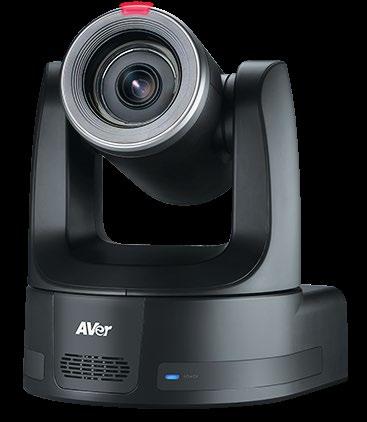
AVer’s TR615 4K AI auto tracking PTZ camera combines intelligent automation, cinematic visuals, and flexible connectivity. Engineered for professional broadcasting, live streaming, and event production, it’s equipped with a large 1-inch Sony Exmor RS CMOS sensor that delivers cinematic image quality with rich color, enhanced low-light performance, and lifelike depth. Supporting 4K60, along with 19x optical and 12x digital zoom, the TR615 delivers close-ups and detail even in large venues.
With advanced AI-powered tracking, the TR615 offers Presenter Tracking, Zone Tracking, and Hybrid Tracking modes. From fast-paced performances to academic lectures, it provides smooth, professionalgrade footage without manual control. Designed for seamless integration, the TR615 supports multiple output formats including dual 12G-SDI, HDMI, USB, and 3G-SDI, with genlock for multi-camera synchronization and XLR audio input. It also features NDI|HX3, Free-D, and Dante AV-H, ensuring compatibility with IP streaming and virtual production workflows.

The BenQ SL04 Signage Series sets a new standard for corporate displays. It is the first digital signage solution to earn Pantone Validated, Pantone SkinTone Validated, and Google EDLA certifications. Designed for visual clarity, the SL04 delivers 99% RGB color accuracy and tailored viewing modes to different disciplines. High-detail mode delivers for complex architecture and engineering blueprints, while Sketch mode mimics the look of paper for artists and fashion designers, and M-book mode ensures accurate
cinematic colors for MacBook users.
The SL04 is built for 24/7 operation and usability, combining 500 nits of brightness with an anti-glare, low blue light screen for comfortable viewing in offices, libraries, and campus halls. Collaboration is easy with InstaShare 2, enabling wireless screen sharing from any major device. Users can also rely on X-Sign to easily manage and update content in real time.
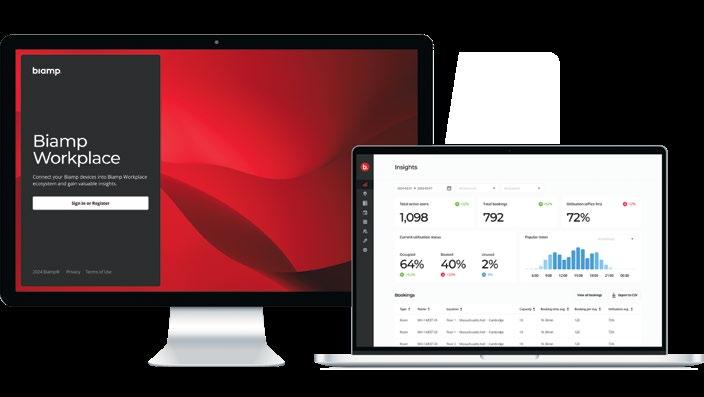
Biamp has expanded the Biamp Workplace
cloud-based management and monitoring platform to address more stages of the customer journey—from the initial design stages through deployment, tuning, and optimization—while expanding device compatibility. This includes Location View, providing an instant overview of system status on a given floorplan, enabling Workplace administrators to quickly identify issues by seeing exactly where they are located, utilizing maps of floors, buildings, and campuses.
Workplace Designer brings Biamp Conference Room Designer directly to Biamp Workplace. The significant advancement is enabled by the cloud, empowering Workplace users to save and reuse their designs anywhere, anytime. Designs can be linked to specific workplaces to serve as templates. Workplace Command enables AV technicians to access block functions of any Workplace-connected Biamp Tesira device remotely from within the Workplace app, eliminating the need for on-site visits for simple issues. Meanwhile, Workplace Tools helps perform on-site tasks via the cloud, enabling fast, contactless setup and troubleshooting.
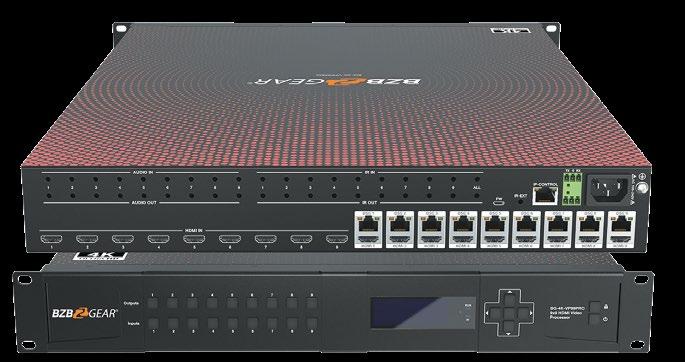
BZBGEAR BG-4KVP99PRO
The BG-4KVP99PRO is a premium, all-in-one
9x9 HDMI matrix switcher, video wall processor, and multiviewer kit for high-end professional AV environments. It includes nine HDMI inputs, nine HDMI outputs, nine HDMI loop-outs, and nine display signal converter (DSC) receivers to extend signal over CAT5e/6/7 cable. It supports resolutions up to 4K60Hz with 4:4:4 chroma sampling, deep color (12-bit), and HDCP 2.2/1.4 compliance. The switcher also supports
HDMI signal extension up to about 230 feet over CAT6/7 cable.
Key video processing functions include seamless matrix switching (any input to any output without visible delays), multiview mode that displays up to nine sources, and 3x3 video wall mode. It also supports cascading for larger walls, bezel compensation, mirroring, 180-degree rotation, and preset scene recall. On the audio side, it offers balanced analog audio extraction and independent audio routing/ embedding. Controls options include BZBGEAR control software (iOS, Mac, Android, Windows), front panel buttons, IR remote, RS-232, and TCP/IP/Web GUI, with firmware update support via USB.
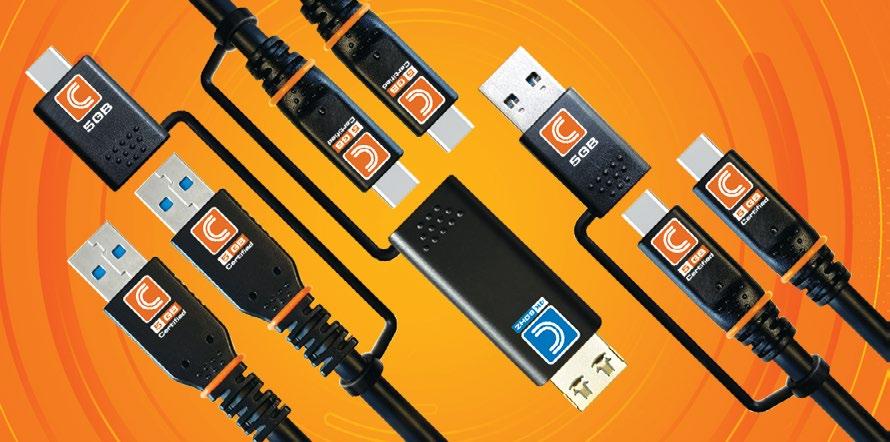
Transformer Cables
Comprehensive’s Transformer Cables are an innovative, all-in-one connectivity solution designed to simplify AV and IT setups. Featuring built-in adapters for HDMI, USB-C, and USB-A, these hybrid cables allow users to connect a wide range of devices and displays using a single cable. The adapters are integrated directly into the cable head, eliminating the need for separate dongles or converters—ideal for on-the-go professionals, educators, and integrators. With support for high-speed 4K video and data transfer, Transformer Cables combine the functionality of three essential cable types in one compact, durable design. This streamlined approach reduces clutter, improves efficiency, and ensures maximum compatibility in any AV environment.
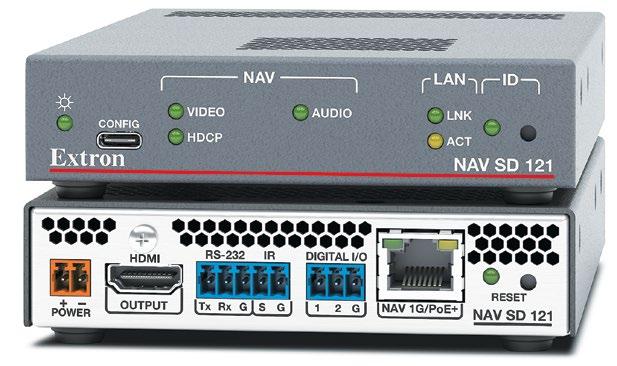
Part of the popular NAV Series, the NAV SD 121 is designed specifically for enterprise networks. It’s a compact AV over IP scaling decoder that decodes and scales real-time, high-quality video and audio signals over 1 Gbps IP networks at low bitrates. Utilizing Extron’s PURE3 codec, it delivers video at resolutions up to 4K60 with 4:4:4 chroma sampling and ultra-low latency. The NAV SD 121 is compatible with NAV endpoints, increasing scalability for large deployments. It also supports AES67 audio over IP, facilitating flexible integration with DMP Plus DSPs or other IP-enabled audio components.
The NAV SD 121 includes Vector 4K scaling technology, which ensures critical 4K image quality, image upscaling and downscaling, and enhanced color accuracy and picture detail. It also features an HDMI output with RS-232, digital I/O, and IR ports to extend control system reach beyond the physical location of the processor, eliminating the need for additional control processors at the endpoints.
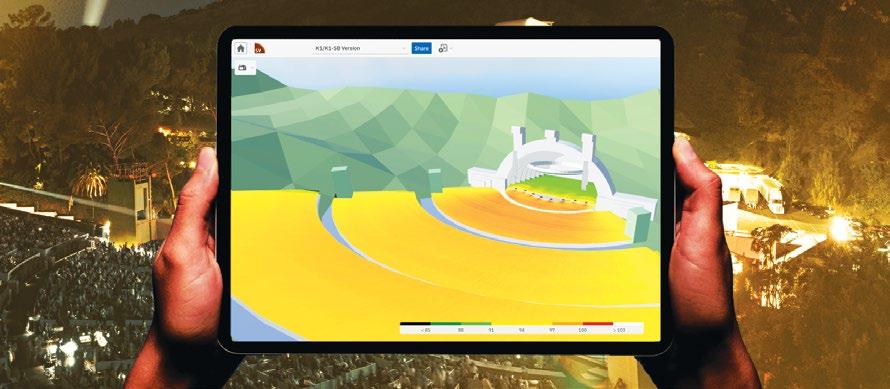
Soundvision Connect is an innovative, cloud-based platform that extends the power of the Soundvision 3D sound modeling software, making intricate audio designs accessible to all project stakeholders. Historically, sharing complex technical designs with non-specialist stakeholders—such as architects, consultants, and venue owners—has been a significant challenge, often leading to misunderstandings and project delays. Soundvision Connect changes this by transforming detailed designs into interactive, explorable 3D experiences.
This intuitive environment bridges the gap between technical precision and stakeholder understanding, enabling fast and informed decisionmaking. Users can easily share a design via email, allowing clients and collaborators to visualize the acoustical plan, review SPL mapping, and approve system designs without specialized software or training. By fostering a collaborative space where everyone can understand the project, Soundvision Connect streamlines workflows, enhances communication, and ensures the final sound system perfectly aligns with the project’s needs.
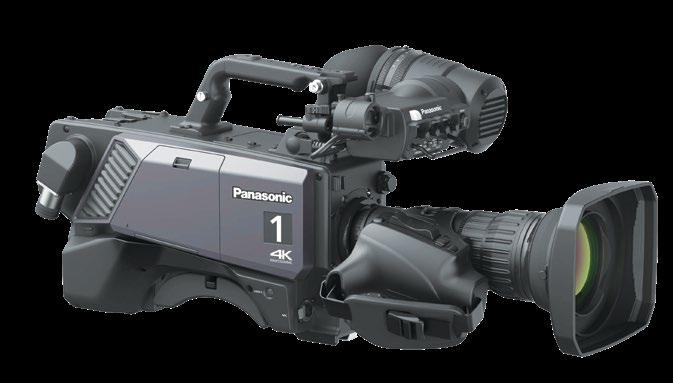
Panasonic AKUCX100
Designed for sports, live events, and rental and staging environments, the AK-UCX100 gives operators flexibility to capture compelling content in dynamic environments. Unlike traditional studio cameras that rely solely on operator control, its new software-driven Auto Focus enables fast, stable target acquisition regardless of lens type or operator skill. Operators can adjust focus area, size, and speed to ensure flexible framing, while experienced operators can seamlessly transition to manual fine-tuning for precision control.
The AK-UCX100 also supports HDR, high sensitivity, and low noise performance, ensuring vivid,
lifelike images in both bright and low-light conditions. Optimized colorimetry addresses LED lighting and large display wall challenges, while an HD low-pass filter reduces moiré. Designed to streamline workflows, it supports SMPTE ST 2110, NDI High Bandwidth, SRT, and dual 12G-SDI outputs for flexible, future-ready productions. By combining broadcastgrade imaging with software-driven Auto-Focus, the AK-UCX100 empowers production teams to capture high-quality content with greater efficiency, accuracy, and creative freedom.
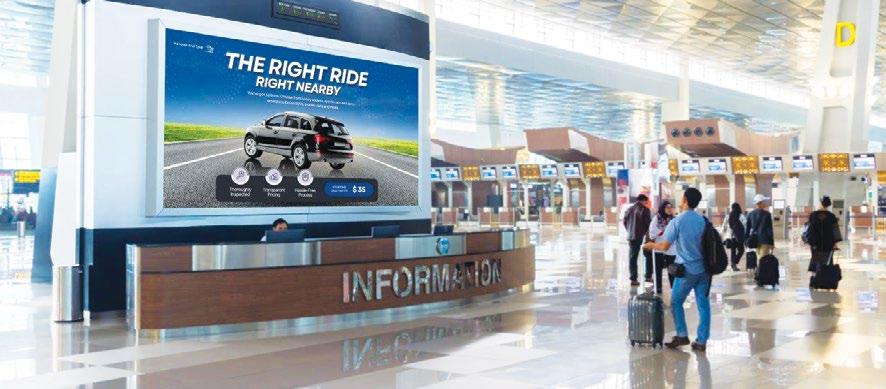
The Planar DirectLight Essential Series LED video walls are designed for indoor environments with abundant ambient light. The line of fine pixel pitch LED video walls is well-suited for budget-conscious customers who require high-quality imagery. Designed with chip-on-board (COB) technology, the durable LED displays deliver high pixel density and lower energy consumption, making them ideal for high-traffic settings as well as interactive touch applications.
An LED sorting process pairs only uniform LEDs together to ensure superior performance as well as a significant reduction in energy requirements. The solution also features a proprietary driver integrated circuit (IC) designed for COB technology. The 27-inch cabinets for the Planar DirectLight Essential Series are available in 0.7, 0.9, 1.2 and 1.5mm pixel pitches and offer a 30,000:1 contrast ratio and high refresh rate of 3,840 Hz. The video walls are compatible with Planar WallDirector Video Controller and ColorLight LED controllers. Remote monitoring is supported with the Planar WallDirector cloud web-based monitoring application.
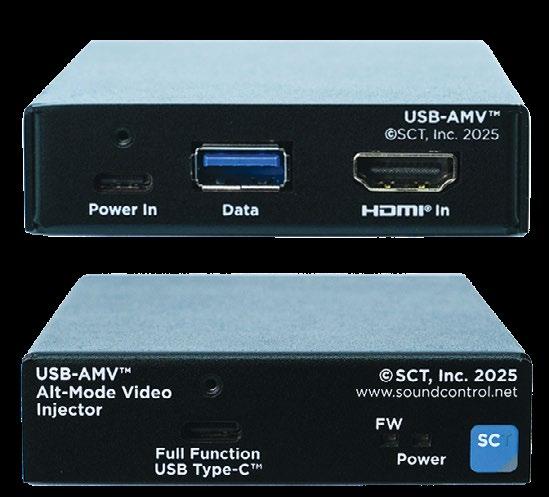
USB-AMV
The USB-AMV bridges the gap between legacy AV and modern USB-C devices. The compact adapter combines HDMI video and USB into a single USB-C connection with DisplayPort Alt Mode and audio support—delivering video, audio, and data to videobars, codecs, and BYOD spaces. Locking USB-C ports ensure secure connections, while the included L-Brackets offer easy mounting.
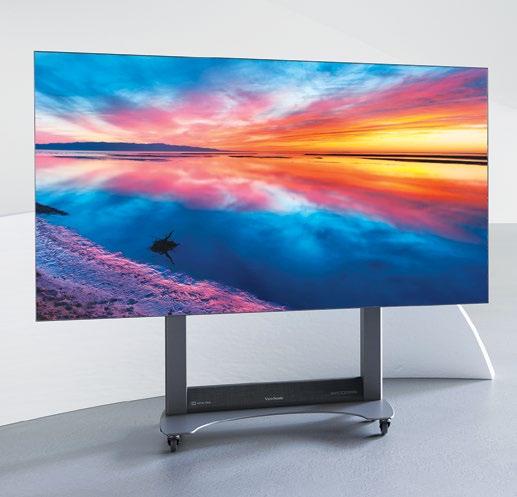
The ViewSonic LDS138-151 is a 138-inch, all-inone mobile dvLED display solution. It comes fully assembled and features a foldable design that can be packed into its custom flight case, making it easy to set up and share between classrooms, event spaces, meeting rooms, and other areas. The display offers the benefits of an immersive large screen with the mobility of smaller displays.
Users simply unfold, plug the display into a standard 20 amp outlet, and the LDS138-151 will immediately provide large-format images and immersive sounds. There is no calibration required and no additional installation costs—just unbox and turn it on. Engineered for durability and stability, the LDS138-151 is protected with an advanced Glue-on-Board (GOB) surface treatment technology, which provides an IP54 rating to protect the display against moisture and dust, as well as an IK06 rating for impact protection. The LDS138-151 display also features front-serviceable LED modules for easy maintenance.

TriCaster Vizion offers the latest in IP connectivity, configurable SDI I/O, and powerful switching and audio mixing. It also features graphics capabilities and AI-powered automation of time-consuming tasks, enabling production teams to focus on bringing their vision to life. For production and budget flexibility, TriCaster Vizion brings licensing options and the choice of two different hardware platforms. As part of Vizrt’s commitment to the success of our users, support is built into both the perpetual and subscription licensing options.
TriCaster Vizion is the hub of a complete digital media production ecosystem, devised from conversations with the TriCaster community. It offers flexibility for producers to choose what they want now, as well as the direction in which they want to grow. The result is a live production system that empowers users to push creative boundaries, streamline workflows, and deliver the content they envision.

By Mathew Newfield
It’s time to develop new cybersecurity strategies for Pro AV environments.
or years, AV and IT existed in separate worlds. AV systems were judged solely on features and user experience; cybersecurity wasn’t part of the AV conversation (and, to a large extent, it still isn’t). CIOs largely ignored AV equipment tucked in corporate production studios, and CISOs saw little reason for concern, as long as AV systems were air-gapped.
But that clean separation is now a thing of the past. AV software suppliers have embraced IT protocols and introduced IP-based solutions. Today’s AV solutions access the internet, often have remote management capabilities, and are delivered and consumed using software-as-a-service, platform-as-a-service, and infrastructure-as-a-service models. As a result, many organizations are calling on their CISOs and CIOs to take ownership of their AV environments.
Despite major advancements, AV systems still lag years behind their IT counterparts when it comes to patch management, certifications, and testing control. Implementing modern cybersecurity controls such as VPNs or microsegmentation into an AV or media solution can be especially difficult because AV environments were not designed with these protections in mind.
Additionally, some AV systems lack the same tolerances as IT systems in terms of factors such as latency, which can occur when implementing cybersecurity controls. For example, if it takes a few seconds for an employee on a corporate laptop to bring up a web browser or access an application, that latency isn’t going to impact your business. But if an AV broadcast out of your facility has too much latency, it can create jitter, which can result in choppy audio, dropped frames, synchronization issues between audio and video, freezing video, and other problems that impact the quality of the content and the overall experiences of the viewers and listeners.
Unsure where to begin with AV cybersecurity? Start here.
Implementing an AV environment without understanding and addressing the requirements of your organization’s CIO and CISO is like building a house without including electrical wiring. Your new AV system may look great, but if it lacks crucial pieces, it
can bring your project to a screeching halt and you may have to rebuild the AV system to meet those requirements.
Ask your CIO and CISO for their requirements at the beginning of your AV project planning. CISOs may have certification requirements and need the project to follow standards such as NIST and/or OWASP. Ask them to share a full list of their cybersecurity requirements.
Most CIOs will ask questions about access, the patch management process, what controls will be used, and what systems IT needs to connect for monitoring uptime and downtime as well as alerts. But every CISO and CIO has different requirements and concerns, so ask them exactly what they need.
Involving your CIO and CISO at the onset of your AV products will prevent you from having to incur costly and frustrating do-overs, eliminate much of the consternation associated with these efforts, and enable you to get your AV program implemented more successfully and far faster.
Typical AV requests for proposals (RFPs) include details about what functionality a company wants, how many rooms they are looking to outfit, and when they need the job to be done. But you don’t often see cybersecurity and IT control requirements in these invitations to potential partners—and that’s an oversight.
Include those requirements if you issue an AV RFP, because if your partner doesn’t understand cybersecurity and tech stack controls, you will run into problems, because your integrator won’t be able to answer questions from your CIO and CISO. Also, initiate conversations with your product manufacturers. Ask questions, such as what does your patch management program look like? What can you tell me about your third-party testing program? What is your current product revision? Have you done user acceptance testing that you can share to enable us to verify that your solution will be interoperable with our existing environments?
Getting answers to these questions, and aligning cybersecurity and IT control requirements, can go a long way toward preventing issues that could impact your overall environment. You don’t want to run into a situation in which an untested patch is automatically deployed, floods the network with too much data, and takes down other parts of your infrastructure.
In the past, when AV environments were isolated, such issues were not a concern. But in today’s
connected environment, AV has the potential to take down infrastructure like core switches and firewalls.
Even if you get your CIO and CISO involved in your AV project from the start, share their requirements with your AV integrator and suppliers, and work together to implement a solution that is built with the proper cybersecurity and IT controls, there’s still important work to do. Given configuration changes, new patches, and other evolving situations, you will want to revisit, test, and potentially make changes to your cybersecurity and IT controls on a periodic basis.
You may even want to consider contracting with your AV integrator or other partner to do an independent security verification of your AV environment every time you implement a patch. Nothing is bulletproof, but your organization will be more resilient if you do regular testing. Seek an integrator that looks beyond just the features and functionality aspects of AV solutions and brings cybersecurity and IT controls to the forefront of all of its designs and conversations.
Partners with cybersecurity expertise and capabilities—from Security Technical Implementation Guides (STIGs) to third-party verification—can address your CIO and CISO’s requirements. What’s more, they can raise critical questions your organization needs to think about but may not have even considered.
In fact, it’s similar to what happened when IT and operational technology converged and internet of things (IoT) devices came onto organizations’ networks. Events like the Target breach, where adversaries came in through an HVAC contractor, and the casino attack, in which bad actors gained entry via a fish tank thermometer, demonstrated that vulnerabilities are everywhere and cyberattacks can originate from the most unexpected places.
In the wake of this, businesses realized they needed to prevent adversaries from getting access to and through these systems, implement secure patch management, and take other steps to control and secure these environments. With IT, IoT, and AV coming together, AV is now just part of the mix.
Don’t wait to address AV cybersecurity. Make it foundational to all your AV projects.
Mathew Newfield is the president and chief commercial officer for Diversified, and also serves as a board member and vice chair of the Cybersecurity Maturity Model Certification Accreditation Body.

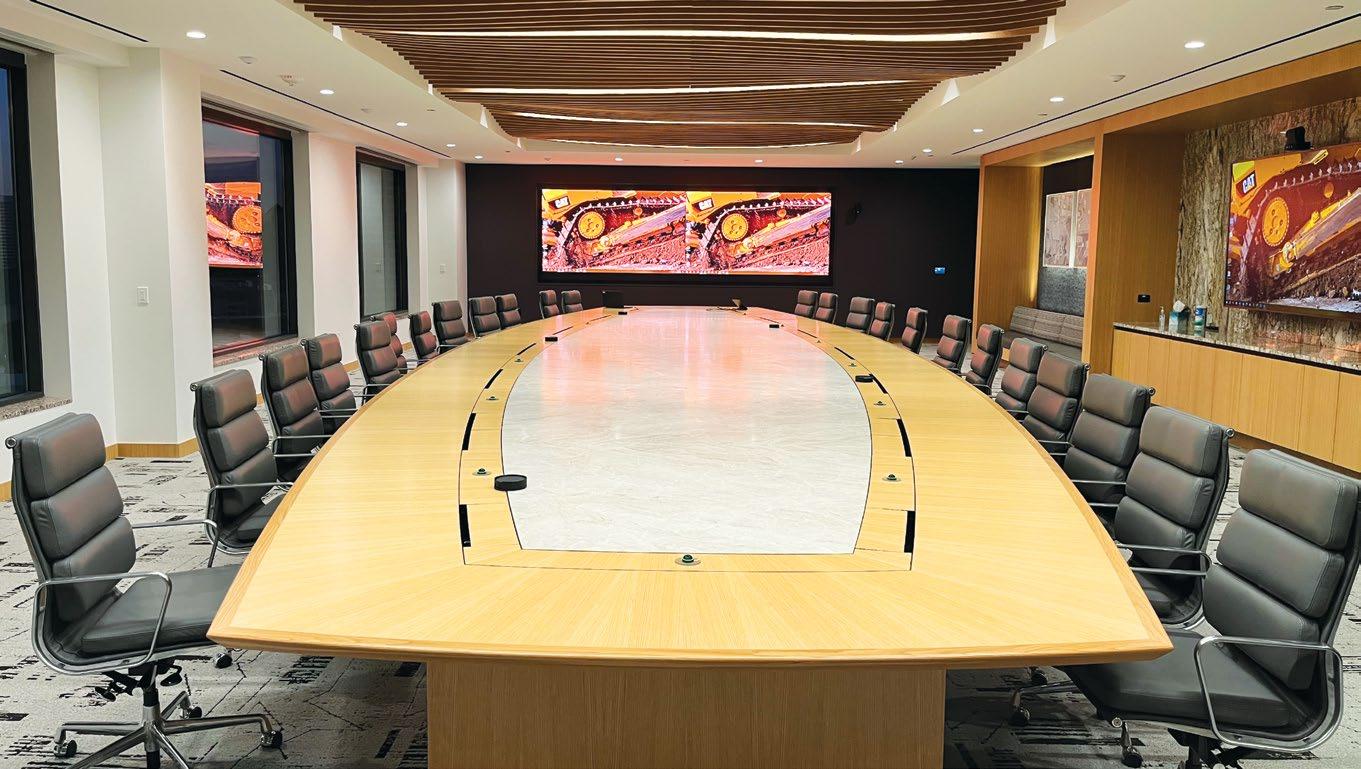
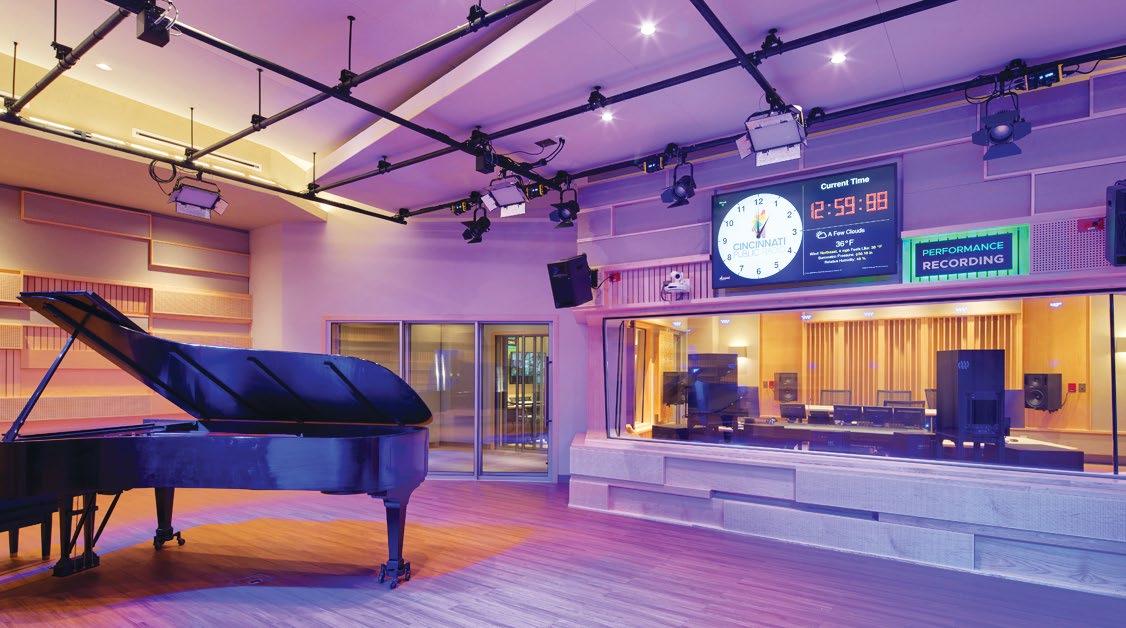
Denver INTEGRATOR: CTI
CoBank transformed an internal floor into a high-impact planning and collaboration hub, so 250–300 people can align every 10 weeks without leaving campus. CTI partnered to deliver the AV and experiential technology that replaced the hotel setup and elevated the program increment (PI) ceremony into a “larger than life” flagship experience.
Only 10—dems the rules. And with dozens of entries, integrators didn’t make it easy on the SCN editorial team to choose 10 installations to highlight this year. Each project is unique, but together the following installations provide an excellent sampling of the innovative work that integrators continue to deliver.
1
Caterpillar Global Headquarters
Irving, TX
INTEGRATOR: Pearl Technology
Caterpillar reached out to Pearl Technology to ensure quality AV solutions were implemented throughout the facility. The solutions needed to be robust and repeatable, with a standardized and simplified user experience for the executive team. Keeping with the Caterpillar AV standard and still meeting the high demands for speciality use required by the executives brought a fun and unique challenge to the project, which included conference rooms, training rooms, offices, executive meeting spaces, and a broadcast production studio.
2
Cincinnati Public Radio
Cincinnati
INTEGRATORS: WSDG/Procraft Media
Cincinnati Public Radio (WVXU/WGUC/WMUB) is the public radio station servicing southwest Ohio, southeast Indiana, and northern Kentucky. The two story headquarters is a ground-up, mass timber building that includes multiple production facilities and offices, as well as an outdoor plaza that is open to the public and available for live performances. The design team was tasked with completely reimagining CPR’s production facilities and capabilities. The space and communityforward focus of the new HQ inspired a very public, forward-facing work environment that would emphasize multiple production spaces with a high degree of visibility and accessibility. Emersion Design served as executive architects of the project, while WSDG was the lead acoustical and AV system designer for the production spaces, as well as co-designer on the acoustic design for the rest of the facility. Procraft Media was the on-site AV integration team.

Plano, TX INTEGRATOR: Ford AV
Ford AV was contracted to execute a major AV upgrade to NTT DATA’s Client Experience Center and transform it into a fully immersive, collaborative environment. The expansive space spans an entire floor and includes an Executive Briefing Center with traditional conference rooms, as well as an Innovation Center with a virtual studio designed for hands-on, interactive problem-solving sessions with clients. The project’s goal was to create a seamless AV experience across both sides of the facility, with a particular focus on improving the hybrid meeting experience for remote participants. The refresh addressed post-COVID collaboration needs and showcased NTT DATA’s technological capabilities. Ford AV provided an advanced, integrated AV solution that allows meetings to begin in a boardroom and transition through multiple collaborative zones without disrupting remote attendees, creating a seamless meeting experience across physically separate environments.
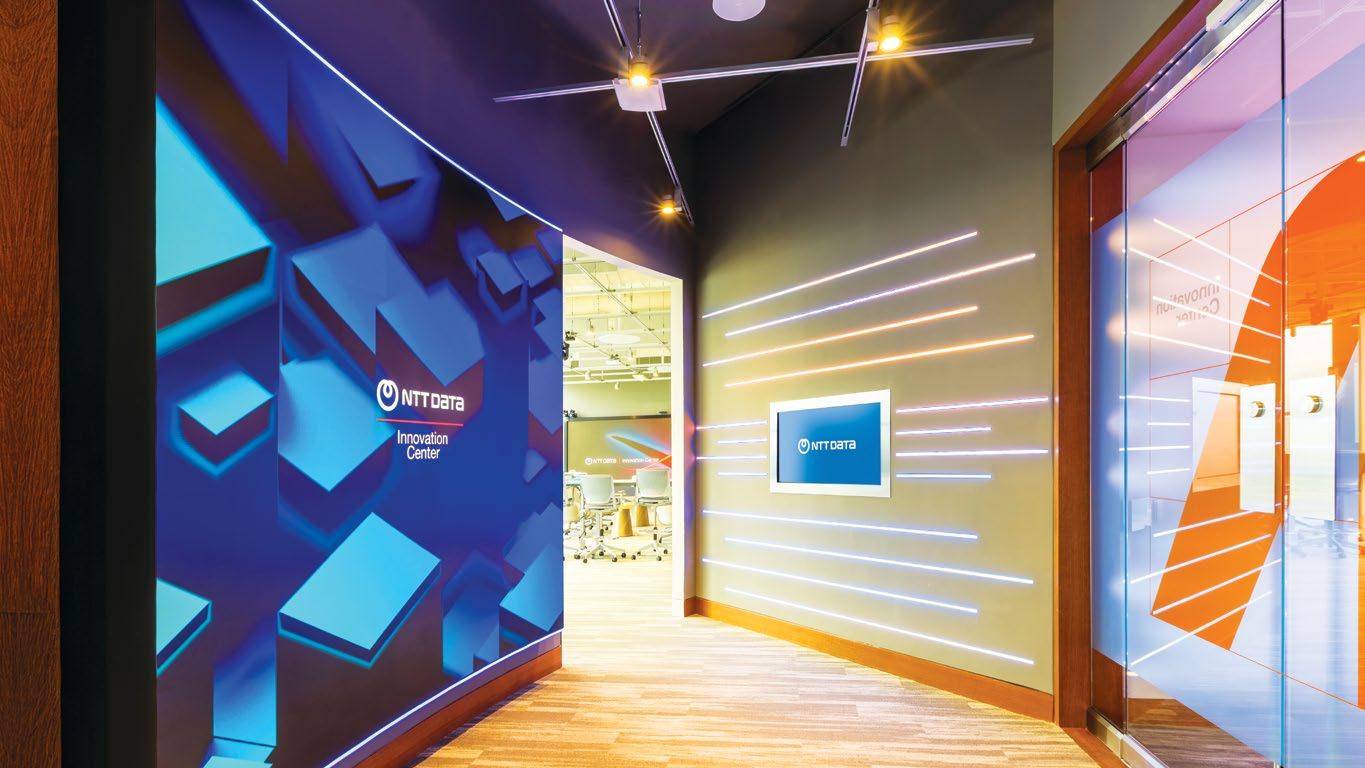
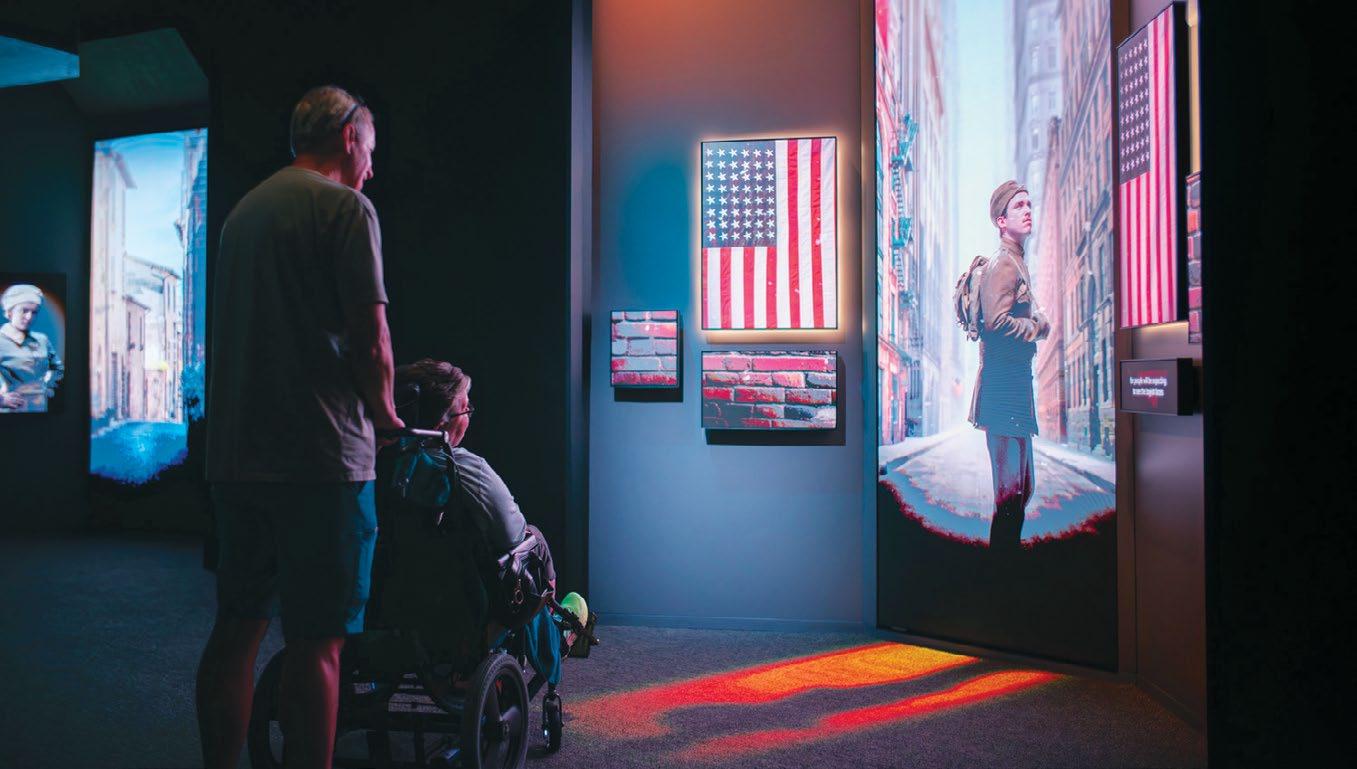
5
Encounters, National WWI Museum and Memorial Kansas City, MO INTEGRATOR: Electrosonic
The Encounters exhibit consists of four alcoves, depicting 16 unique individuals impacted by the Great War. Each alcove is in a beehive shape to create an intimate, personal experience for the visitor. The exhibit features 16 characters, based on real people using historical records, to depict soldiers, civilians, factory workers, and more, who share their unique experience through video displays. As the characters move into frame, LED strips are used to create a shadow effect and

then their shadows are projected above each alcove, further enhancing the immersive experience. Encounters is interactive, with sensors that trigger the characters to speak when visitors approach. The characters’ stories loop, allowing visitors to hear different perspectives as they move through the alcoves.
6
Health Sciences Innovation
Building, University of Arizona Tuscon, AZ
INTEGRATOR: Level 3 Audiovisual
This installation delivers a purpose-built AV


environment designed to enhance medical training and hybrid instruction. A networked AV over IP backbone distributes content seamlessly across 18 perimeter-mounted 4K displays, ensuring uniform visibility from every seat. Instructors can present from local PCs, wireless devices, HDMI wall inputs, or a ceiling-mounted visualizer, while dual 4K PTZ auto-tracking cameras capture both audience and presenter perspectives. Integrated DSP and ceiling array microphones provide clear speech reinforcement and conferencing intelligibility, supported by wireless microphone systems for







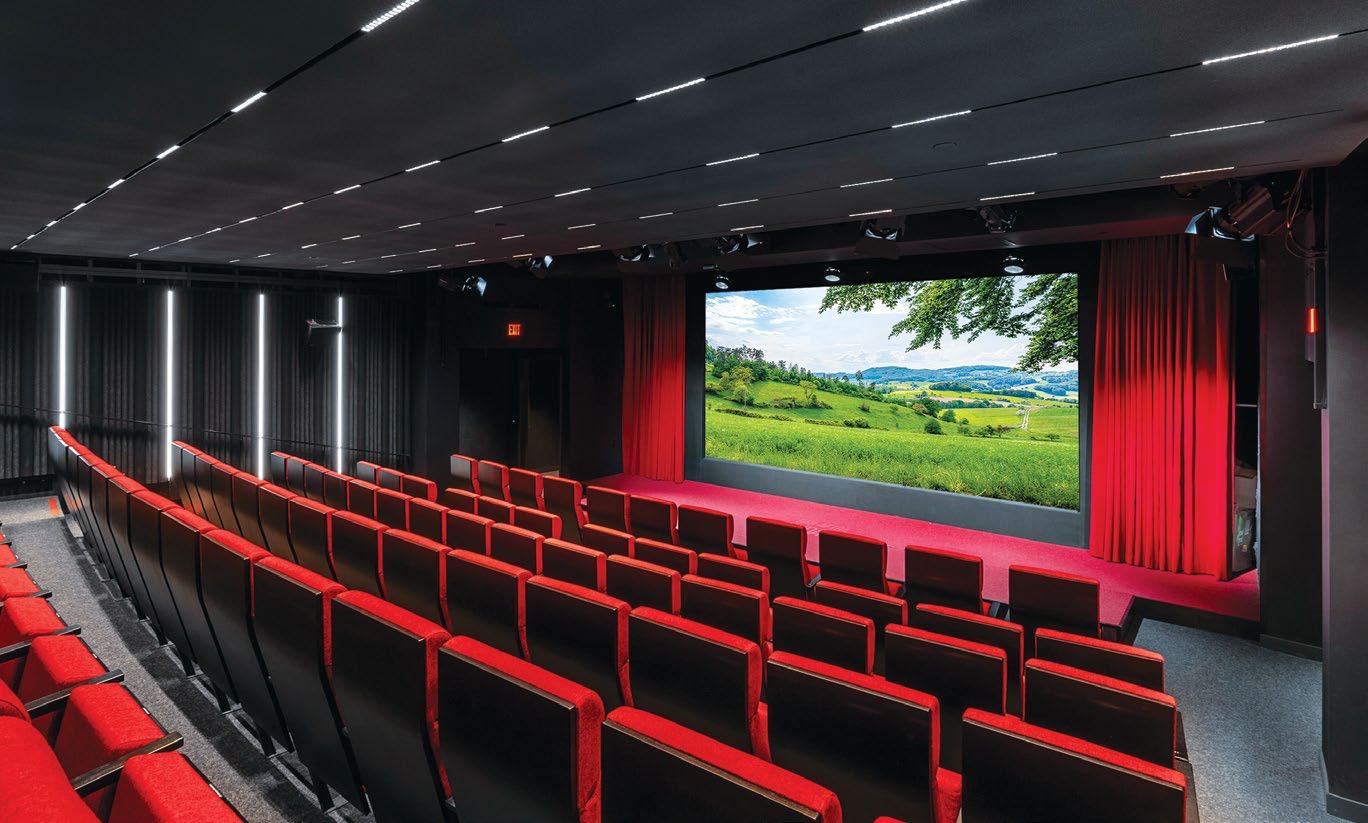
instructional flexibility. Control is centralized through a touchscreen interface. Display layouts and GUI aesthetics intentionally apply color psychology principles to support positive mental health for learners. Remote monitoring and diagnostics ensure long-term reliability. The room’s furniture and open layout allow multiple seating arrangements, enabling small-group collaboration or full-class instruction. Together, the systems create a versatile, future-ready environment that strengthens engagement and learning outcomes.
Meryl Streep Center for Performing Artists Los Angeles
INTEGRATOR: Advanced Systems Group For Advanced Systems Group (ASG), what started as a plan to update a screening room for the SAG-AFTRA Foundation grew into a fully realized center built for modern production, connection, and learning. The Meryl Streep Center for Performing Artists, a 15,000-square-foot facility includes screening rooms, voiceover labs, on-camera studio, classrooms, and creative spaces. ASG outfitted the Tom Hanks and Rita Wilson Screening Room for 4K production, including cameras, live switching, and multi-track audio for live streaming and archival use. The centerpiece is a 225-inch LG Miraclass 4K Cinema Display (the first of its kind) paired with a Dolby IMS3-L cinema server and Storm Audio ISP. ASG engineered a Meyer Sound 7.1 surround system to maintain audio fidelity while minimizing sound bleed. The entire center is
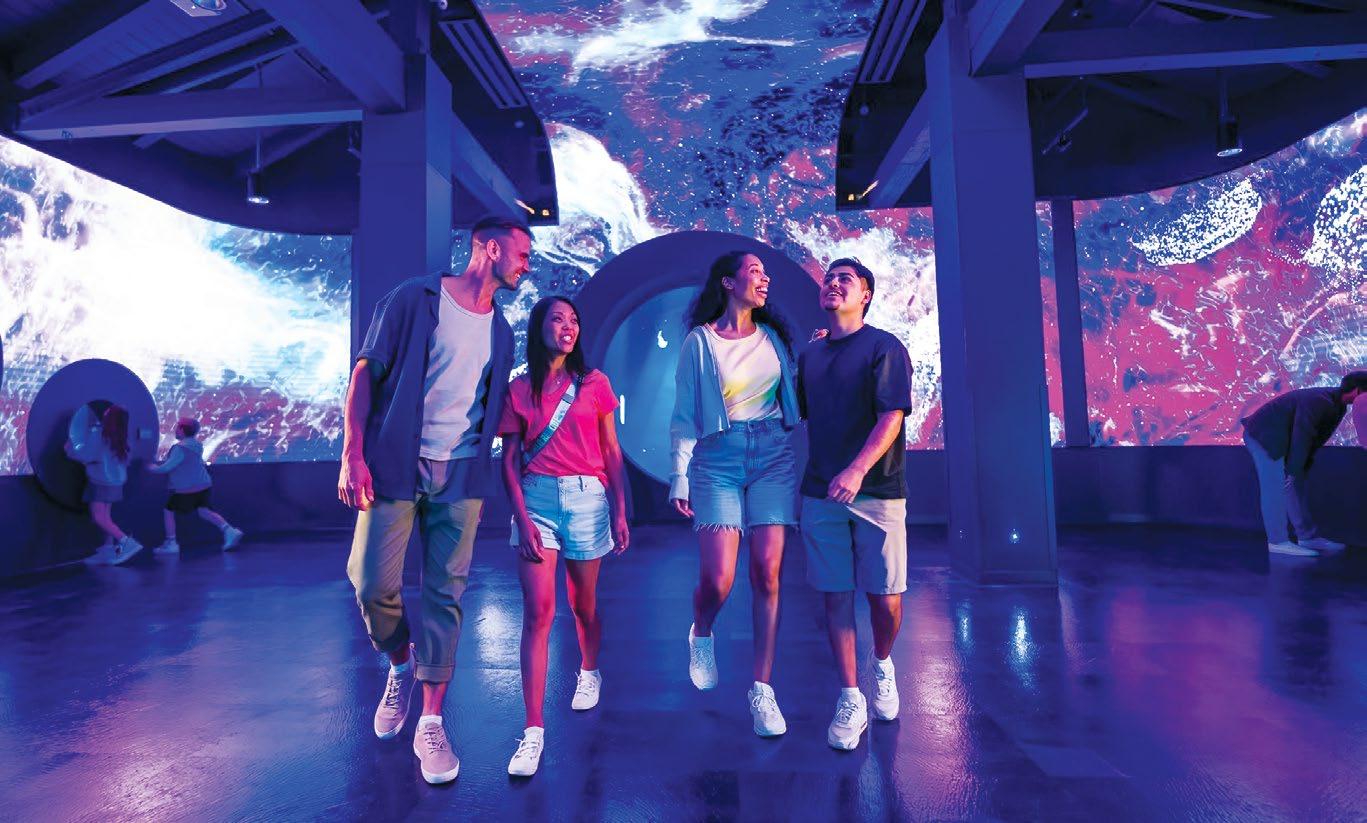
connected through an AV infrastructure with Crestron wireless interfaces enabling control.
8
MSC Cruise Terminal at PortMiami
Miami INTEGRATOR: Quince Imaging
Maris is a landmark digital art installation at MSC’s new Cruise Terminal in Miami, transforming 75% of the terminal’s glass façade—more than 11,000 square feet of Gauzy exterior-grade smart glass—into a living ocean canvas. Designed by artist Danielle Roney and delivered by Quince Imaging, the system features an advanced AV backbone, including 18 Christie RGB M4K25+ laser projectors, 25 DisplayNet DN300 units, a Q-SYS vCore virtualized processor, NETGEAR M430096X switch, seven real-time render engines, and a Display Devices liquid-cooled rack for stability and performance. The infrastructure powers 166 million pixels of dynamic seascape visuals, seamlessly mapped across the façade, to create an evolving, immersive experience for more than 36,000 passengers daily. By uniting high-end engineering with visionary artistry, Maris demonstrates how projection mapping and transparent display technology can redefine architectural surfaces.
San Diego INTEGRATOR: AVI-SPL
AVI-SPL partnered with SeaWorld to elevate a new jellyfish habitat into a fully immersive experience that innovates with AV technology, guest engagement, and animal care. The exhibit was reimagined from the
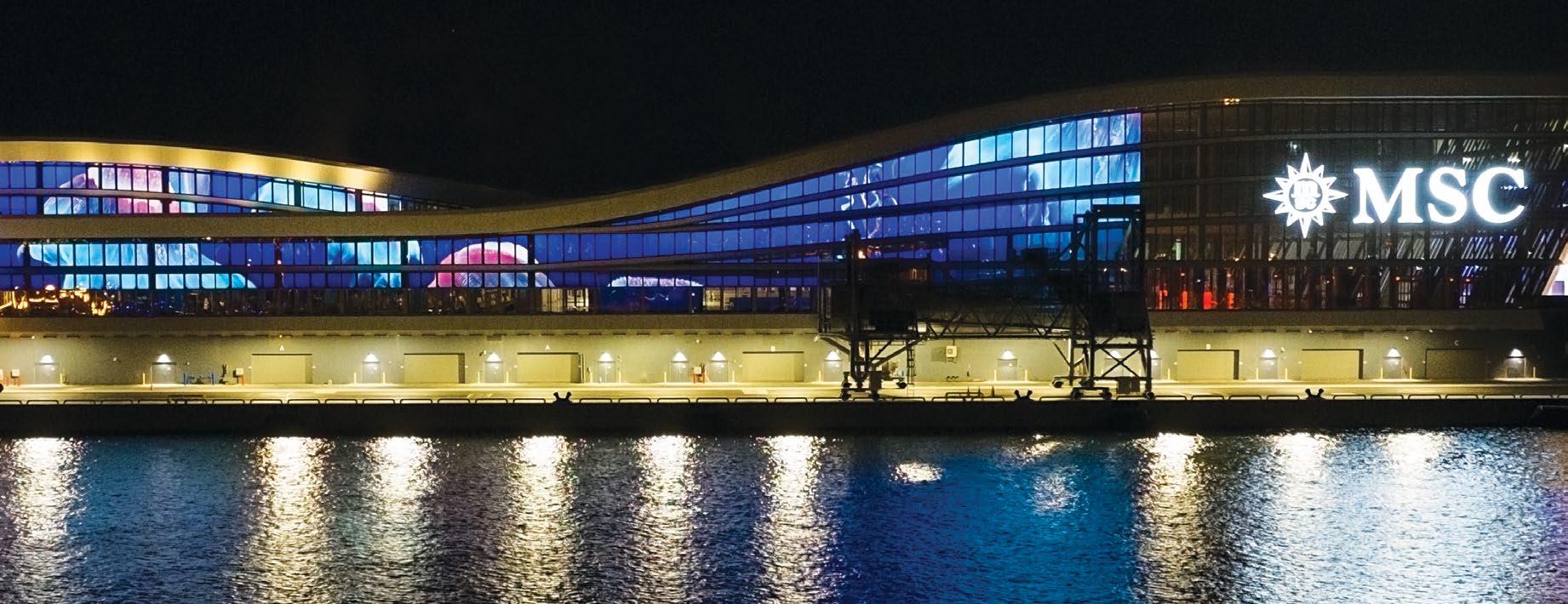
ground up, ensuring technology and environment work in harmony. The installation was completed in phases, allowing AV systems to be integrated while aquarists prepared the tanks and fine-tuned conditions for the jellyfish. Curved LED walls and ceilings, synchronized lighting, multi-zone audio, and custom show control were installed and programmed to blend seamlessly with the live exhibits. Debuting in 2025, “Jewels of the Sea: The Jellyfish Experience” became SeaWorld San Diego’s first large-scale immersive animal exhibit to feature AV technology at such a large scale.
INTEGRATOR: Save Electronics
Sidecar Social’s newest 25,000-square-foot location raises the bar for hospitality AV. Designed and integrated by Save Electronics, the installation spans two floors, multiple karaoke and meeting rooms, and a 7,500-square-foot patio, featuring more than 75 displays and four large video walls. To ensure seamless distribution of 21 content sources—from Apple TV to DirecTV— Save Electronics deployed 21 Just Add Power 3G Ultra transmitters and 75 receivers over a NETGEAR Pro AV network. The built-in scaling capabilities of the 3G Ultra family allow flawless EDID management and instant switching between 4K and 1080p displays, eliminating latency and compatibility issues. Fully integrated with Crestron Control, staff can manage content across the entire venue with a simple iPad interface.
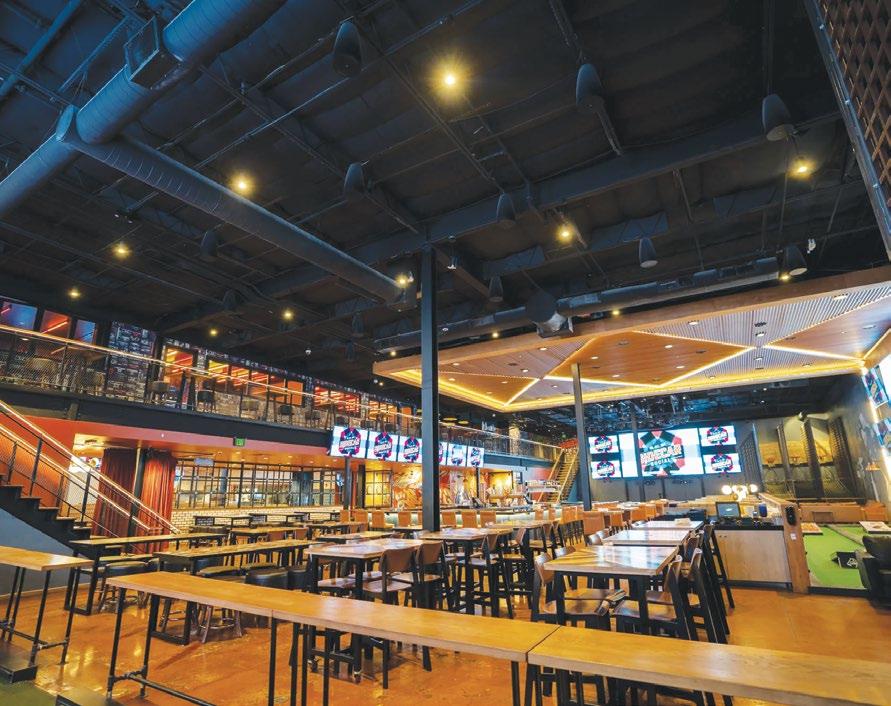


Detroit Country Day School is providing students with access to high-end virtual and podcast studio spaces.
By Jennifer Guhl
When Detroit Country Day School in Beverly Hills, MI, unveiled two new video production spaces—its XR studio and a vodcast/podcast suite—the goal was to give its PreK-12 students access to professional-level production tools, often reserved for film studios, to improve storytelling opportunities.
“The most powerful two words are ‘what if,’” exclaimed Danialle Karmanos, a trustee and donor, as well as a proud parent of three current DCDS students, whose early career in journalism sparked a love of production. These words acted as the catalyst for creating these two innovative spaces, which are among the first of their kind in a U.S. K-12 setting, made possible by a generous gift from Danialle and her husband, Peter.
“This is definitely the first project of its kind we’ve been involved in,” said Will Jennings, director of special projects for 4Wall Entertainment, the system designer and integrator for the XR studio. “There may
be one or two others in the U.S., but for elementary and high schools, the cost is usually a barrier. In this case, donor support made it possible.”
Located in the Upper School, the XR studio spaces anchor the arts wing, alongside photography, ceramics, and mixed media. A live camera feed streams to a 100-inch 4K display in the arts commons, allowing the entire arts wing to watch live productions in real time. The vodcast/podcast studio, positioned diagonally across from the media center, is visible through a glass wall that invites passing students to take a look.
“We wanted students to emulate the professional content they’re already consuming, short-form video and longer-form podcasts in a studio that feels real,” said Mike Medvinsky, DCDS creative technologist, who is the visionary hired by the school to oversee the use of studio spaces for the students.
The XR studio is anchored by an INFiLED DBmk2 1.9mm pixel pitch curved LED video wall measuring 26x8 feet. To support the system running in 4K
resolution, it uses a setup managed by Brompton Technology, including a rack-mounted Brompton 4K Tessera SX40 processor and two Tessera XD 10G data distribution units.
“When we started researching the leaders in LED technology, Brompton rose to the top,” explained Medvinsky. “All the major concerts and video production studios are run through Brompton, so they were our first choice.”
Other key components include a Blackmagic Design ATEM Constellation and HyperDeck Studio 4K Pro, RED V-Raptor X camera, and a Mo-Sys tracking system. Workflows for the XR studio focus on the Disguise VX 2+ media server, which, when used with a Disguise RX III render node, supports real-time content playback and facilitates the ingestion and deployment of content across the LED wall.
“We recommended Disguise media servers, which are the industry standard in virtual production,” Jennings added. “It was very relieving when Mike said, ‘I understand this is the expensive option, but it is the best option.’”
Initial conversations with 4Wall about the XR studio started in August 2024, with design and product procurement continuing throughout the fall. By January, 4Wall was on-site for a three-day installation, which led to the official opening of the studio spaces in February 2025.
Once installation was complete, 4Wall provided training to staff members and students to help them quickly get up to speed on their new facility, but Jennings emphasized that nothing installed was

watered down for the younger audience who would be using it.
“Kids are using the exact same tools that film professionals use on set,” he said. “We didn’t dumb down the system; we wanted to provide that through line from classroom to industry.”
For the vodcast/podcast studio, known as “the Pod” at DCDS, Medvinsky led the technology integration, creating a four-camera, well-lit, switchable room designed for on-camera conversations, shows, and audio-only podcasts. He has focused on one-to-one collaborations with teachers to generate ideas for how the studio can be utilized in the classroom. Faculty members schedule time on a shared calendar with Medvinsky to co-plan, storyboard, and conduct research. Plus, he participates
needed to “barely outrun the bulls” into the coliseum.
Usage varies by grade. For the younger grades, the XR team works more directly with students, providing edited clips, while older students take on roles in operations and editing. “Think of the XR studio as a creative classroom,” said Medvinsky. “It’s place-based learning when the place comes to you.”

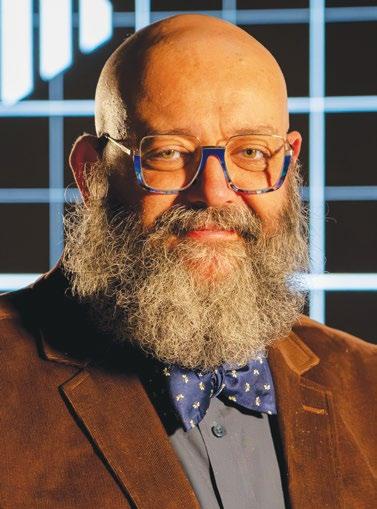

“These creative spaces beget innovation,” Medvinsky added. “When students see what’s possible, ideas and courage compound.”
Beyond classroom use, the XR studio enhances DCDS’s Film Program, offering students endless options to create critically acclaimed feature films.
“When we say our students make full-length feature films, they are actually full-length amazing feature
Karmanos is most proud of how the spaces have inspired teachers to think outside the box and use production as a key tool for creativity and higher learning. “There’s no exclusion in these rooms,” she observed. “Kids from every corner of campus are collaborating. Faculty trust is building, and once teachers see a simple one-day win, their guard drops.


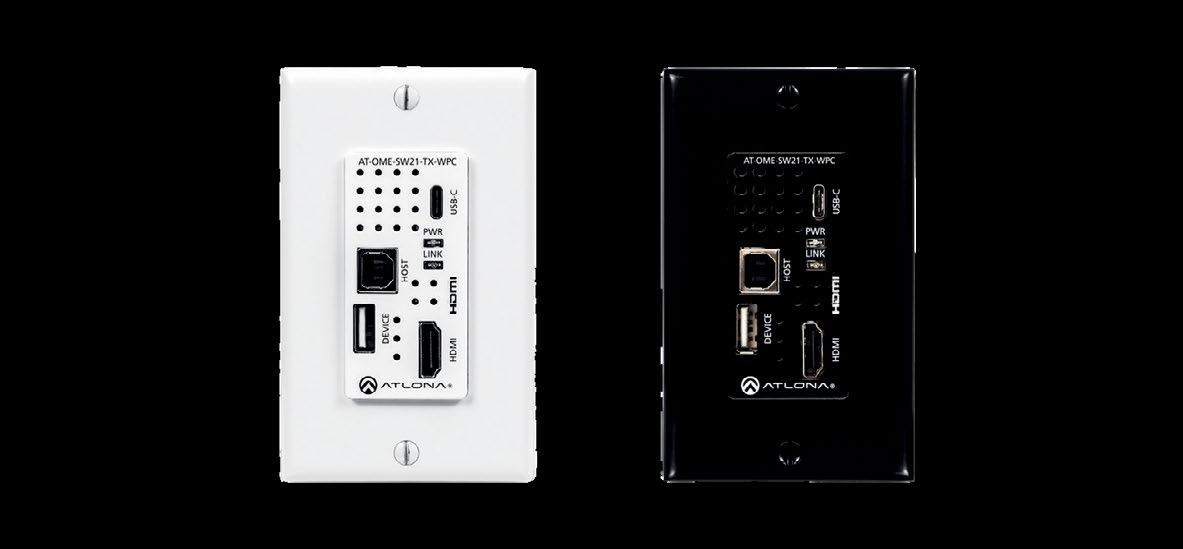

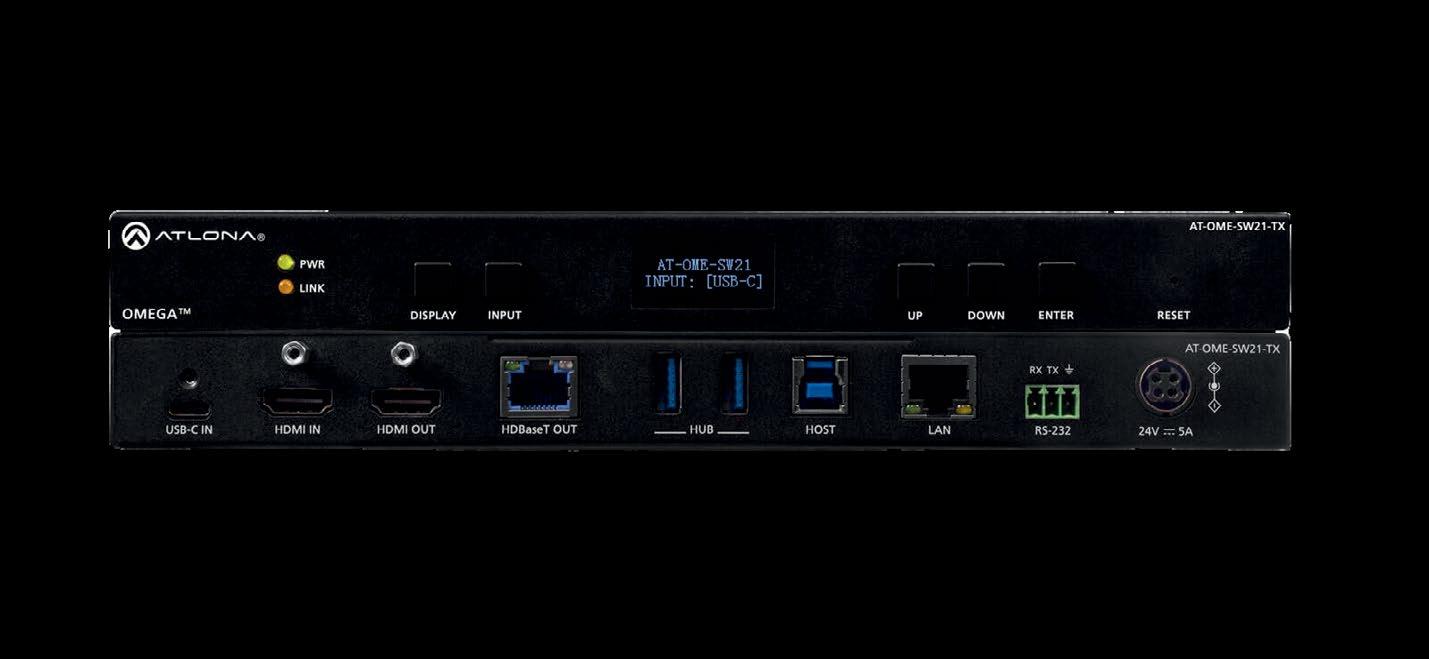

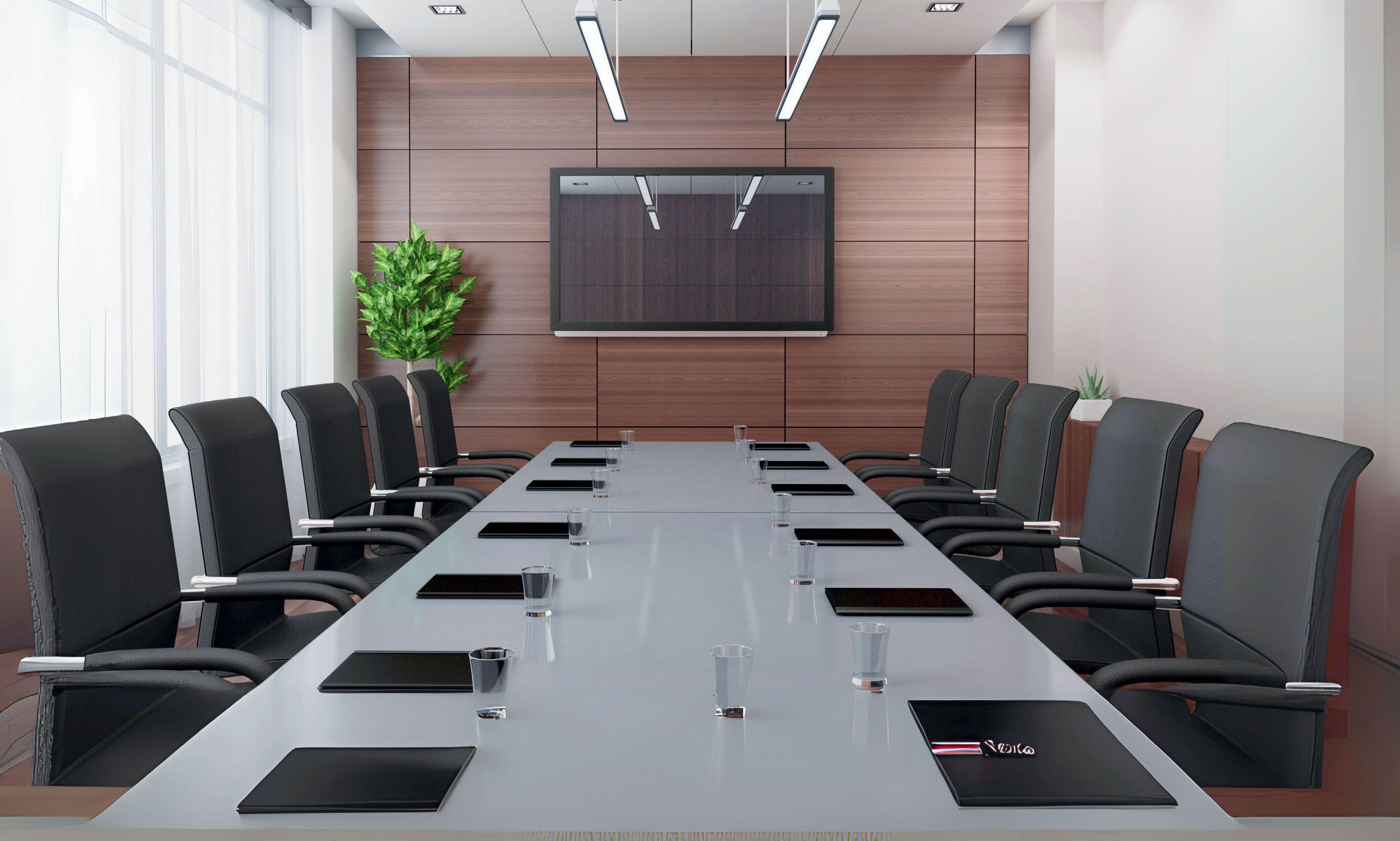

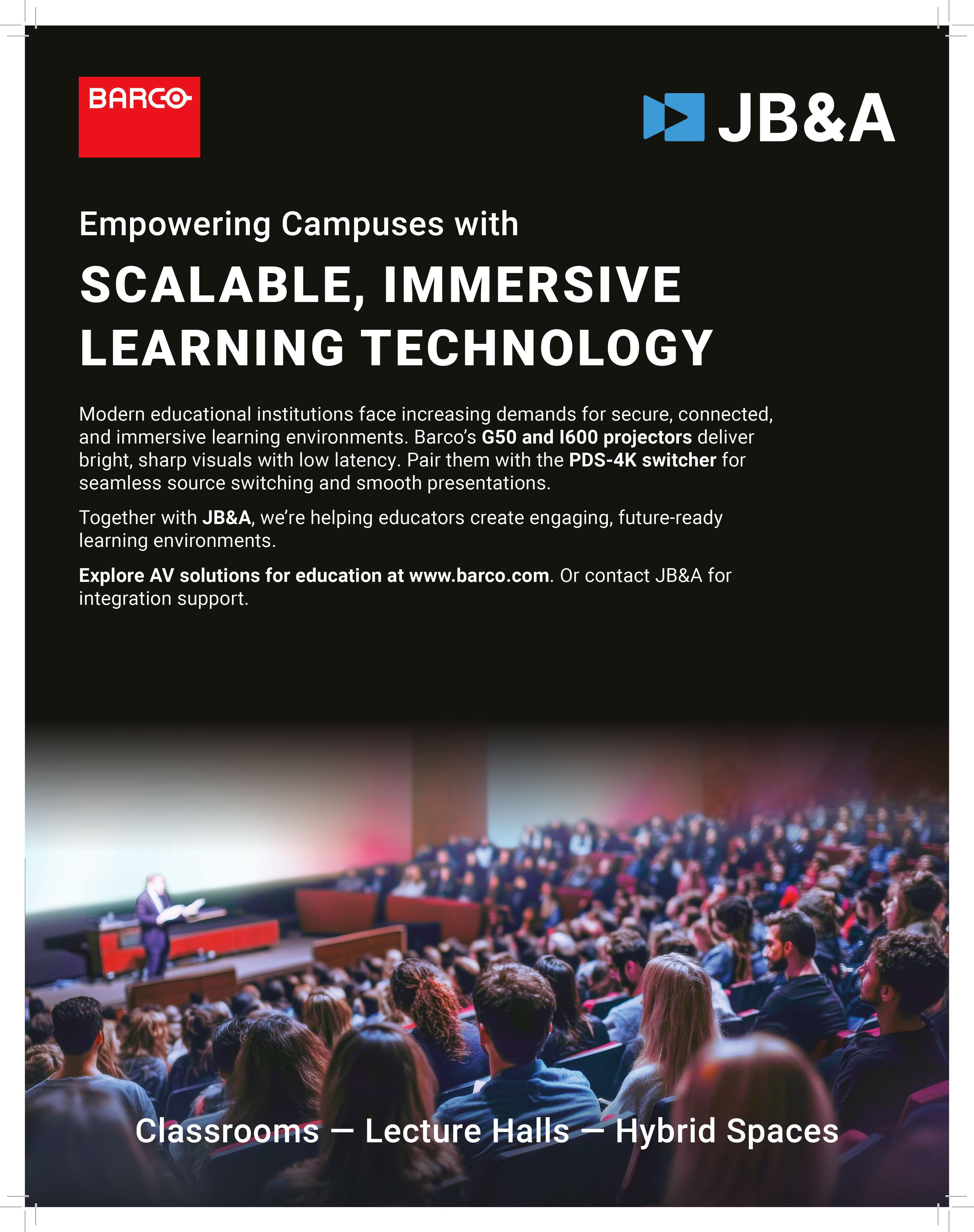

Kristin Spiewak
Senior Manager, Sharp
Today’s smart classrooms are powered by a suite of Pro AV technologies, enhancing engagement, accessibility, and support both in-person or hybrid learning. Solutions like interactive displays and whiteboards allow real-time annotation, multimedia integration, and collaboration. Digital signage and video walls assist with communicating announcements, alerts, and sharing content in hallways, libraries, and auditoriums. Additionally, laser projectors are still used today which provide crisp imagery and are practically maintenance free. Finally, dvLED displays offer seamless, high-resolution visuals for lecture halls and student centers. This is seeing more use, as energy efficient models have now entered the market.

Emma Eagle
Manager of Marketing and Graphic Design, Atlona Today’s smart classrooms rely on Pro AV technologies that ensure reliability, flexibility, and
ease of use. Interactive displays enhance engagement, but they require dependable AV and USB connections between the instructor’s device and the screen. HDBaseT solutions, like Atlona Omega Series, extend high-resolution video and USB up to 330 feet over a single cable, solving distance limitations while keeping installations clean. Supporting multiple connections such as HDMI and USB-C ensures compatibility with different devices, while features like auto-switching and display control make operation seamless. These technologies create interactive, efficient learning environments that reduce downtime and keep students focused.

Cindy McCullough
Senior Product Manager, Planar Easy-to-use, all-in-one LED displays continue to be an ideal replacement for projection in classrooms, offering simultaneous viewing of multiple content sources and interactivity to facilitate experiences that engage audiences and enhance collaboration. These
solutions also allow for quick and simple setup, in addition to flexibility for permanent or mobile installations. As a result, education facilities can support everyday classroom presentations and welcome visitors at a recruiting or alumni event just hours later with the same display. With built-in features like audio and processing, today’s all-inone solutions are designed to deliver maximum efficiency, ensuring universities stay focused on driving impact for students and faculty.

Paul Lee
Director of Key Markets Americas, WyreStorm Technologies
Adaptability and engagement are key in modern learning environments. Educators need systems that connect effortlessly with any device while maintaining reliability and straightforwardness. Technologies like AV over IP, wireless presentation switchers, and unified USB-C connectivity are transforming classrooms by supporting both in-person and hybrid learning. Solutions such as WyreStorm’s NetworkHD and our MX Series switchers simplify how educators share, collaborate, and manage content, ensuring that technology empowers learning instead of complicating it.
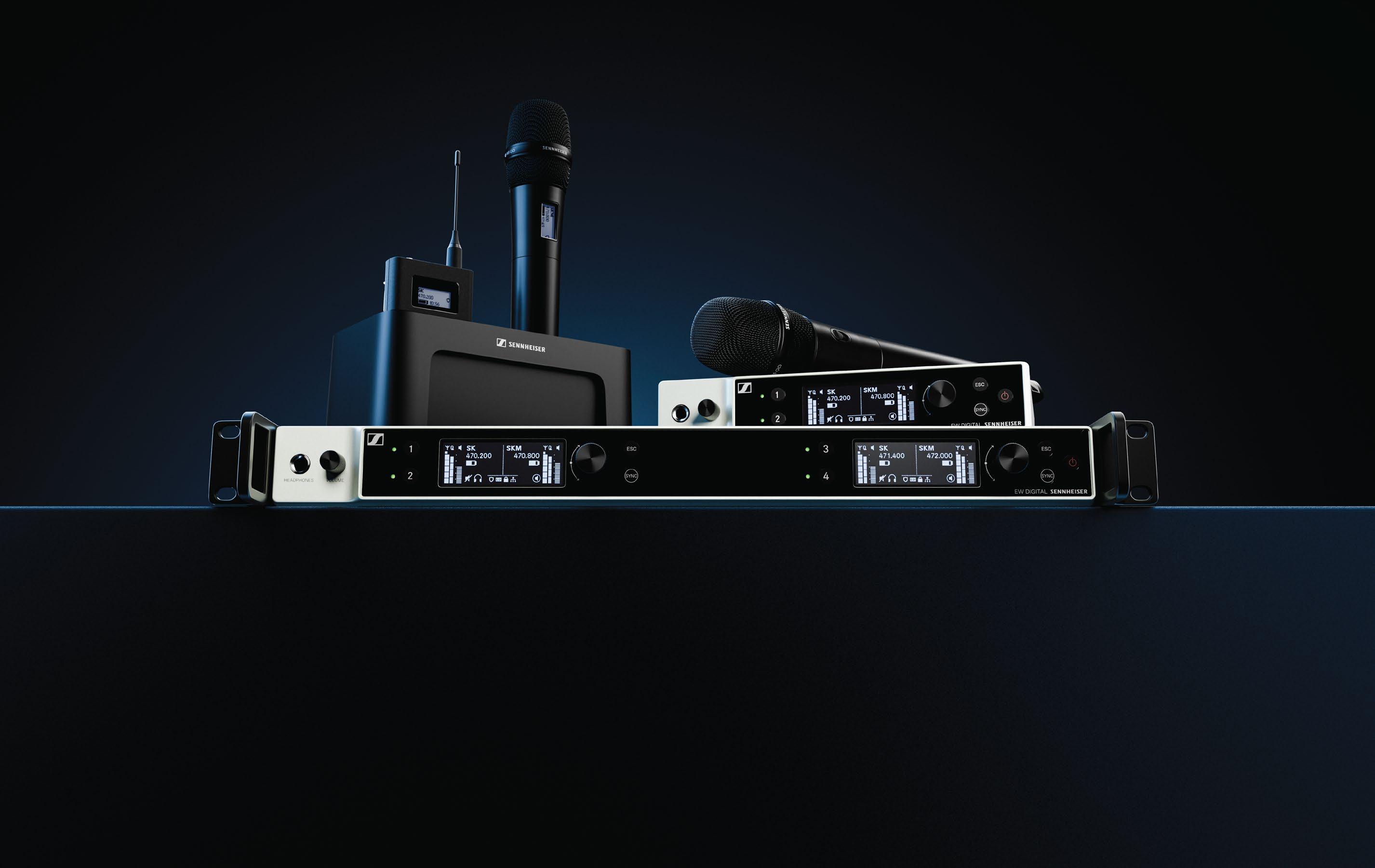
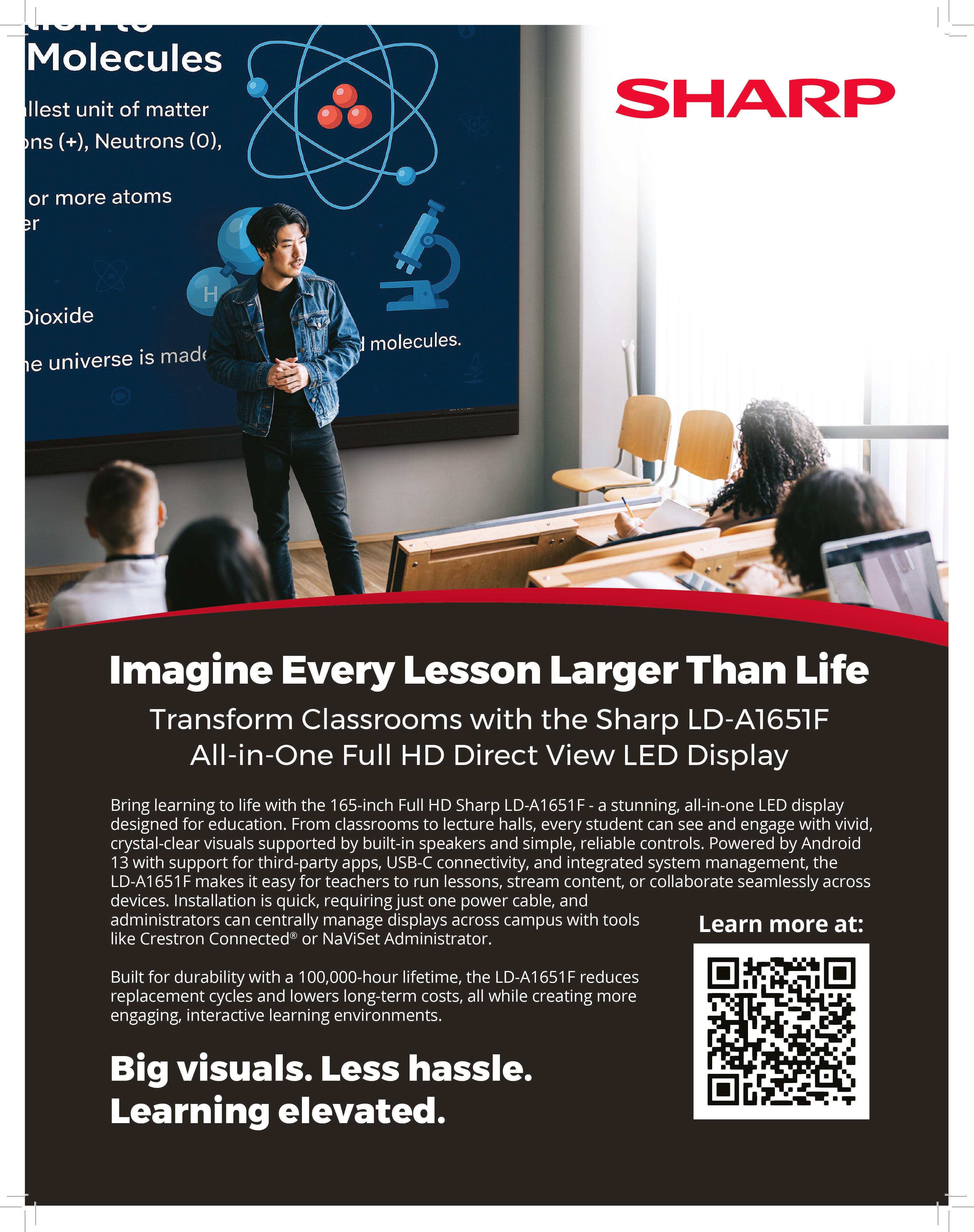

Victoria Sanville Education Director, LG Electronics USA
Today’s smart classrooms rely on integrated Pro AV technologies that support engagement, collaboration, and flexible learning. Interactive digital boards like the LG CreateBoard Pro are central, offering multi-touch capabilities, UHD displays, built-in AI, and immersive audio for dynamic lessons. LG ConnectedCare enables centralized IT management and support, while flexible IFP options allow schools to use LG’s OPS or retain existing learning management solutions. Complementary AV tools like digital signage and LED walls enhance communication and visibility, empowering educators to deliver interactive, hybrid, and in-person learning experiences that adapt to evolving educational needs.

Jakub Kolacz Manager Product and Commercialization, Business Communication, Sennheiser
As AV systems become increasingly networked, end users are grappling with how to evolve their environments without creating disruption. Legacy
software, fragmented device tools, and rising IT security expectations often slow progress—yet the demand for simpler, more scalable management is only growing. Now is the time for end users to prepare for this new era of AV/IT convergence. The priority is ease of deployment and configuration. Solutions that enable devices to be onboarded quickly, with minimal dependencies, free teams to focus on higher-value tasks. Next, interoperability and centralization are key. Too many organizations still rely on a patchwork of vendor-specific tools. By consolidating device management into a single, standardized platform, teams gain a clearer view of their systems and reduce friction across locations and departments.

Vanessa Jensen Market Development Manager, Shure
In today’s smart classrooms, highquality audio has evolved from a nice-to-have to a necessity for equitable learning and collaboration. To create engaging experiences for all participants, whether in-person or remote, AV and IT teams need the right mix of equipment and solutions that go beyond basic microphones. Ceiling array
microphones, wireless microphones, and DSP technology work to capture every voice in a room with clarity. For equitable learning, technology must be reliable, intuitive, and scalable. Integrating professional-quality audio solutions transforms the classroom environment into inclusive and immersive spaces where all voices carry equal weight.

Nick Smith VP of Technology, JB&A
The term “smart” often brings to mind wireless sharing, annotations, and remote collaboration, but as classrooms become more advanced, the basics are sometimes forgotten. Essential Pro AV technology should offer freedom. Freedom for instructors to move around while teaching, enabled by wireless lavalier and auto-tracking cameras. Freedom to display multiple content sources instead of a single source like PowerPoint. A presentation switcher such as Barco’s PDS-4K allows various materials to be seamlessly shared, so both in-room and remote audiences can see what is most relevant. Ultimately, smart classrooms thrive when flexibility is prioritized over resolution, where educators can create engaging and adaptable learning spaces for all students.
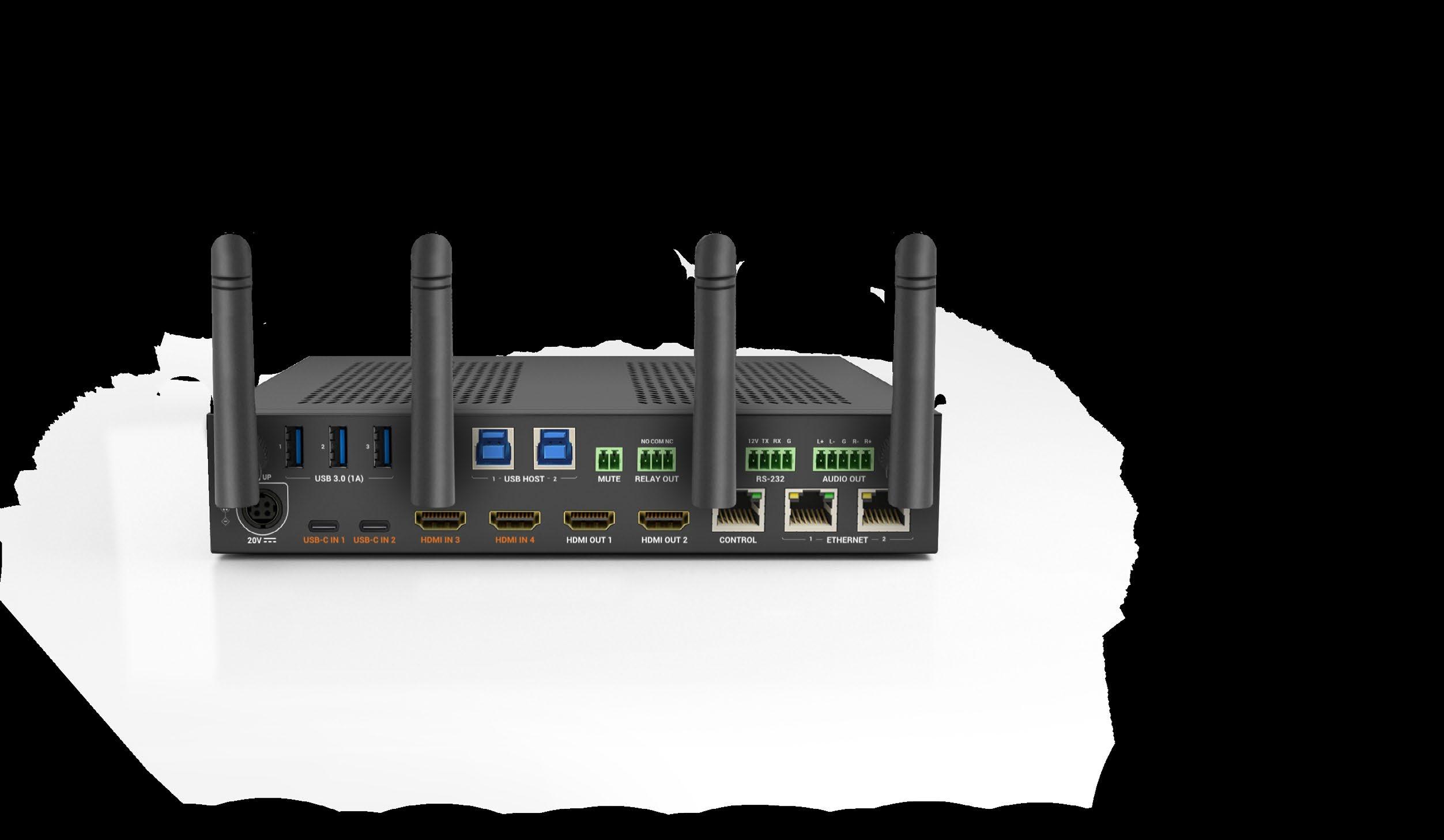




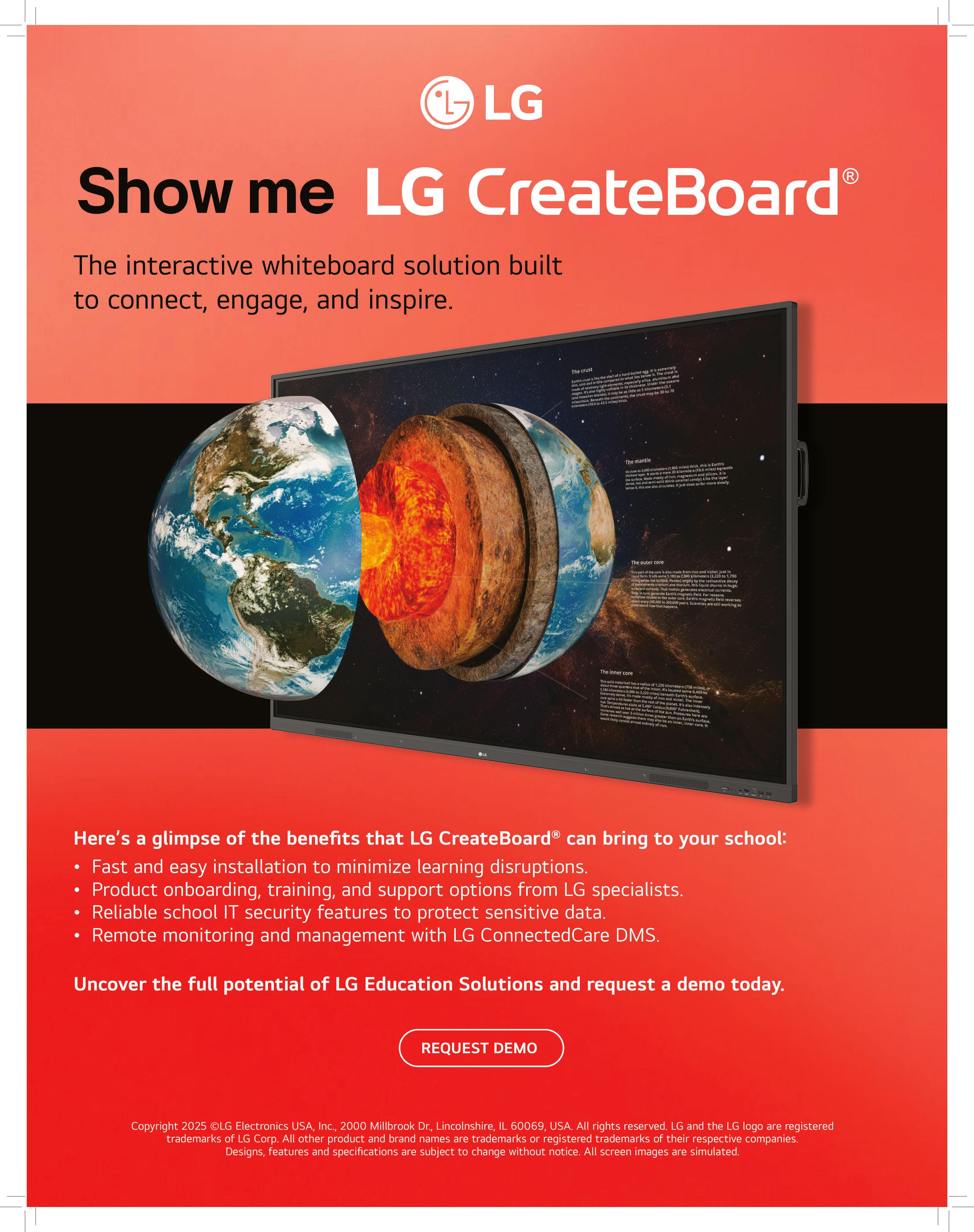
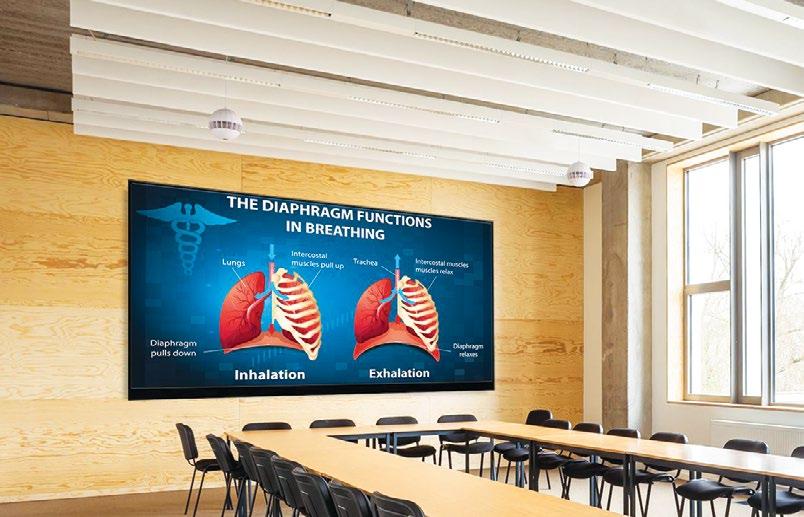
Planar UltraRes L Series
Planar UltraRes L Series Full HD resolution all-in-one MicroLED and LED displays combine Planar’s LCD features with fine pixel pitch LED technology. The easy-to-use display features on-board processing, audio, 10-point IR touch technology, and multiple inputs to support simultaneous viewing of up to four content sources. Displays are available in 109, 122, and 136-inch sizes—and offer a wall mount for permanent installation as well as a rolling floor stand for mobility.


The Atlona AT-OME-EX-KIT-LT is an HDBaseT extender kit in the Omega series that transmits HDMI video (up to 4K60 4:2:0), USB 2.0, audio, and control (RS-232 and IR) over a single CAT cable. It supports distances up to 230 feet at 1080p60, and up to 130 feet at 4K/UHD via CAT6A/7. The receiver powers the transmitter, it’s HDCP 2.2 compliant, includes USB host and peripheral ports, and has built-in link integrity testing.

The LG CreateBoard Pro Interactive Digital Board empowers K-12 and higher education classrooms with advanced, collaborative learning tools. Google-certified and optimized for in-person, remote, and hybrid teaching, it features a built-in AI assistant, immersive quad speakers, and up to 50 touchpoints for highly responsive interaction. OPS slots support ChromeOS or Windows modules, while LG CreateBoard Prep and ELGi AI enhance lesson planning, engagement, and productivity. Available in 65, 75, and 86-inch sizes, it transforms teaching into an interactive, dynamic experience.

The MX-0403-H3-MST Conference Presentation Switcher is specifically designed to enhance collaboration. It perfectly fits classrooms and meeting spaces by combining video, audio, USB, control, and Ethernet in one device. Featuring dual USB-C and HDMI inputs for all of today’s laptops and handheld devices, 4K transmission, and a new HDBaseT 3.0 output extending up to 328 feet for remote sharing, it delivers seamless connectivity and flexible multi-display workflows, ideal for modern education and corporate environments.
neXt 4/8
Microflex Wireless neXt 4/8 offers a reimagined wireless collaboration experience with contemporary industrial design and pristine audio quality. It provides AV professionals and IT managers with a solution that delivers exceptional audio performance in minutes: It connects right out of the box and is easy to deploy to a variety of room types, sizes, and applications, reducing lengthy installation processes. A combined transceiver and onboard IntelliMix DSP is paired with integration tools like ShureCloud for remote management.

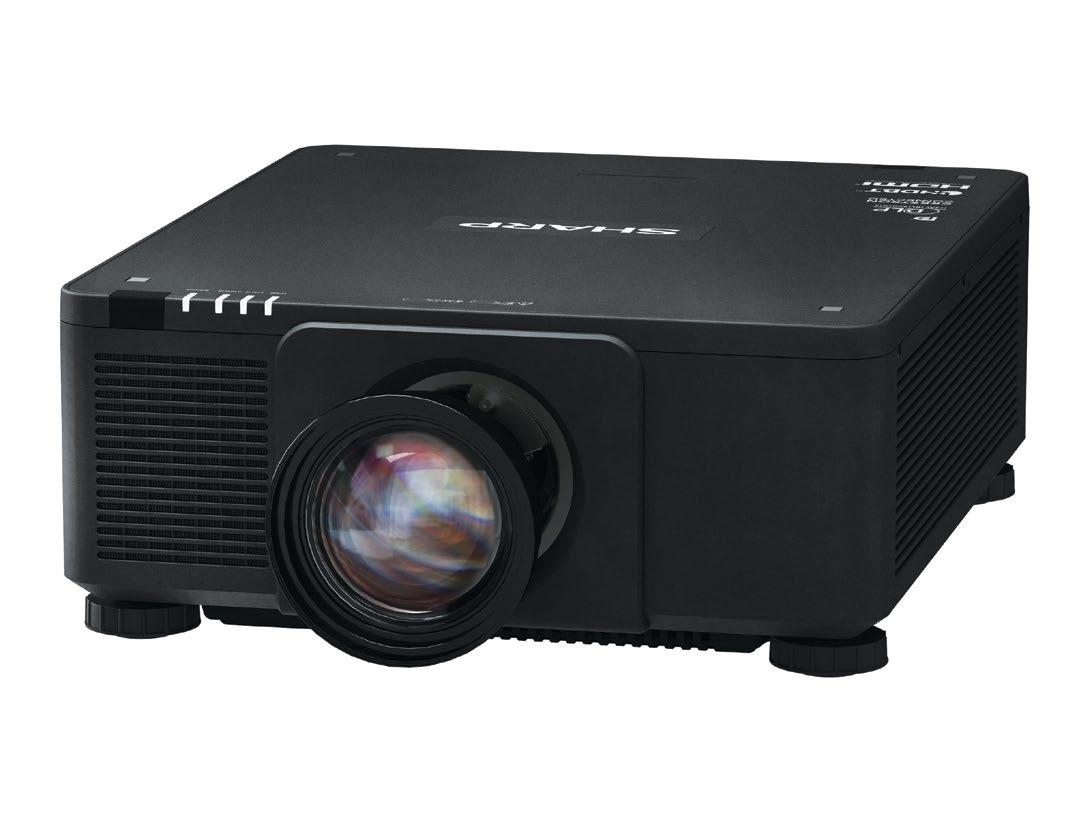
Sharp’s X171Q-W projector offers 4K UHD resolution with brightness levels ideal for spaces that need to overcome ambient light. Its innovative red assist laser produces a vivid red color while the blue laser drives high brightness. The X171Q-W offers reliable operation and allows for easy installation due to six motorized lenses, 360-degree roll free capabilities and motorized lens controls. With its filter free design, edge blending, and DLP technology, it’s ideal for demanding integration applications.
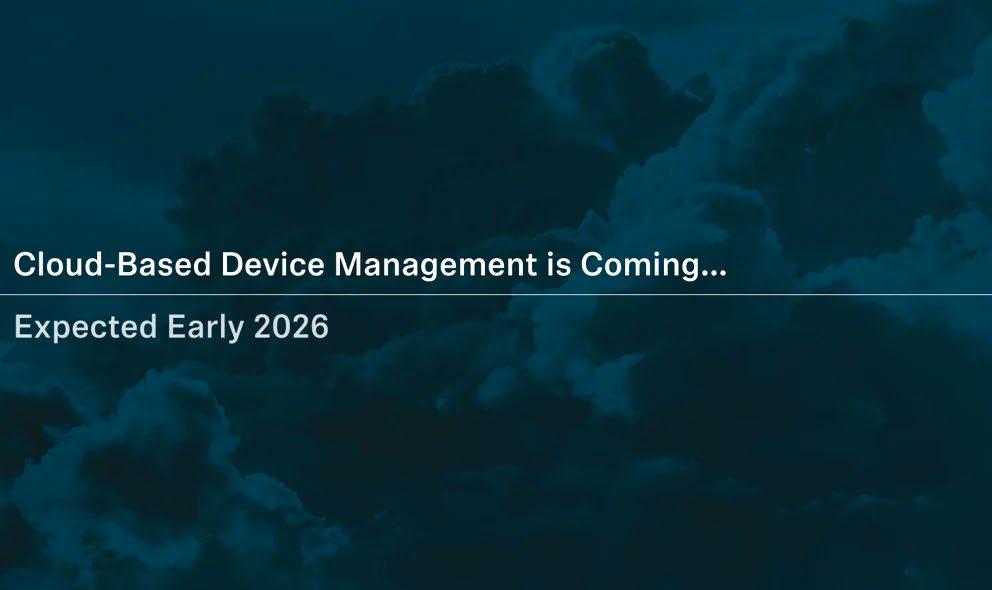
Sennheiser
DeviceHub
Sennheiser
DeviceHub is the company’s upcoming cloudbased software

environments, enabling seamless switching between multiple content sources with 4K clarity. Its intuitive operation allows instructors to engage students with dynamic visuals and flexible presentations, both in-room and remote. When paired with a compact yet powerful projector like the Barco G50, educators unlock an ideal solution that creates an interactive, future-ready learning experience for today’s classrooms.
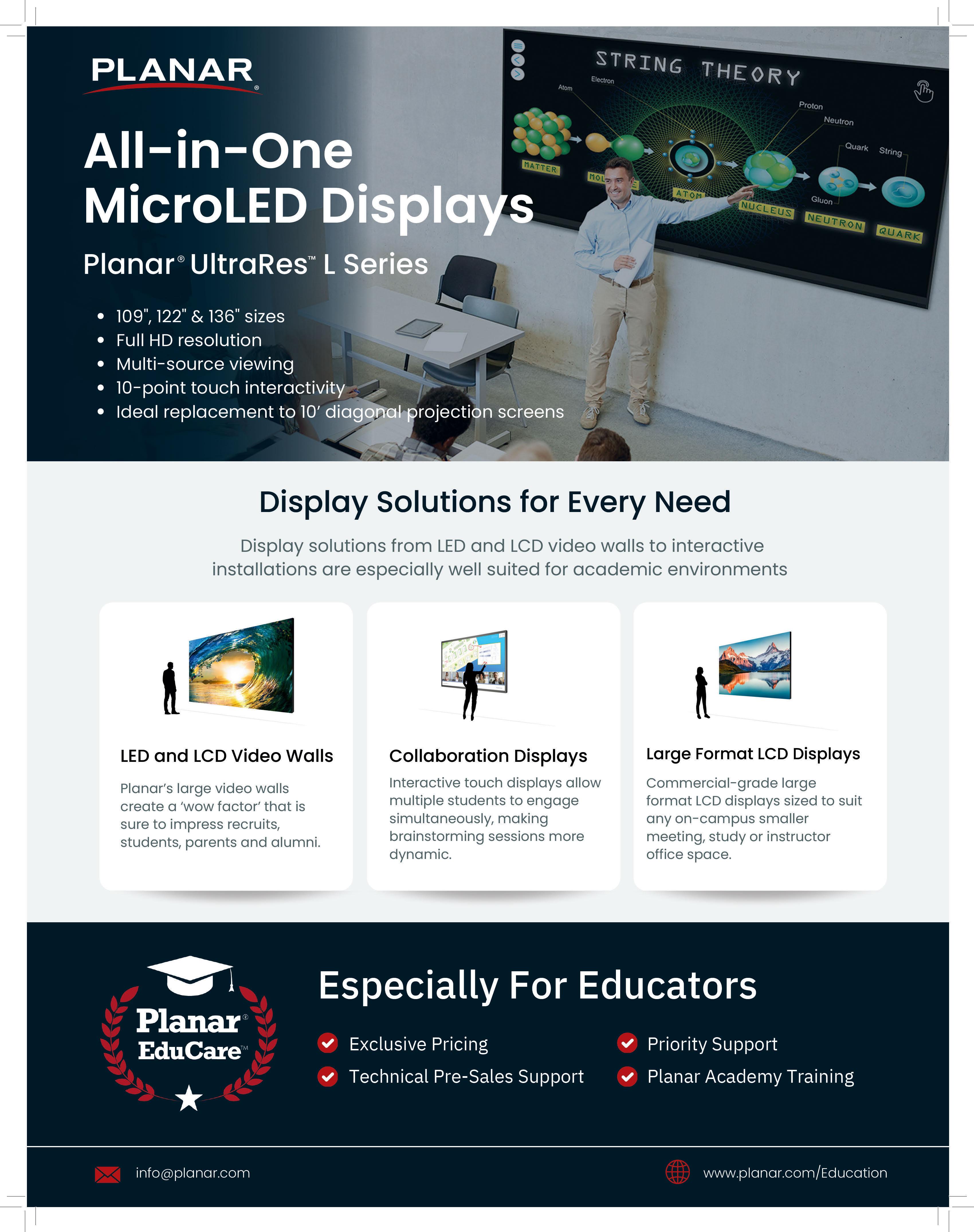
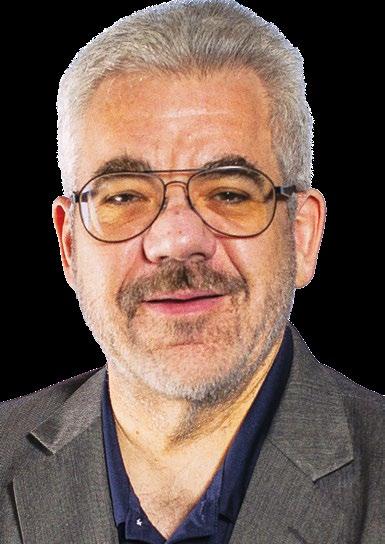
The videoconferencing giant’s commitment to AI is turning heads.
By David J. Danto
Iwish it weren’t true, but there are some shallow people in the world. They profess love, marry, then years later trade in a spouse for a trophy. Maybe the issues felt exhausting. Maybe the grass looked greener. Whatever the rationale, they move on and don’t want to hear criticism about it. That analogy keeps popping into my head as Zoom writes its next act.
Zoom is clearly pursuing a new relationship, an AI-first work platform that promises to move us from conversation to completion. The pitch is assistants that don’t just summarize meetings but fetch data, trigger workflows, and hand back finished steps.
On paper, that aligns with a world currently headover-heels for anything labeled “AI.” The question isn’t whether the ambition is big enough. It’s whether Zoom is bringing its past relationships along for the ride—or quietly leaving them for the new trophy wife.
Romancing the Strategy
Let’s start with the ceremony around the strategy. From what I heard, as I wasn’t invited, this year’s Zoom
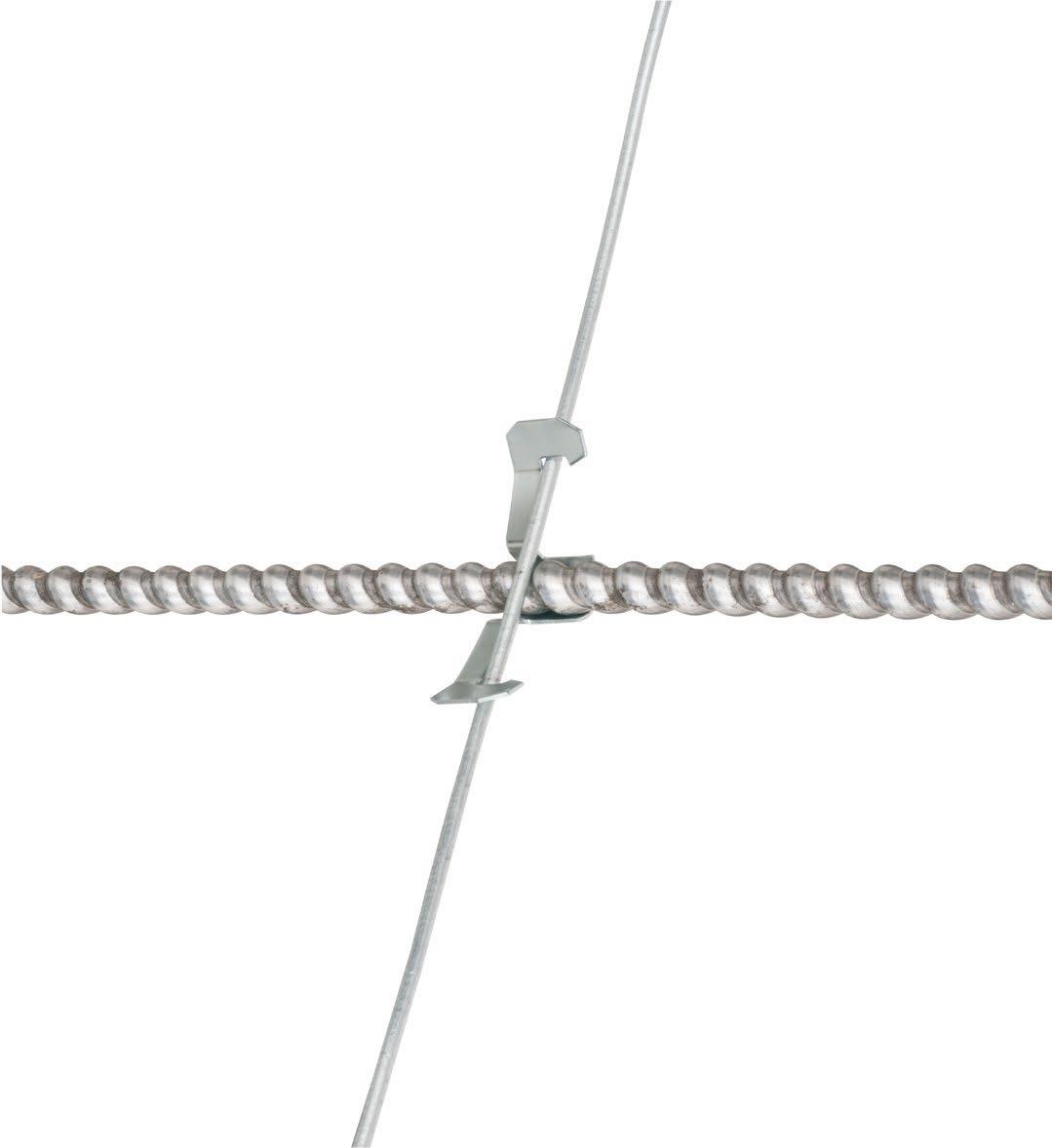
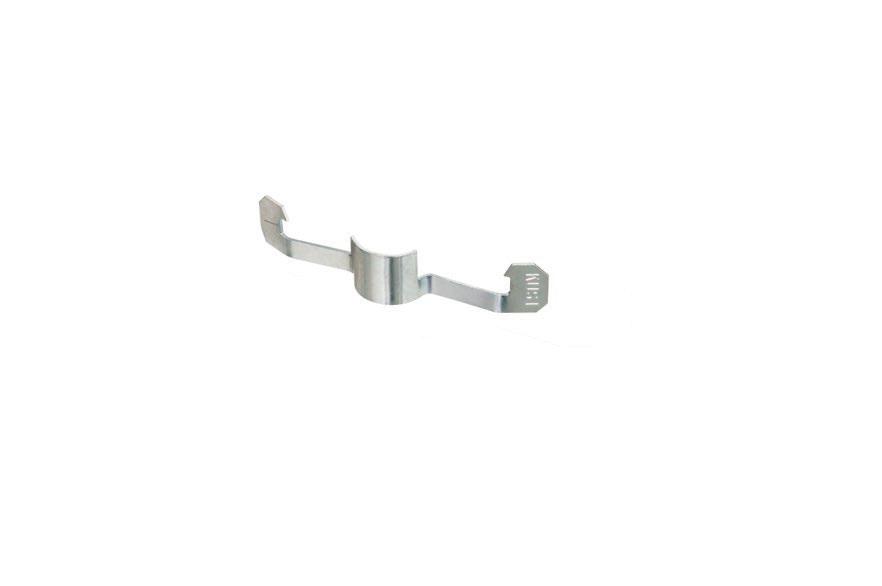
Perspectives sessions were tight, confident, and future-focused. (The guest list did seem to lean more toward LEGO minifigures predisposed to singing “Everything Is Awesome” than anyone who would say, “Wait a second …”)
The serious point is that when access narrows, so does healthy friction. Minimize diverse voices and the hard questions don’t get asked, the awkward tradeoffs don’t get pressure-tested, and organizations can be blindsided. It’s happened plenty before.
On substance, the Zoom pivot has muscle. Zoom is stitching meetings, phone, contact center, events, docs, whiteboards, and employee engagement into one fabric—and then laying a memory and intelligence layer across it. Think assistants that can retrieve across Zoom and third-party apps, open tickets, nudge owners, and return artifacts instead of bullet points.
There are vertical offerings for clinicians and frontline workers. The channel motion is evolving from resale to services, encouraging partners to deliver post-sales value. Add to that the announcement that a seasoned CMO, Kimberly Storin, is finally back in the chair to reset positioning and “bring the swagger back.”
Taken together, that’s not tinkering. It’s a full-body transformation aimed at measurable productivity.
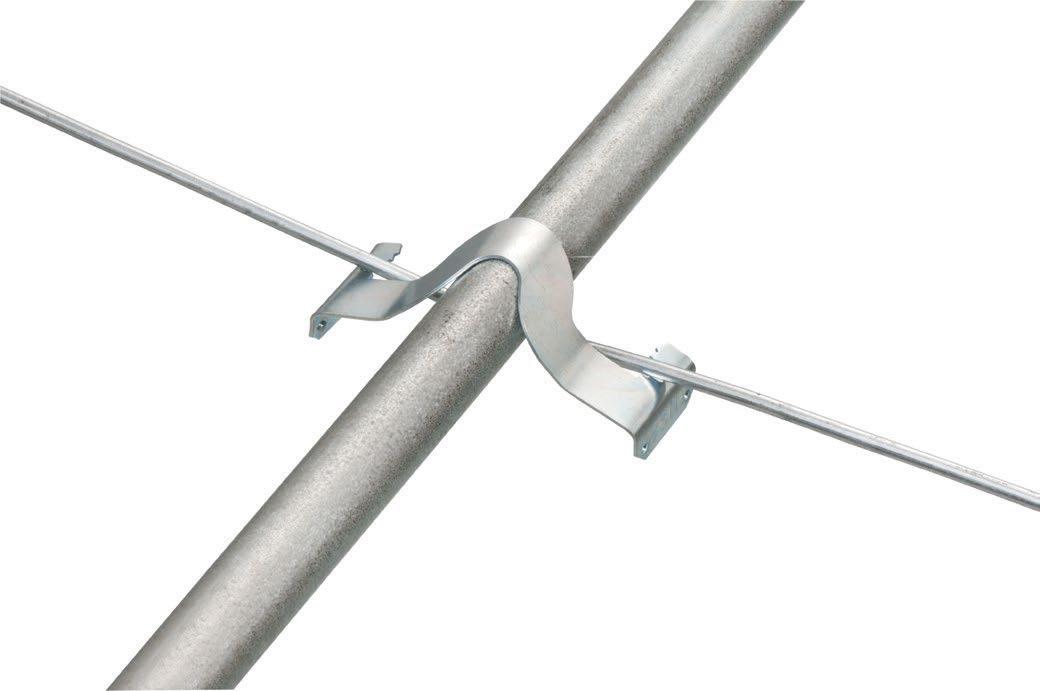

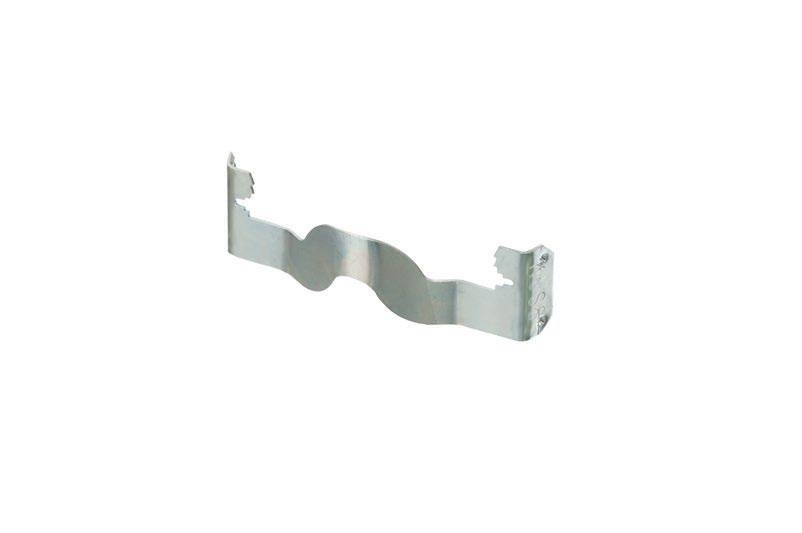
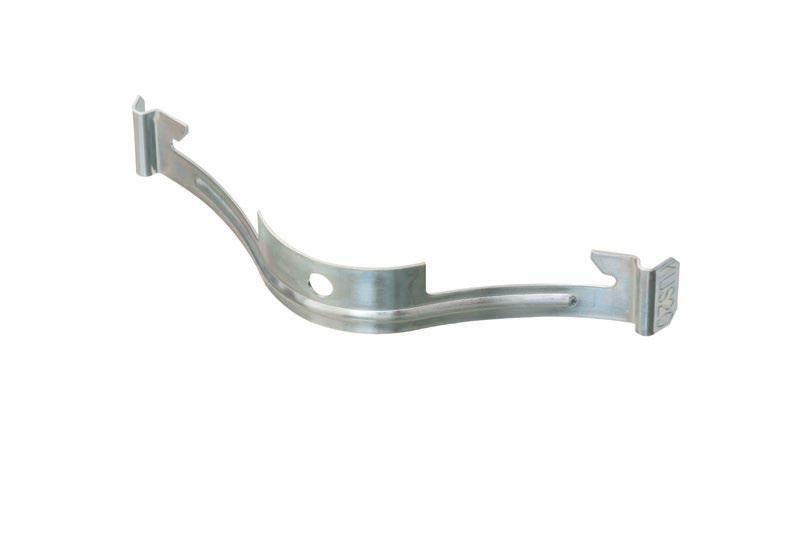
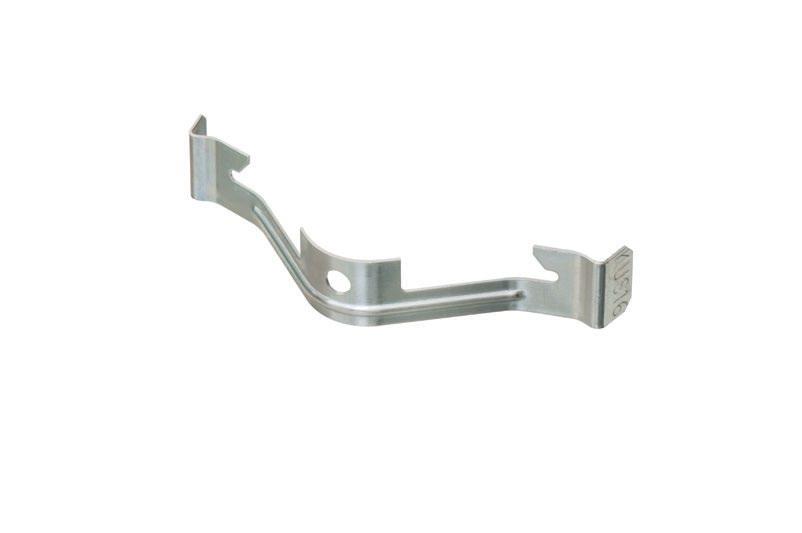
If Zoom can consistently close loops— here’s the decision, here’s the doc, here’s the ticket, here’s the customer update enterprises will pay real money for that. If the AI layer proves both trustworthy and

economical, it reinforces the whole stack.
That’s the best case, and it’s credible. But the first spouse—happy video collaboration—and all her many friends are puzzled. Not only do they feel dumped for the new relationship, but the annual celebration of that marriage has turned into an online TV show.
Zoomtopia, once an undeniable must-attend for customers, partners, and media, was now a 100% virtual event this year. Everything went virtual during the pandemic for obvious reasons, but Zoom seems to be one of the only entities that hasn’t whole-heartedly re-embraced the value of in-person time now that it’s safe again.
Virtual is efficient. It is accessible. But it’s not a substitute for community. You can simulcast a message; you can’t stream serendipity.
The old Zoomtopia formula—a dense mix of roadmap reveals, hallway debates, product petting zoos, and no small amount of showbiz—created momentum that carried into budgets and deployments. People came home with stories, not just notes.
A purely virtual show, no matter how polished, reinforces the feeling that the first relationship was never really that important to Zoom. Did “work happy” mean they wanted us to work happy, or just that they were happy the hype was working long enough to embrace the next hype storm?
Virtual is fantastic for distributing announcements widely and quickly. But “planning” a “virtual celebration” reads as the opposite of celebration. Honestly, I made no plans to attend. If something noteworthy happened, I knew I could watch the replay. There’s no serendipity in a canned online event, especially when it feels like a second straight year of all-AI, all the time.
Expanding into a broad work platform is the right ambition, but it risks narrative drift if the community senses that the core experience is now only a supporting actor in an AI blockbuster.
That shift also lands awkwardly next to the channel transformation Zoom discussed. Partners thrive on in-person time, the kind Zoomtopia used to enable. If you’re asking partners to carry a bigger revenue share and a richer services envelope, removing the best venue for shared learning and relationship-building sends a mixed signal. It says “we need you more than ever” and “see you on the stream” in the same breath.
There’s a message-discipline risk, too. Zoom’s magic wasn’t only codec efficiency. During its insurgent phase, teams could sneak Zoom into a pilot and look like heroes in an afternoon. That permission structure— fresh, pragmatic, fun—made it feel like a movement, not merely a product.
Expanding into a broad work platform is the right ambition, but it risks narrative drift if the community senses that the core experience is now only a supporting actor in an AI blockbuster. The antidote isn’t another keynote slide. It’s empathetic, hands-on encounters where the future is experienced, questioned, and improved in real time.
To be crystal clear, this isn’t a plea to freeze progress. AI isn’t a side quest for collaboration vendors, it’s the main quest. The critique is about how Zoom is prosecuting it.
Right now, the most visible ceremonies feel optimized for message control, not movement building. Movements are messy. They require inviting people who poke holes, file bugs in the lobby, and say the naming doesn’t make sense and the workflow takes too many extra clicks. Movements produce fanatically loyal customers who go back to their organizations and make budgets happen.
There’s a version of this story where Zoom pulls off something rare: maintaining the best meeting experience and continuing to improve in-room experiences while also becoming a credible AI workflow platform. I want that version. It’s good for users, good for partners, and good for a market that needs competition to stay honest.
But the path runs straight through the community that got Zoom here. Don’t snub them. Invite them back into the room, literally and figuratively. Give them demos you can’t pause, questions you can’t prescreen, and surprises that make people text their teams mid-keynote.
Ignoring the first spouse carries risk. Canceling the in-person celebration amplifies it. Claiming “collaboration is mature” when anyone who actually uses it knows it isn’t—that’s the biggest risk of all. It nudges customers toward competitors, and the data is starting to show it. “If it’s unimportant to them, why should it be important to me?” is a very logical decision being played out in enterprises today.
belonging, and sycophants over diverse thought, those not aligned with what’s labeled “new” will reasonably infer they’re being relabeled “old and unimportant.”
One of my industry contacts was recently mentioned in a Zoom chat room I’m in. When I asked him if he saw it, he said no, he didn’t see the notice
amongst the dozens of other useless notices he gets and doesn’t use from Zoom, mostly about AI notes on his calls. Mature collaboration indeed.
David J. Danto is the principal analyst with TalkingPointz and director of emerging technology for the IMCCA.


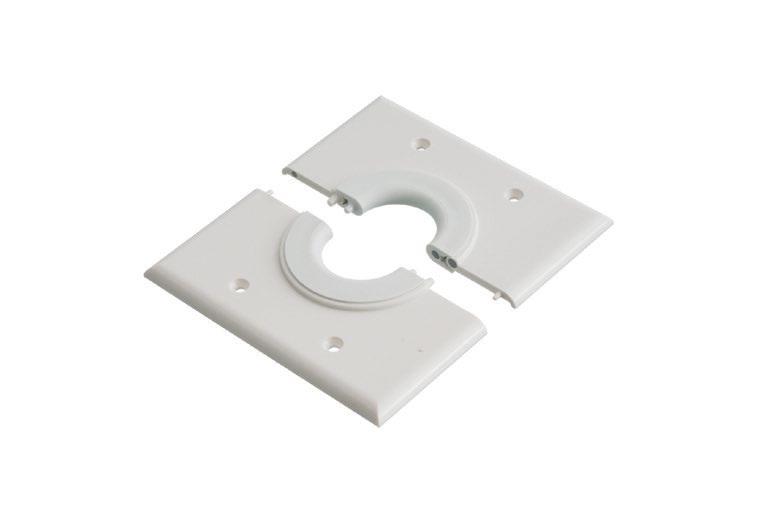






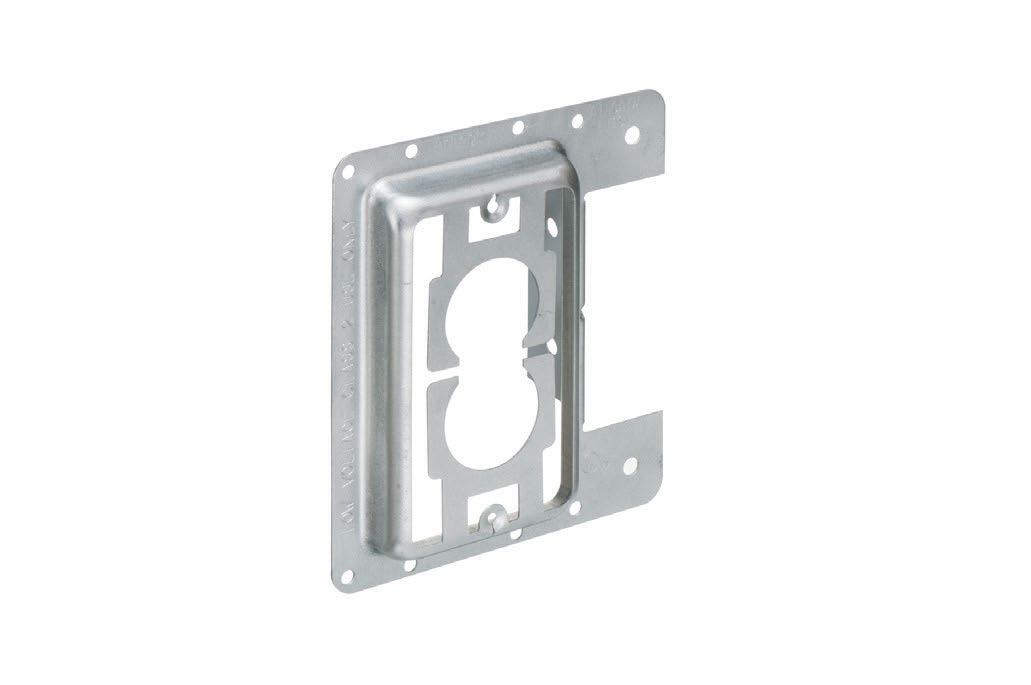
Zoom deserves genuine well-wishes on this transformation. The ambition is real, and done right, it could be important. But if the company keeps prioritizing AI over collaboration, broadcast over

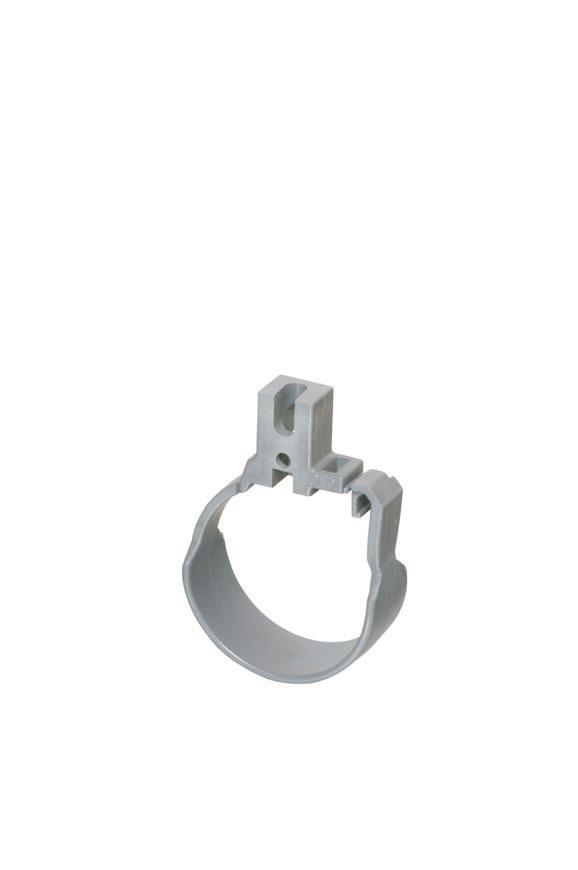

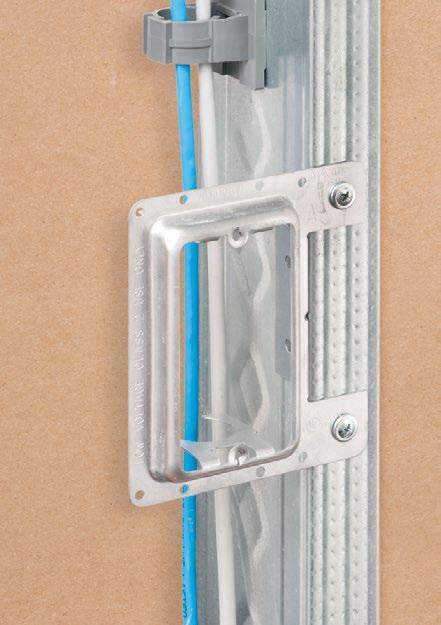



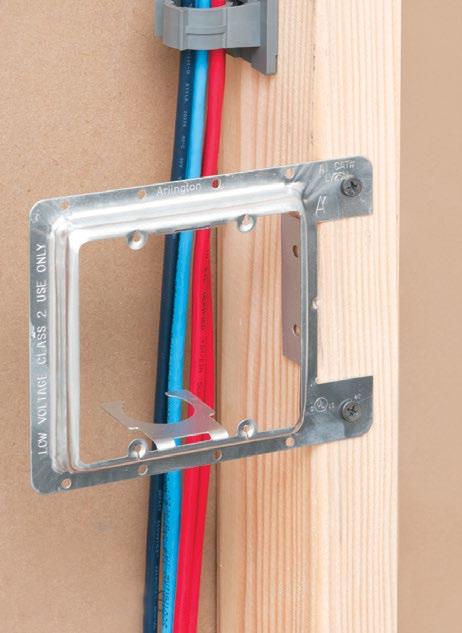


Building on the success of the recent Aero moving light fixture, the compact and lightweight pro-grade Aero Mini fixture utilizes a single
100-watt, 9000K white COB LED on a liquid-cooled system for optimum temperature control and nearsilent operation. The Aero Mini is ideal for any environment requiring a mover at a competitive price point, such as churches, schools, theaters, and corporate events. Features include a dimmer,
strobe, focus, color wheel with seven colors plus open white, and a five-facet prism with rotation in either direction. A rotating gobo wheel with indexing capability can accommodate six gobos. Housed in a steel H-frame chassis with ABS plastic outer surround, the IP20-rated Aero Mini features a standard U-clamp with quarter-turn cam locks for secure mounting. The fixture’s software has preprogrammed shows for instant operational success and supports a variety of control options.



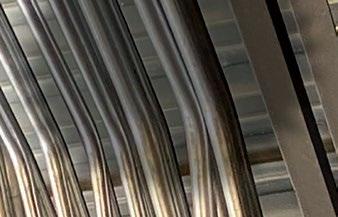
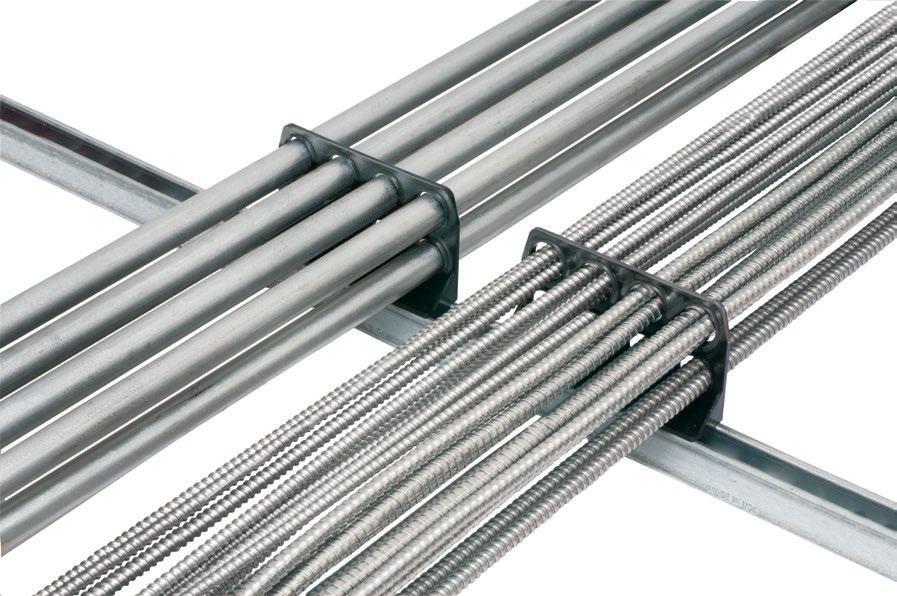


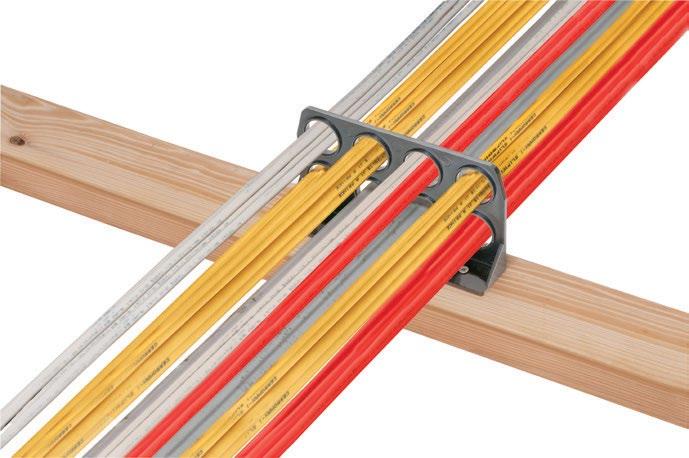
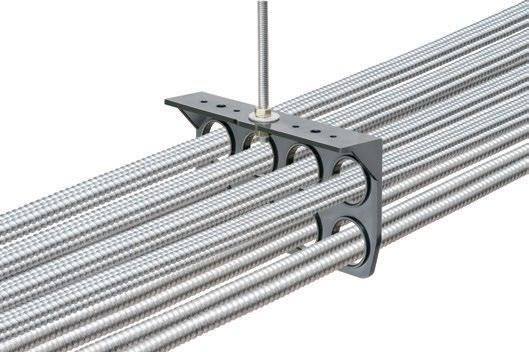
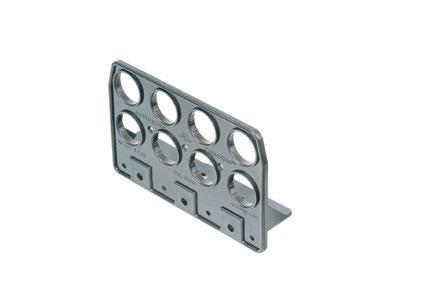




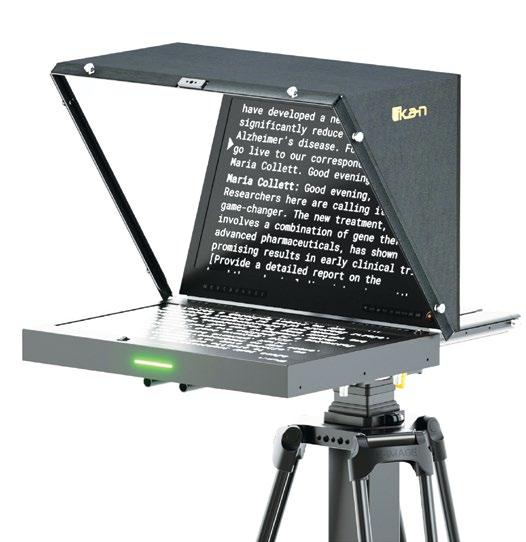
The Aura PT419W-NDI prompter combines full NDI streaming with PoE++ power delivery, an innovation that streamlines production workflows and redefines prompter capabilities. A single Ethernet cable delivers power, data, NDI streaming, and tally control, so say goodbye to complex setups. Designed for professional environments where scripted delivery must feel natural and seamless, the prompter’s NDI encoding/decoding seamlessly integrates with modern IP-based workflows, while maintaining compatibility with traditional connections (3G-SDI, HDMI, composite, and VGA). The system features a 19-inch widescreen monitor and is also available with a talent monitor,
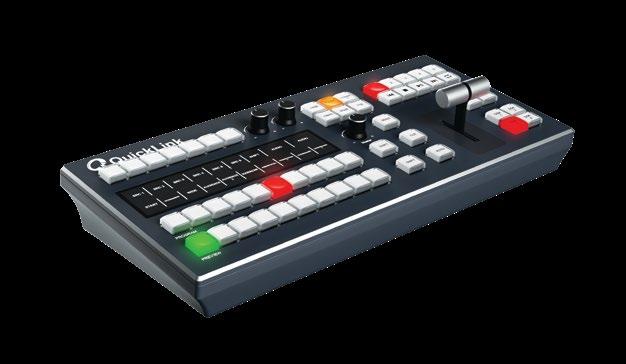
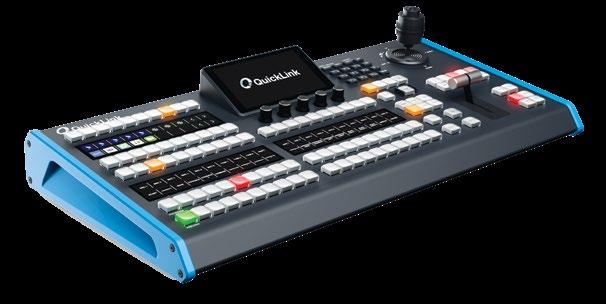
The StudioPro Proton and StudioPro Fusion control panels are intuitive, all-in-one control surfaces. Proton is built for mobile and small-scale productions, such as education, houses of worship, and webcasting. With a 54-button layout (27 of which are fully configurable), Proton offers tactile, precise control over live switching, transitions, and audio mixing. Fusion is QuickLink’s flagship control solution, with 113 buttons (80 of which are fully customizable), built-in 5.5-inch touchscreen display, dynamic tri-color backlit LCD labels, 4D joystick for fine-tuned PTZ camera control, and an ergonomic T-Bar with 9-level LED feedback. Built with a high-grade anodized aluminum alloy, Fusion is engineered for long-term durability and top-tier performance in demanding broadcast environments. Powered by Bitfocus Companion, both control panels enable native StudioPro control and integrate with more than 600 third-party production devices across the production ecosystem.
1. Publication Title: Systems Contractor News
2. Publication No.: 15093
3. Filing Date: 26/9/2025
4. Issue Frequency: Monthly
5. No. of Issues Published Annually: 12
6. Annual Subscription Price: Requester
7. Complete Mailing Address of Known Office of Publication: Future US Inc., 130 West 42nd Street, 7th FL, New York, NY 10036 Contact Person: Shana Murik, 212 378-0448
8 Complete Mailing Address of Headquarters or General Business Office of Publisher: Future US Inc., 130 West 42nd Street, 7th FL, New York, NY 10036
9. Full Names and Complete Mailing Addresses of Publisher, Editor and Managing Editor: Publisher: Adam Goldstein, 130 West 42nd Street, 7th FL, New York, NY 10036; Editor: Mark Pescatore, 130 West 42nd Street, 7th FL, New York, NY 10036; Managing Editor: Wayne Cavadi, 130 West 42nd Street, 7th FL, New York, NY 10036
10. Owner: Future US Inc. (Future PLC), 130 West 42nd Street, 7th FL, New York, NY 10036
11. Known Bondholders, Mortgagees, and Other Security Holders: None
12. Tax Status: Has Not Changed During Preceding 12 Months
13. Publication Title: Systems Contractor News
14. Issue Date for Circulation Data: September-25



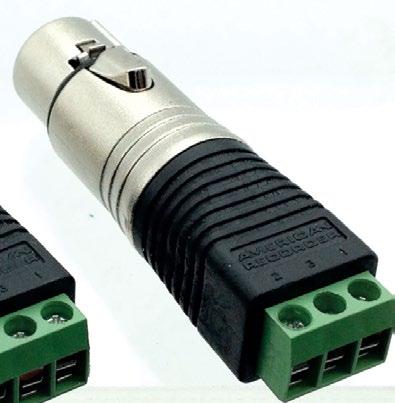
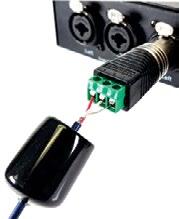
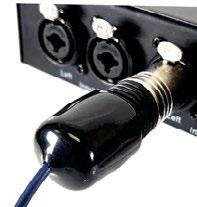
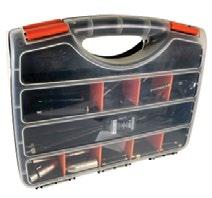












15. Extent and Nature of Circulation
a. Total Number of Copies (Net press run)
b. Legitimate paid and/or requested distribution (by mail and outside the mail)
(1) Outside-county paid/requested mail subscriptions stated on PS Form 3541
(2) In-county paid/requested mail subscriptions stated on PS Form 3541
(3) Sales through dealers and carriers, street vendors, counter sales, and other paid or requested distribution outside USPS
(4) Requested copies distributed by other mail classes through the USPS
c. Total paid and/or requested circulation
d. Non-requested distribution (by mail and outside the mail)
(1) Outside-county non-requested copies stated on PS Form 3541
(2) In-county non-requested copies stated on PS Form 3541
(3) Non-requested copies distributed through the USPS by other classes of mail
(4) Non-requested copies distributed outside the mail
e. Total non-requested distribution
g.
16. Electronic Copy Circulation
a. Requested and Paid Electronic Copies
b Total Requested and Paid Print Copies (Line 15c) + Requested/Paid Electronic Copies
c Total Requested Copy Distribution (Line 15f) + Requested/Paid Electronic Copies
d. Percent Paid and/or Requested Circulation (Both Print & Electronic Copies)
17 Publication of Statement of Ownership for a Requester Publication is required and will be printed in the November 2025 issue of this publication.
18. Signature of VP, AV Technology Group: Adam Goldstein, September 26, 2025. I certify that all information furnished on this form is true and complete. I understand that anyone who furnishes false or misleading information on this form or who omits material or information requested on the form may be subject to criminal sanctions (including fines and imprisonment) and/or civil sanctions (including civil penalties).

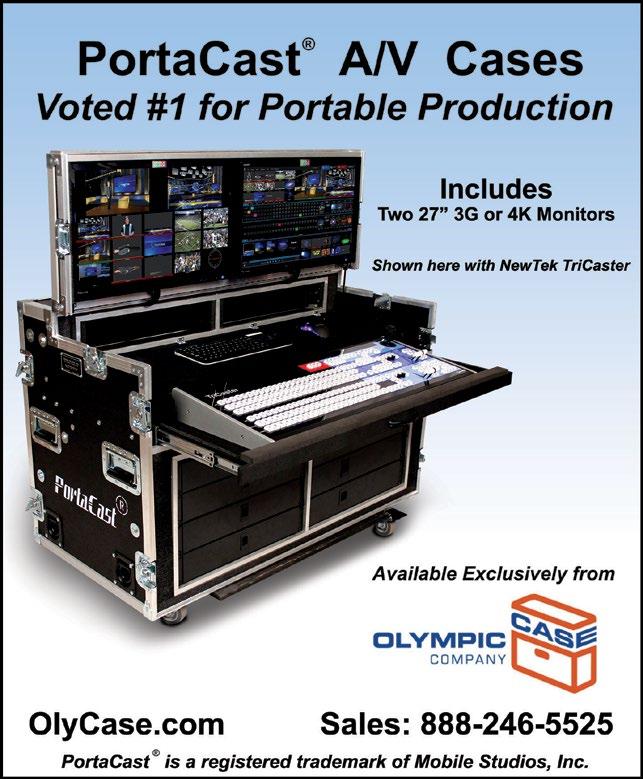


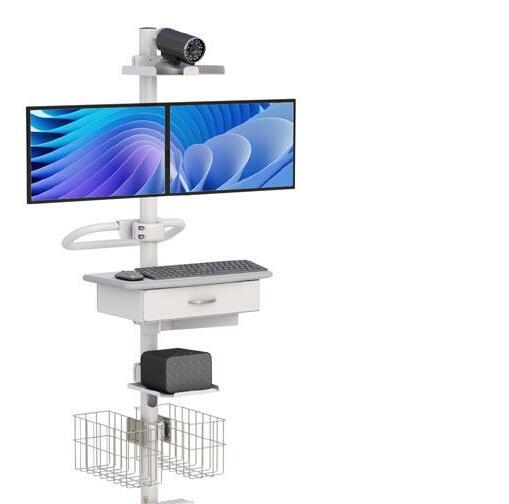

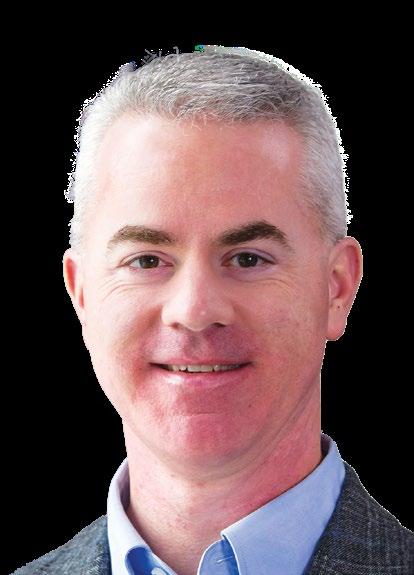

If you're focused on the future, sustainability is key.
By Patrick Cuddy
We are amid global change. We can either collectively adapt or choose to ignore it, but environmental change is happening. But can one person make an impact?
The answer is a resounding yes. Think about the success of household names like Tesla, Virgin, Google, Meta, and Apple? Or our own industry giants like Crestron, Shure, Diversified, or AVI-SPL? Each of these companies started with an individual’s idea and grew into what we know today. The people leading during those early days were filled with the ambition to do something different and push forward.
I point this out because sometimes we join an industry at the point where big companies are household names without knowing the legacy of effort required to make them so. Sometimes, we see success and don’t know what made it happen, so we may just accept it or expect it.
Yet, it is often the result of years of little wins that coalesce into something greater than the sum of its parts. Think of the Sphere in Las Vegas or any amazing immersive experience you have seen. There is no one thing that makes the impact—it’s all the “one things” together.
Back in 2017, I joined the AV industry from the outside with a fresh set of eyes, a broad and diverse skillset, and a background in electrical and industrial environments. I heard these leading company names and accepted their greatness. Years later, I have learned that a series of little impacts are what helped make them (and continue to make them) great.
My journey to immerse myself in this industry involved a lot of learning. I was fortunate to have someone who believed in my core skills enough to take a chance on ambition and grit, to help them build something new. But I realized that to be successful it was going to take more. So, I asked a ton of questions, attended countless training courses, met a world of amazing people, and worked to obtain my CTS just so people would take my phone call.
Then it started clicking, so I continued to learn, and that led me to earning my LEED Green Associate from the U.S. Green Building Council (USGBC). That was the starting point to cultivating a new conversation in our industry, a meaningful step in my
journey that has led to so many new experiences.
At InfoComm 2019, I hosted an accredited course on AV/IT design with LEED. What? A guy who came into an industry two years prior with no experience except wedding DJ work and the high school drama club was now teaching about blending technology and sustainability? Yes, it happened, and it is only due to many people who encouraged and trained me along the way.
“The way forward is to simply start. Challenge the system and your teams to find ways to use less energy or improve product transparency documentation.”
Now, less than a decade later, sustainability has become a main talking point. Bioplastics, life cycle, intentional re-use, and recycling are now being discussed in product design. Single use plastic is nearing its end-of-life, and we are talking more about how less energy equals less heat and what that means about the cooling needs of wherever our AV product sits now.
At InfoComm 2025, there was an entire learning track on sustainability. AVIXA has created the Sustainability Council, sAVe has been established for years, and major companies are now purposefully telling their sustainability story. They are taking purposeful action to reduce packaging waste, build e-waste recycling practices, change raw materials, and more to have a positive impact on future generations.
Customers are also getting involved. HETMA members, consultants, end users, and integrators are now asking manufacturers about corporate social
responsibility (CSR) goals, e-waste, and recycling plans. The phrases cradle-to-grave and cradle-tocradle show up in meetings that aren’t talking about financial planning for children.
These steps forward in our industry are positive. Every step forward affects people: their experience, their quality of life, and their health. Every step forward also affects our planet: using fewer natural resources as well as creating less e-waste and toxic landfill environments. And every step forward affects profit: longstanding customer gains, potential for efficiency in supply chain, less materials needed for packaging, and much more.
I see multiple individuals creating impacts every day. They are sometimes in a vacuum, sometimes in a group, but they are taking small steps to help change happen and lead us to a collective substantial impact.
The way forward is to simply start. If you are an integrator, ask one question about the sustainability of your manufacturer partner—packaging, pre-builds, kitting options, raw materials used—whatever fits your need. If you are a manufacturer, ask your suppliers about raw materials composition. Challenge the system and your teams to find ways to use less energy or improve product transparency documentation.
If you are an end user, expect and hold your partners accountable to be better. Communicate openly about your challenges and needs so integrators and manufacturers can partner with you to address them.
These impacts are not always achieved in a short time frame, but as an industry friend told me, “We’re doing this for future generations. It may cost us a little more today, but we are saving in the long run and that is the right focus. We’ve been sustainable since before sustainability was sexy.”
Patrick Cuddy, CTS, LEED GA, is the director of strategic accounts for StarTech.com and a member of the AVIXA Sustainability Council and Sustainability Council Best Practices Committee. Contact him at patrick.cuddy@startech.com.

